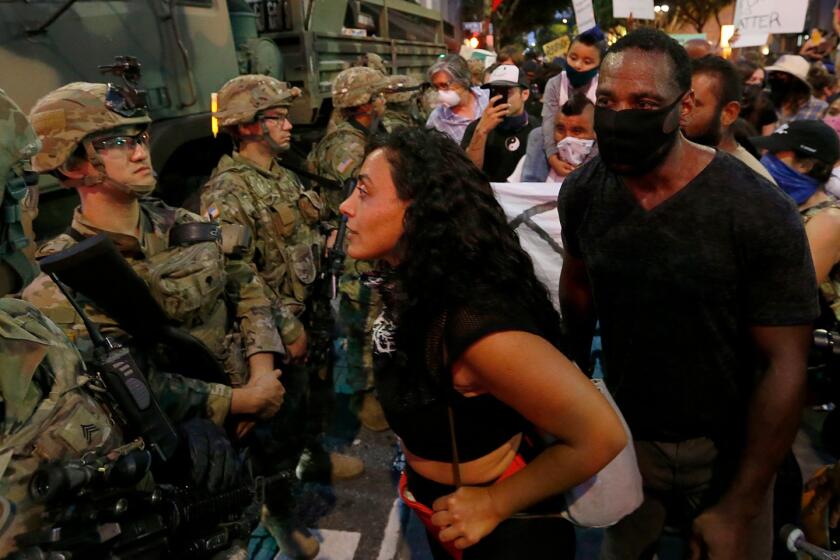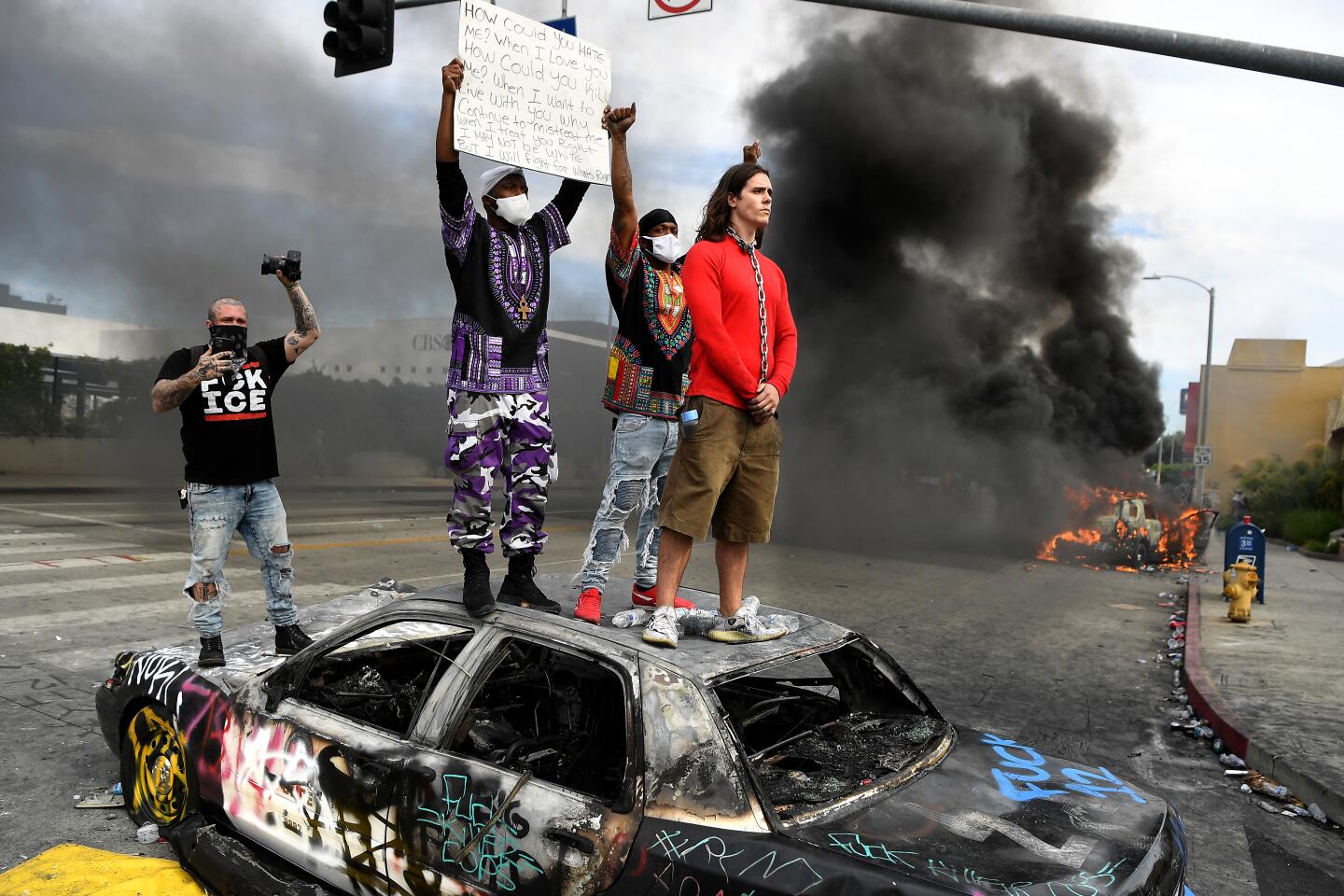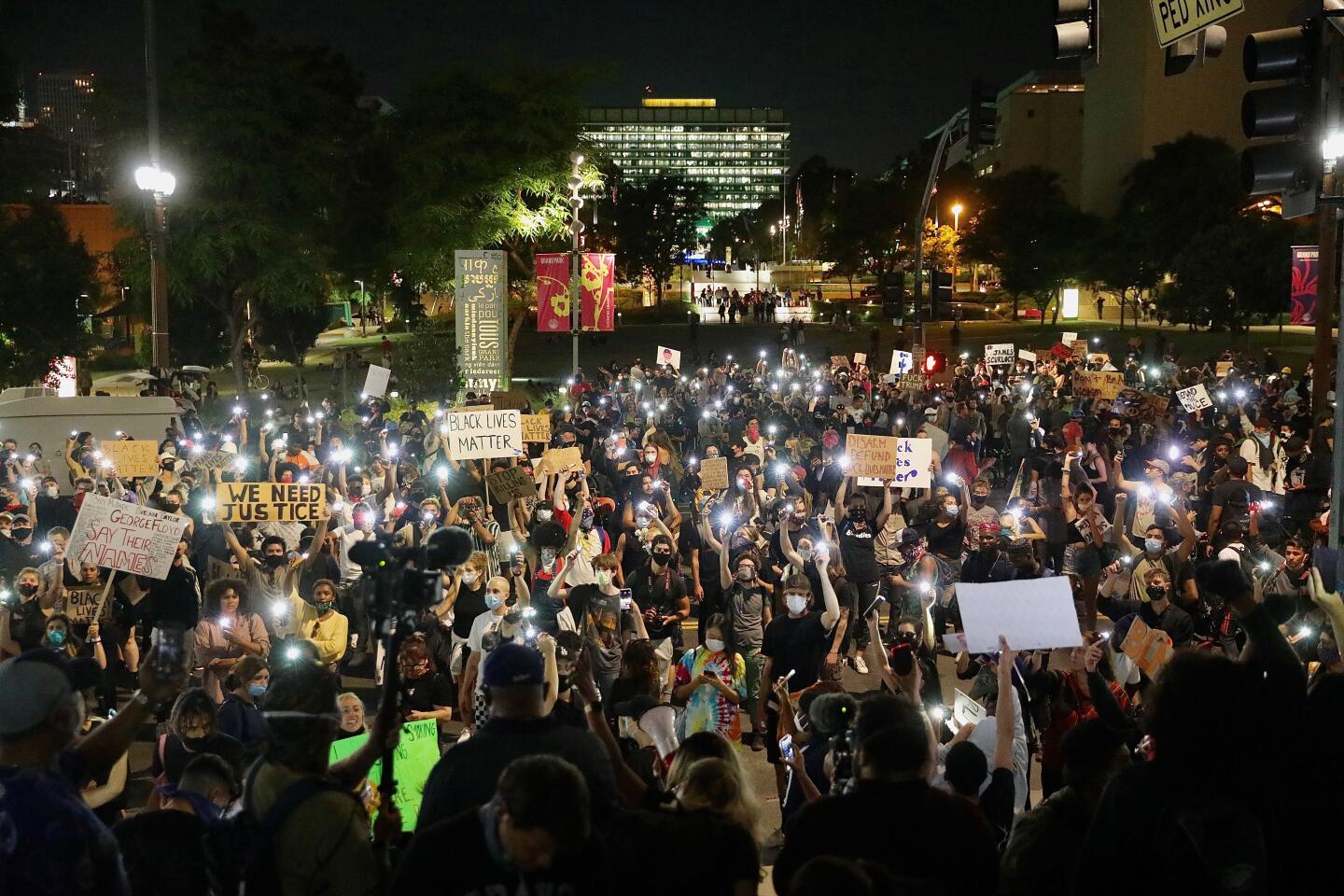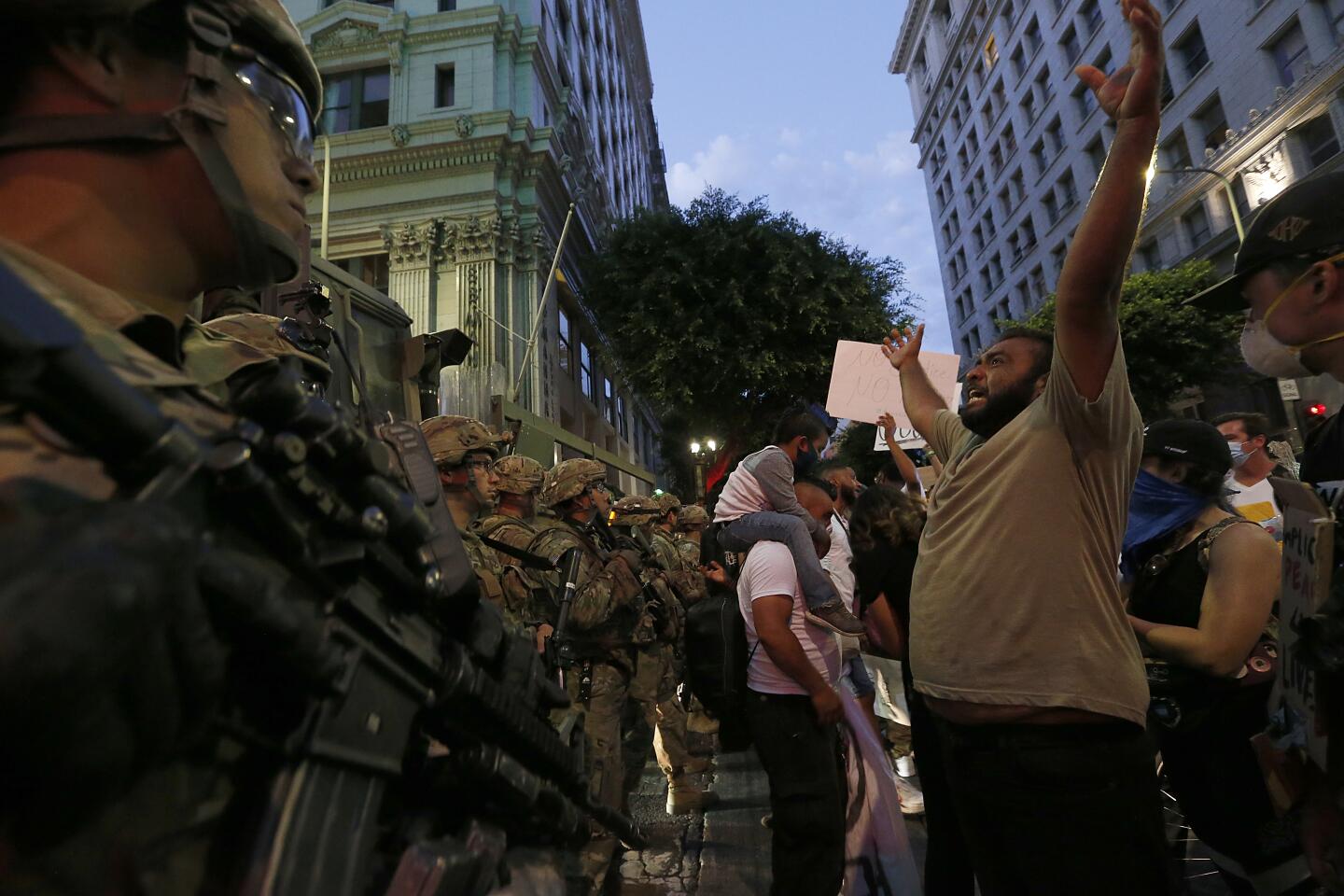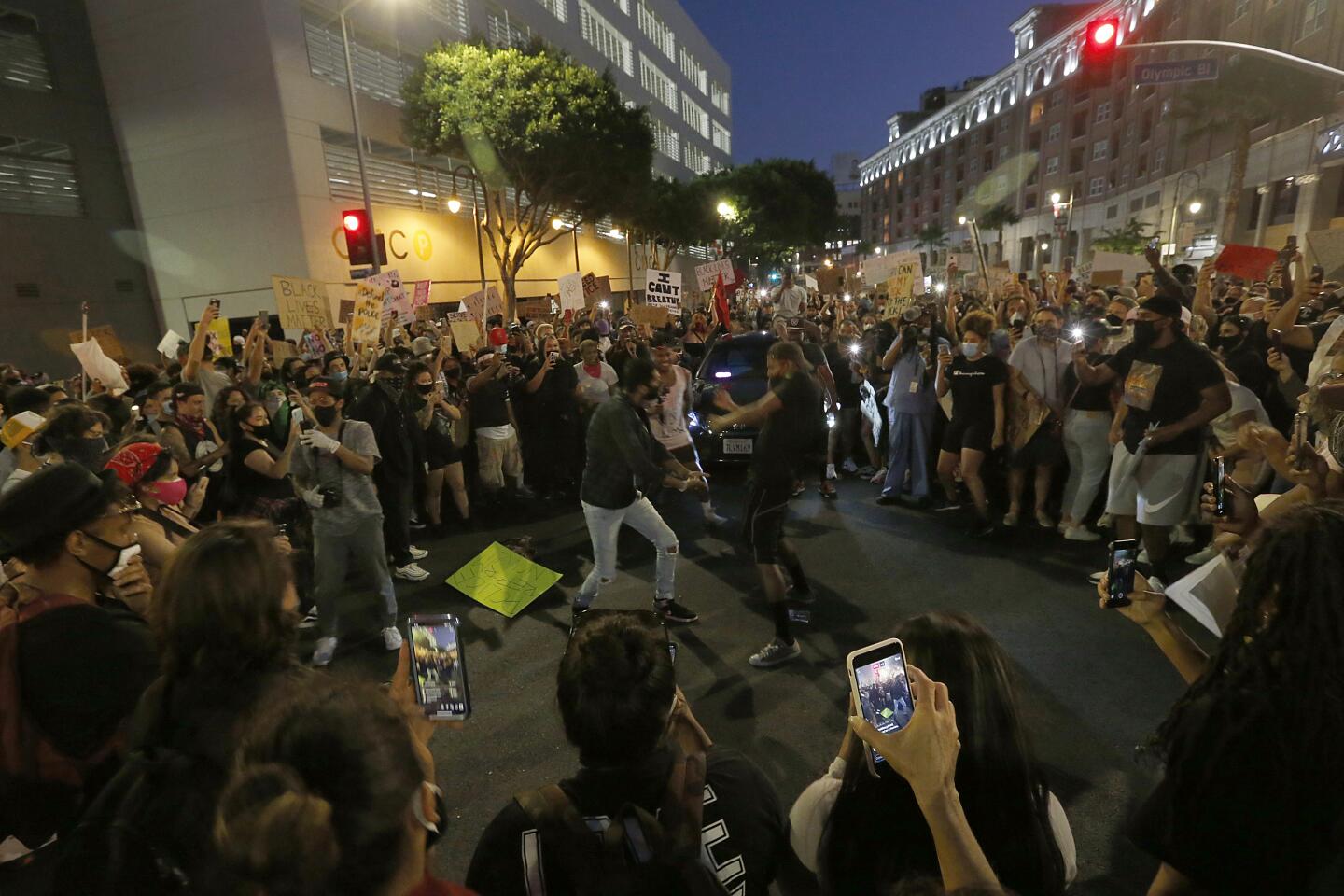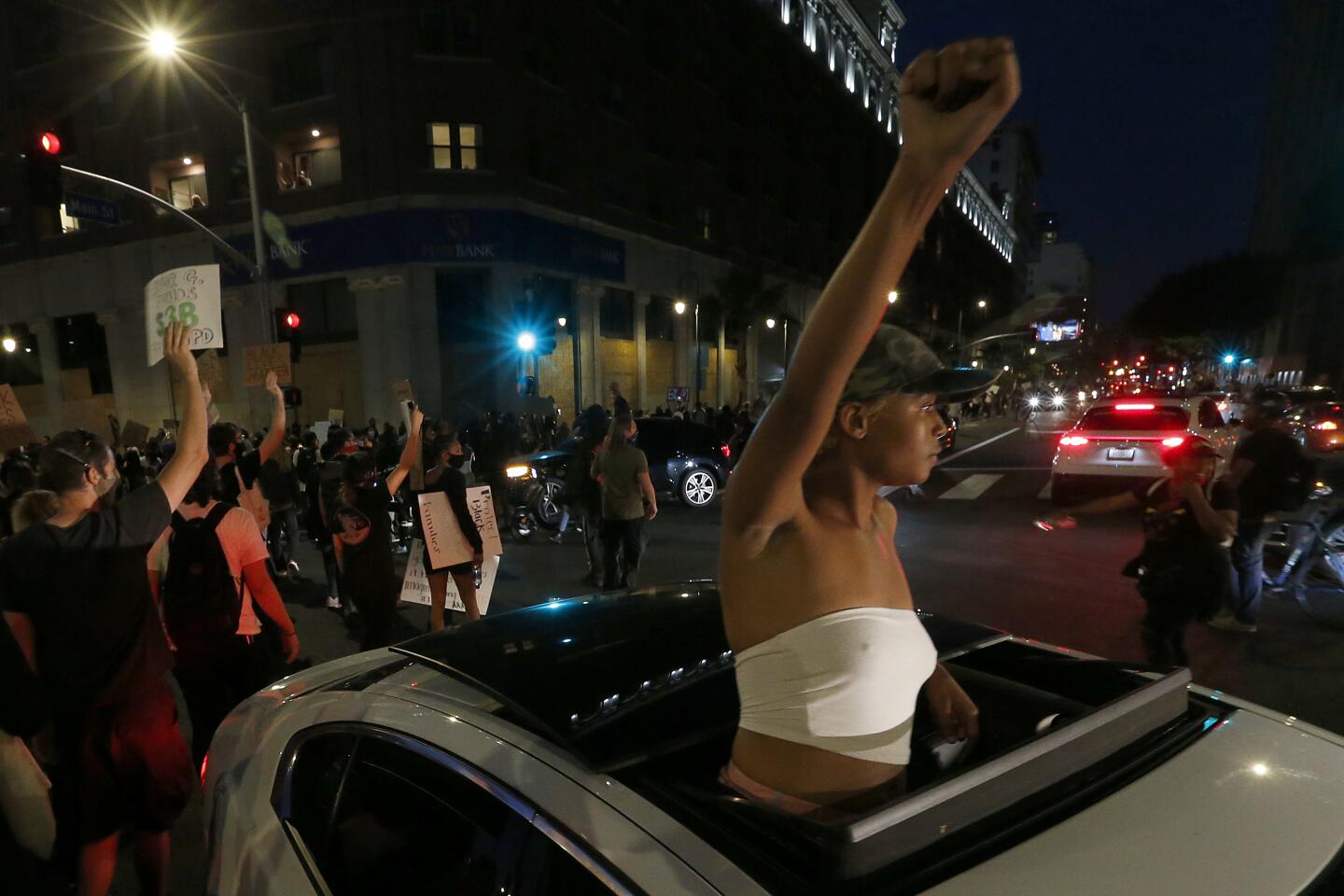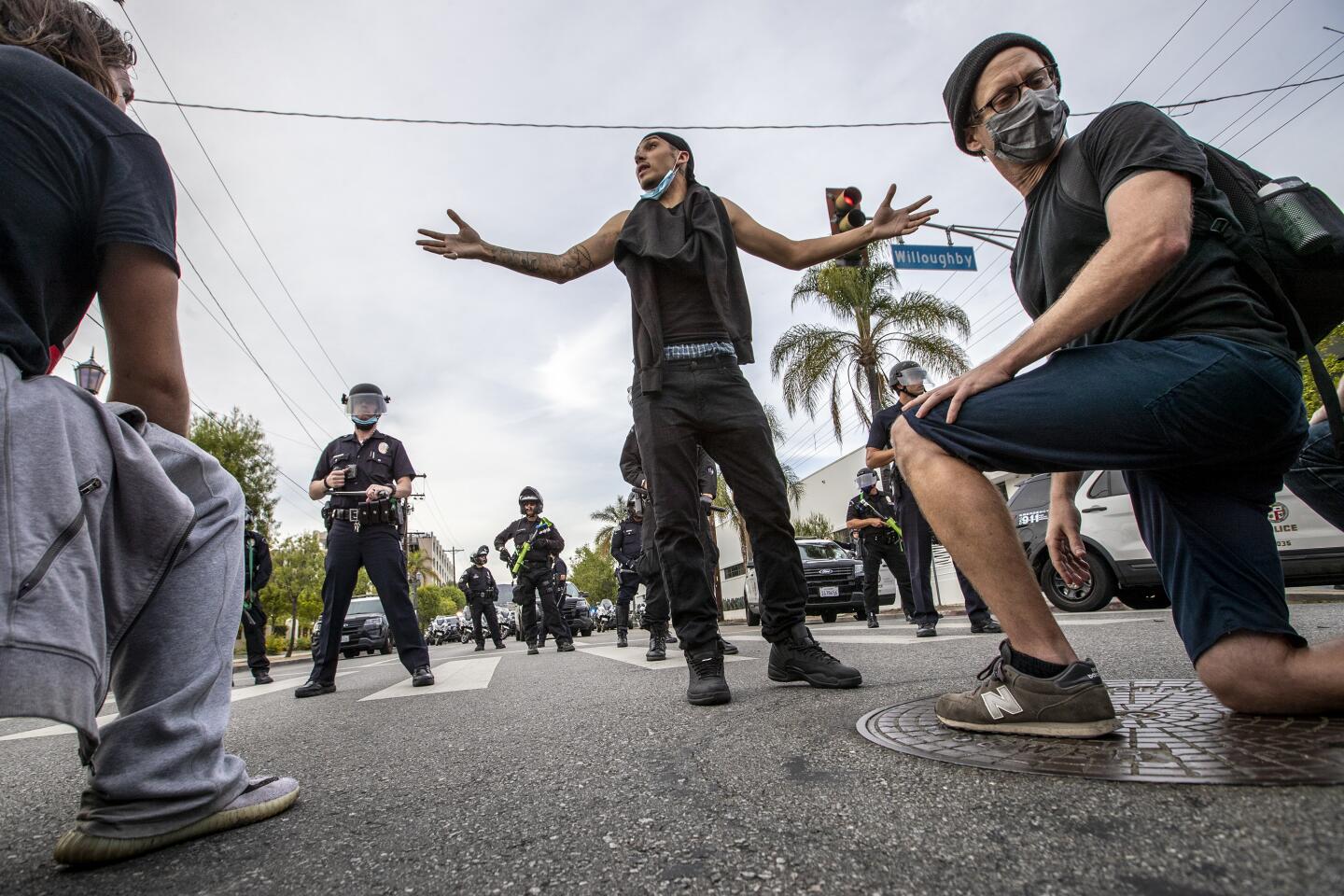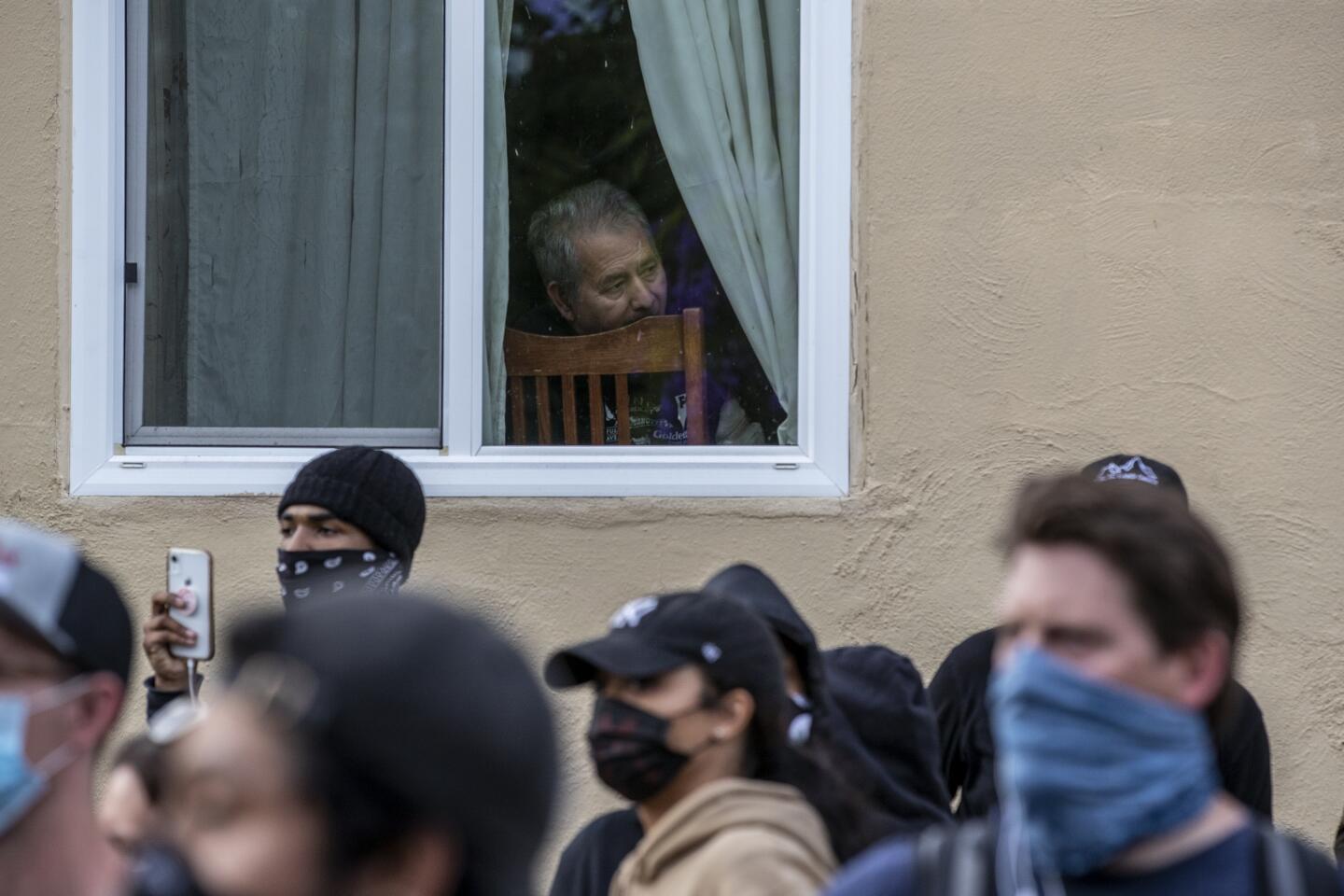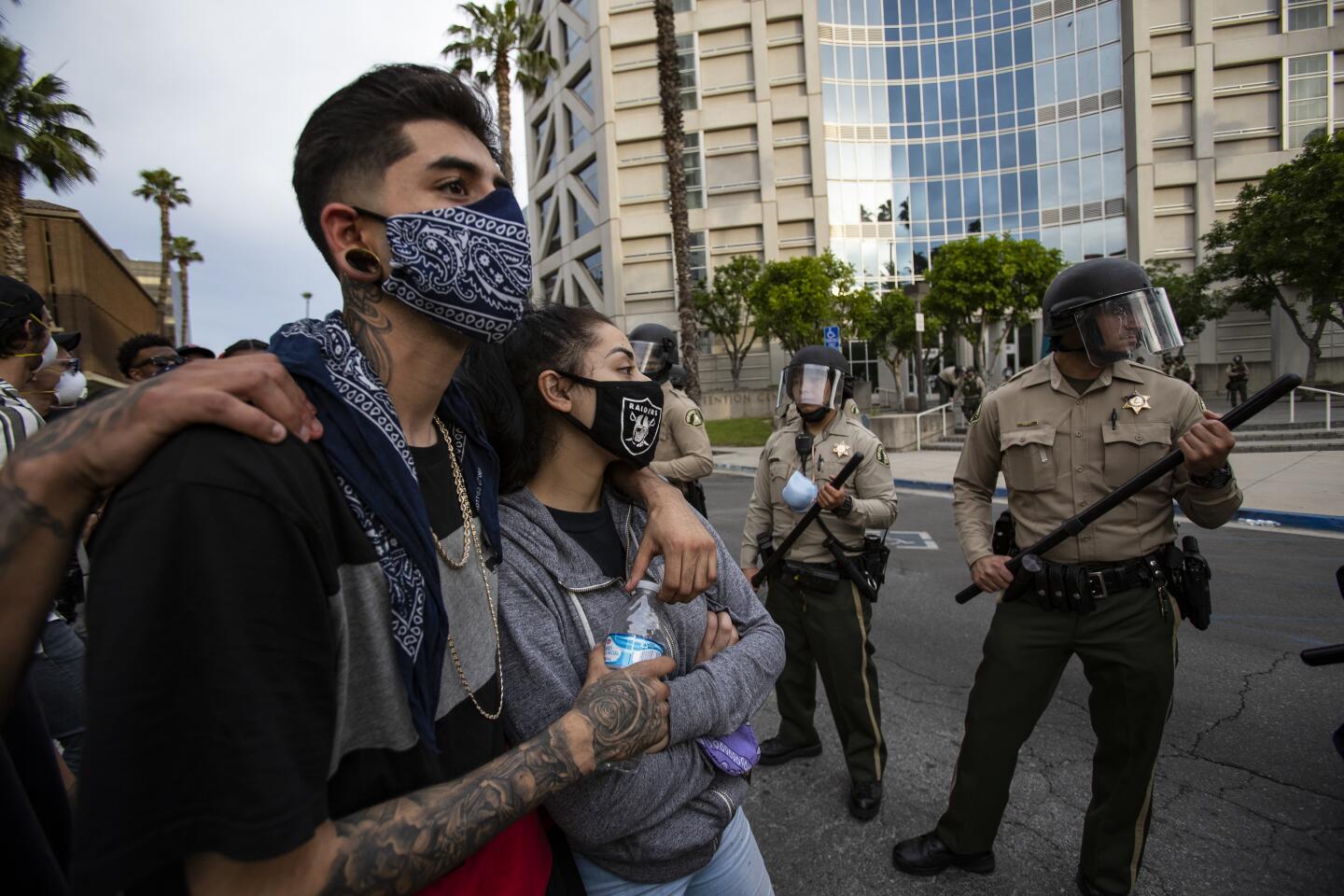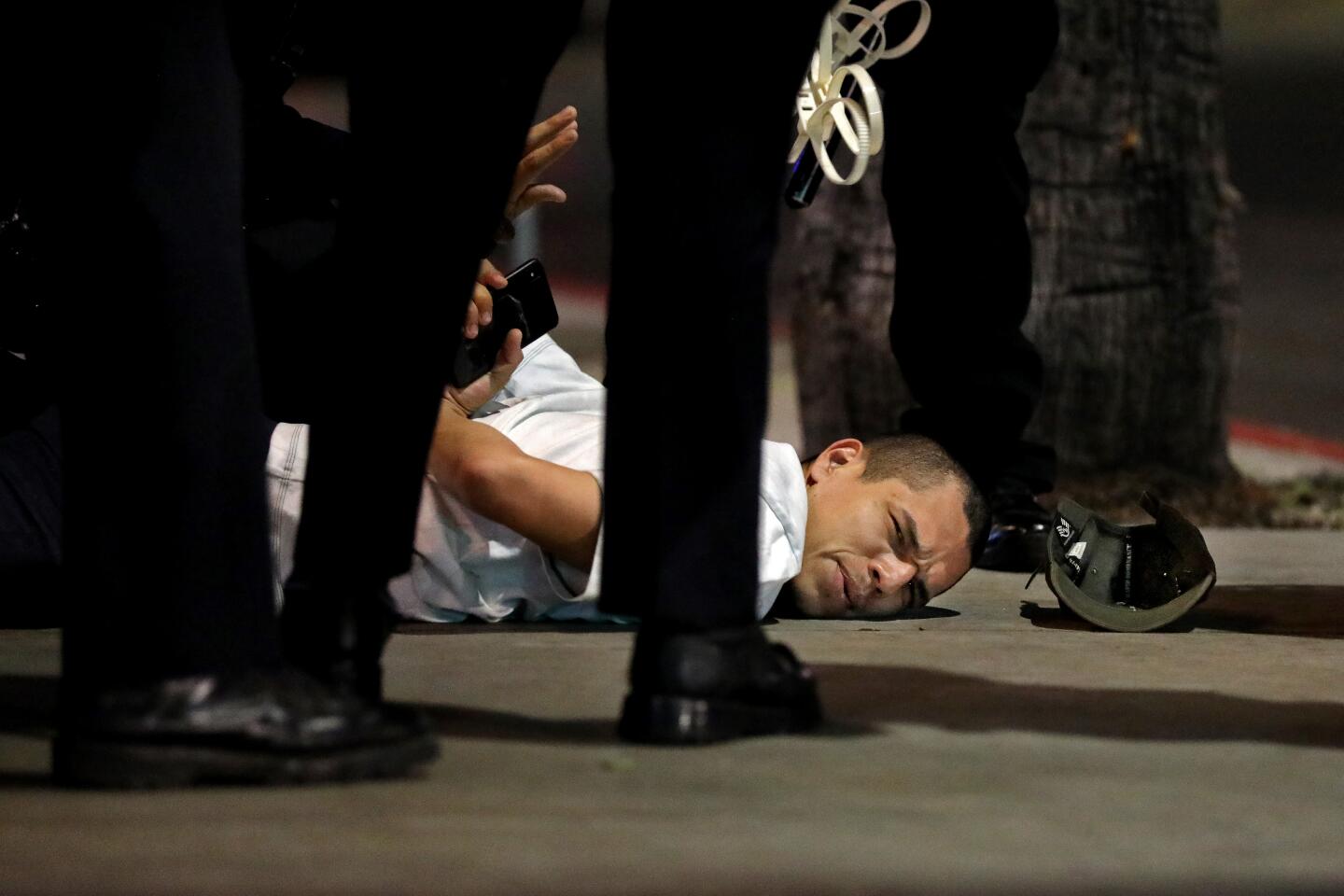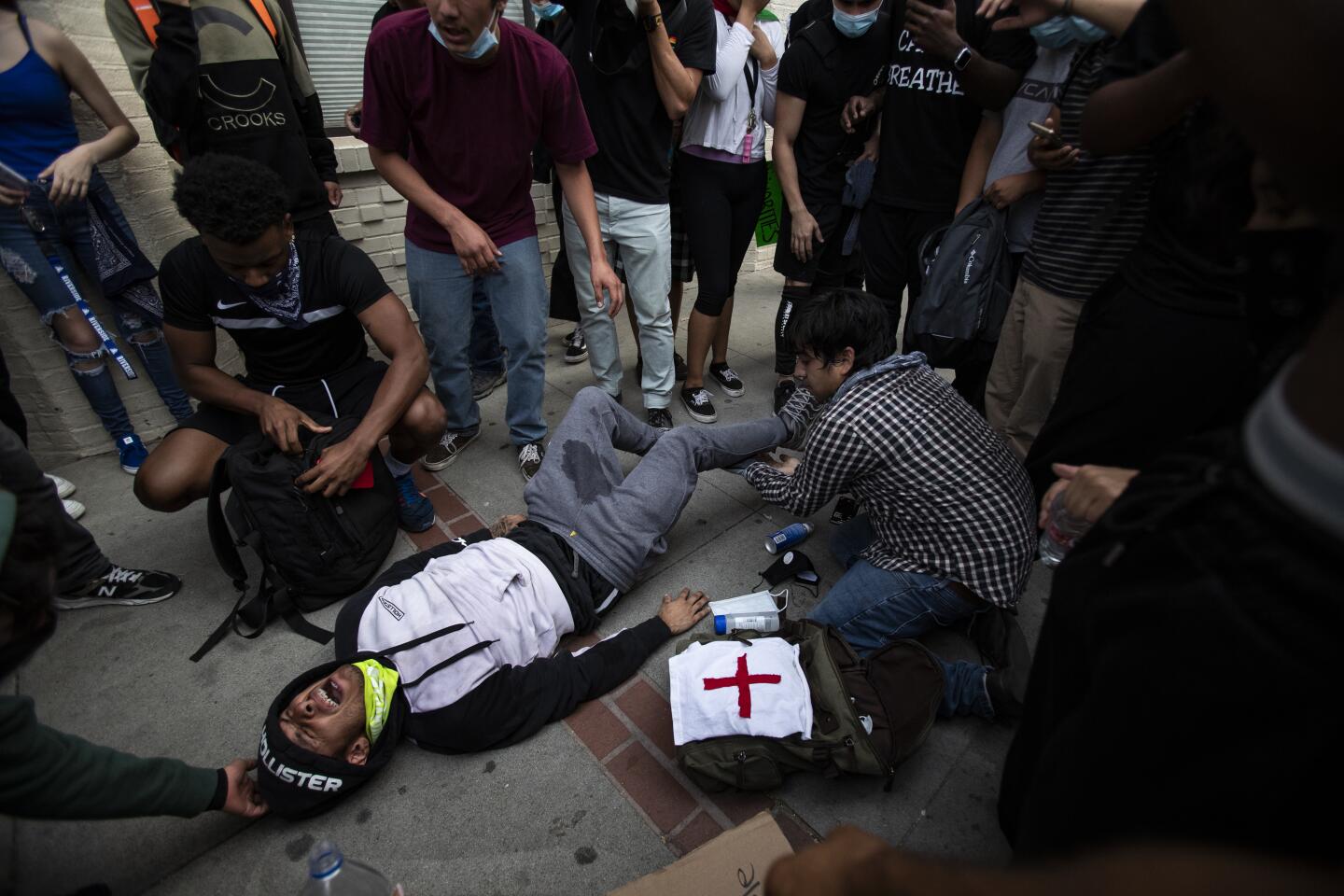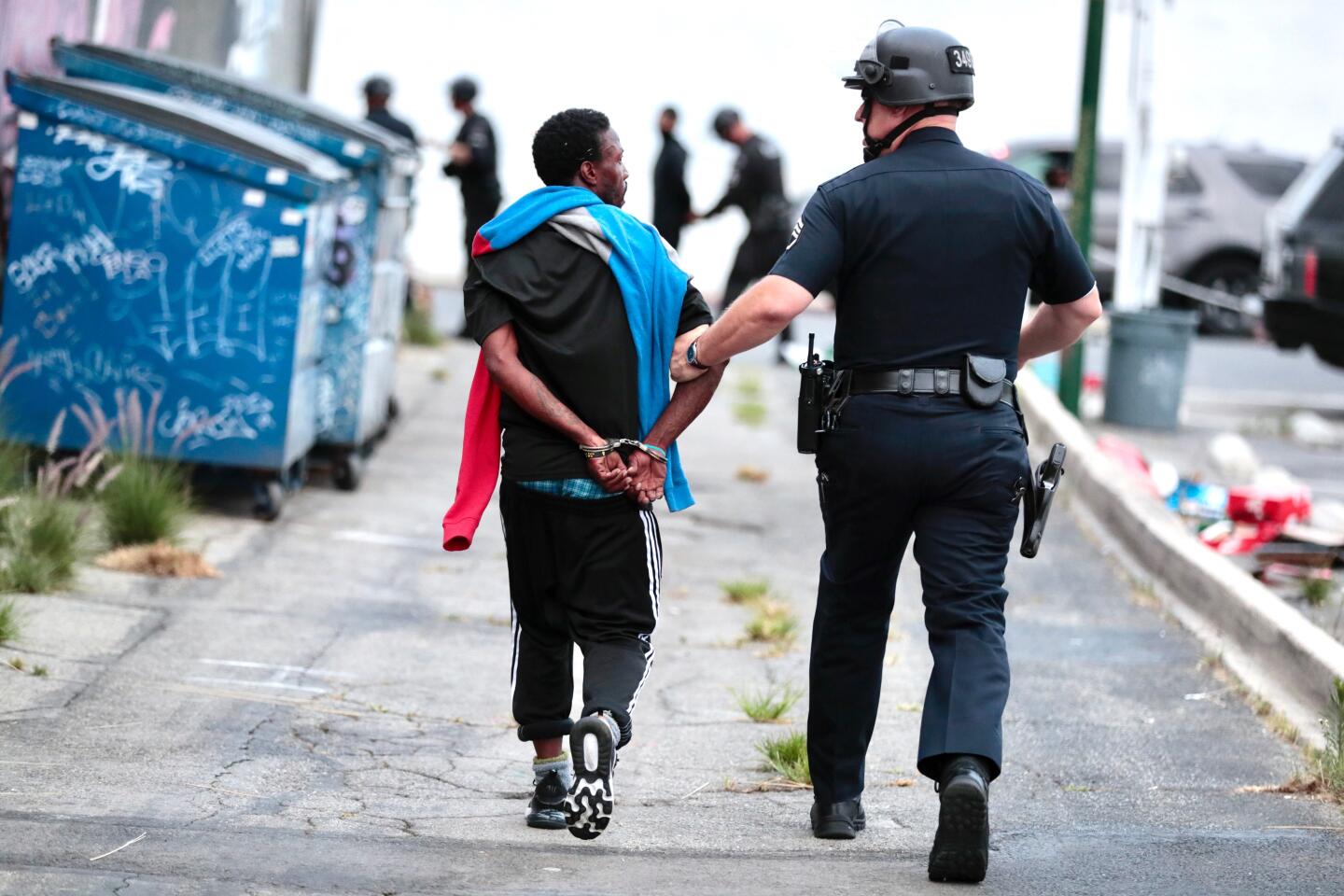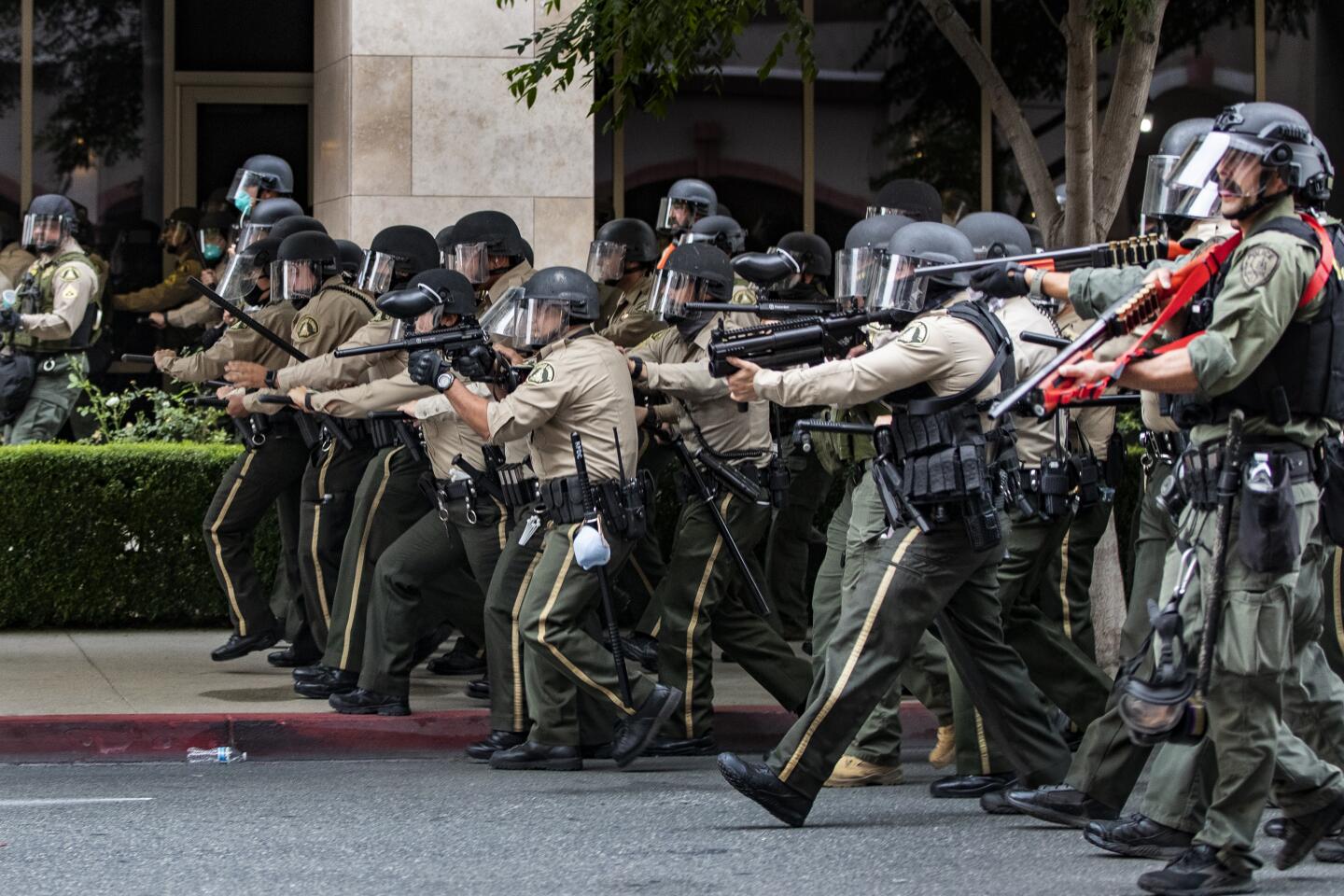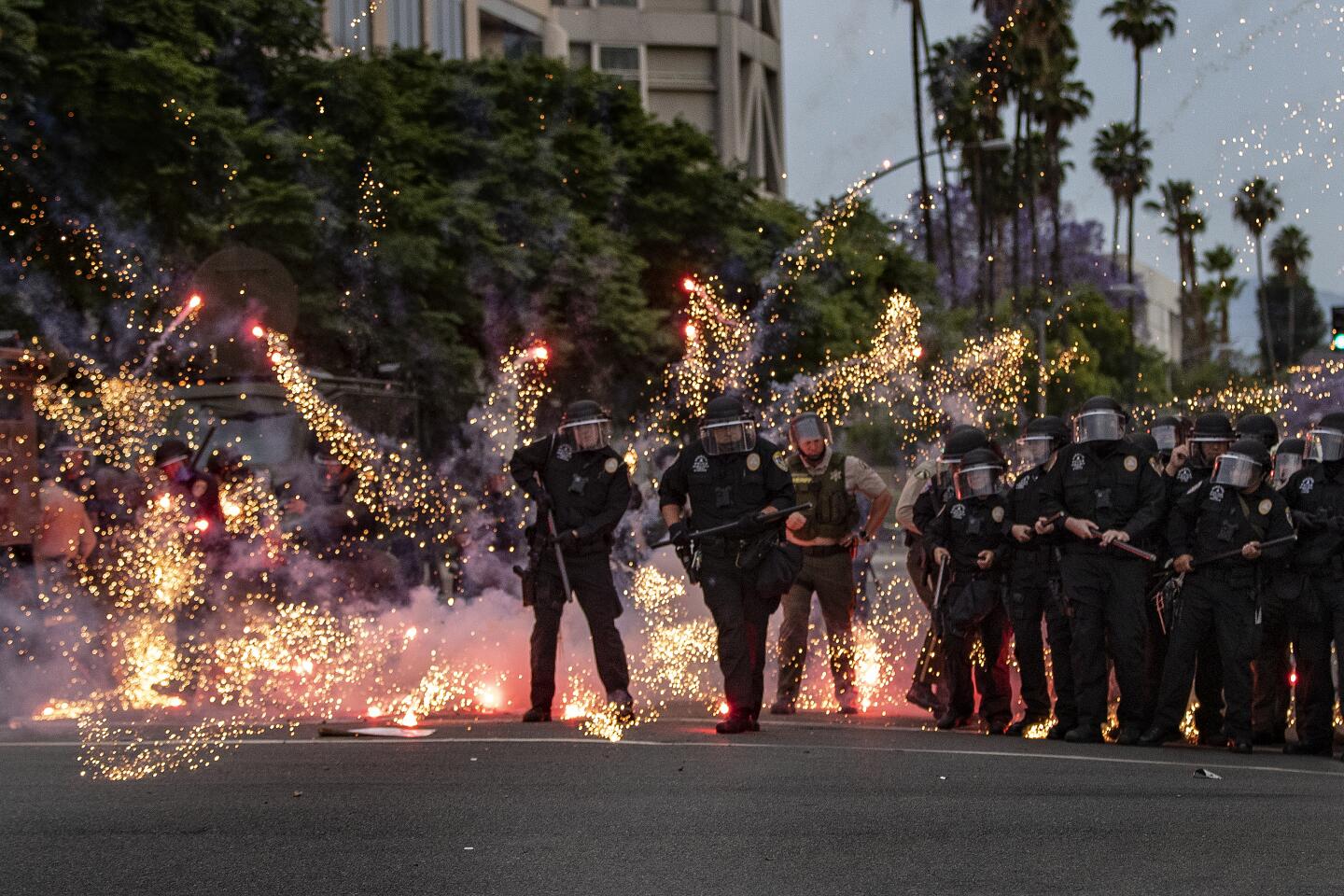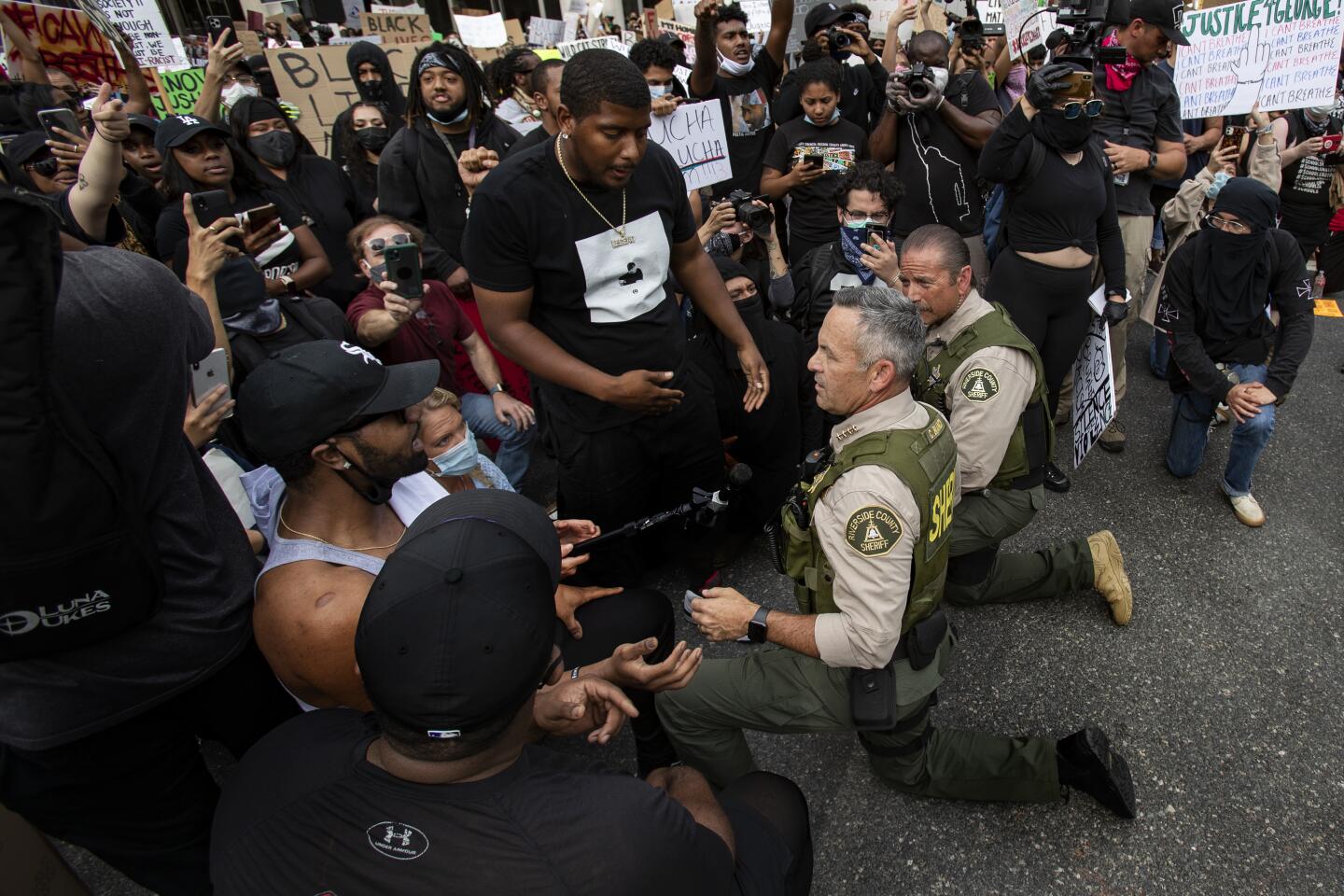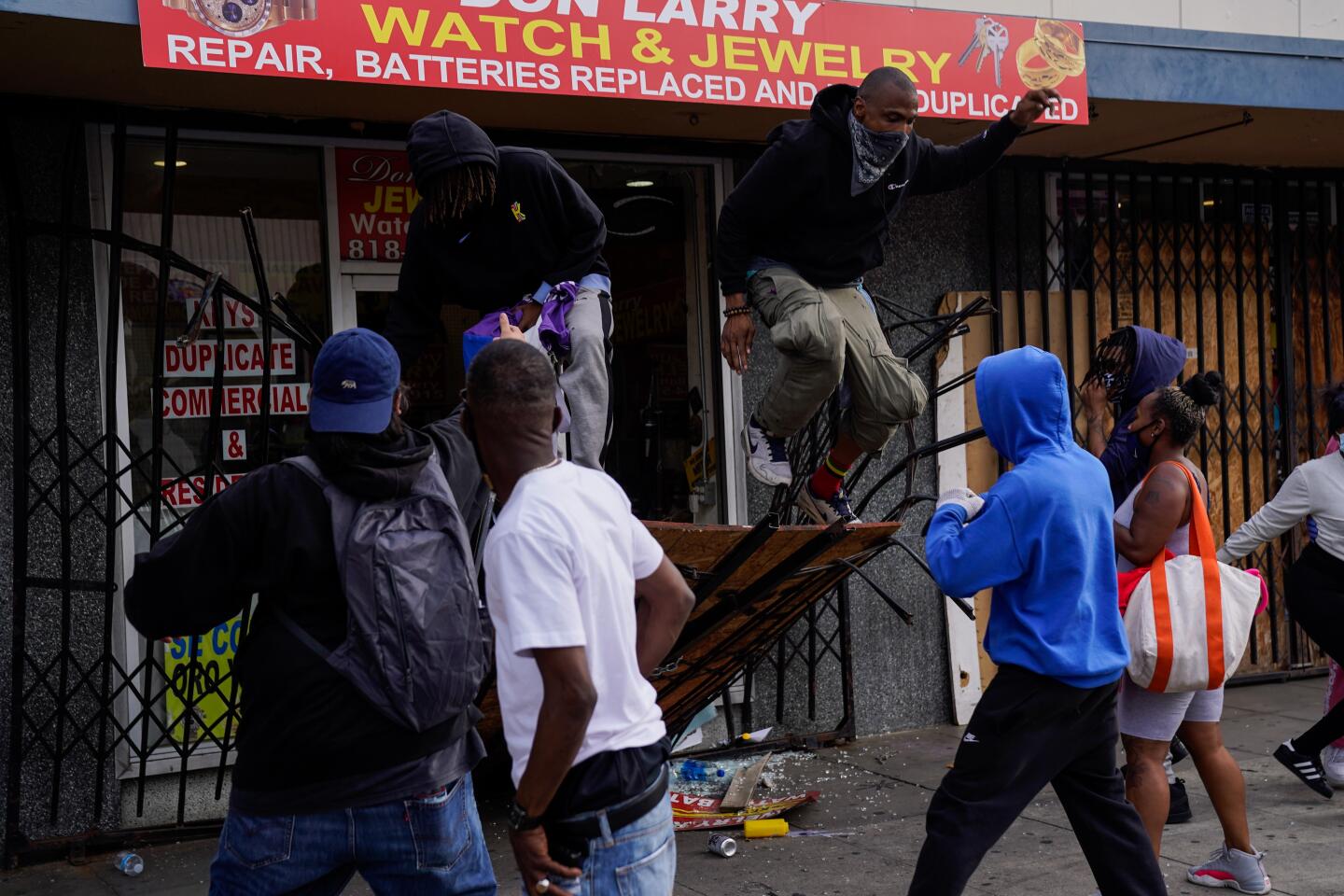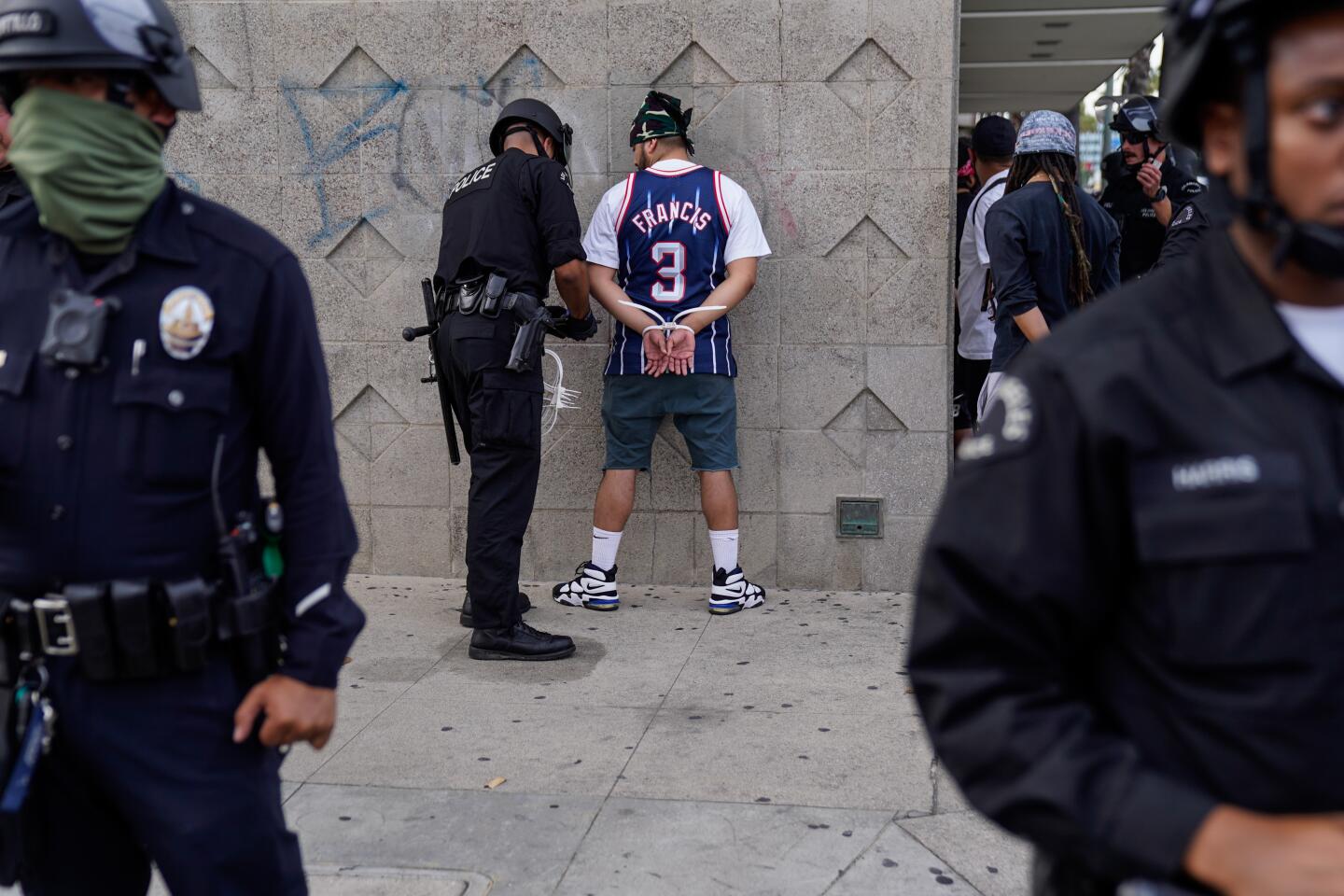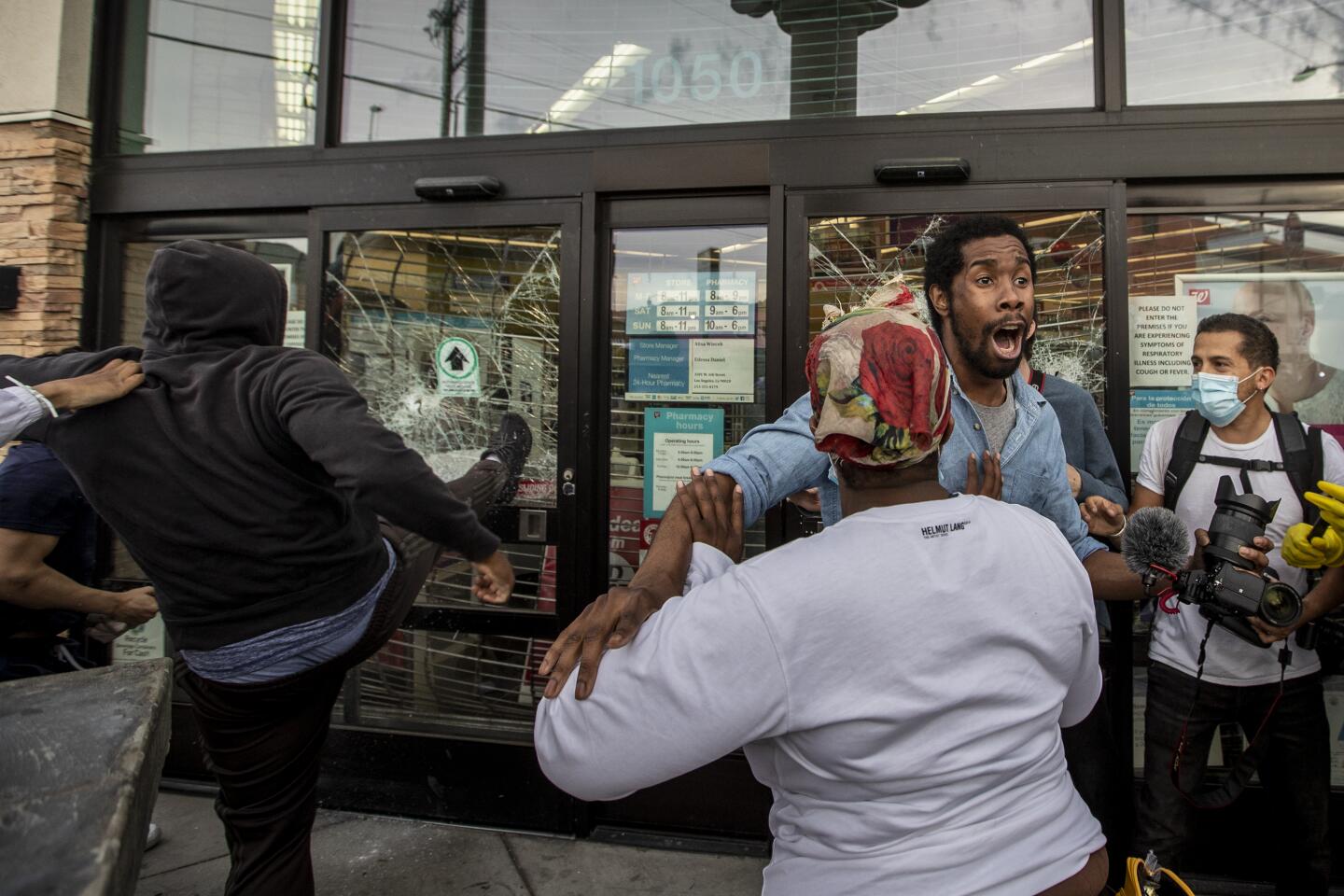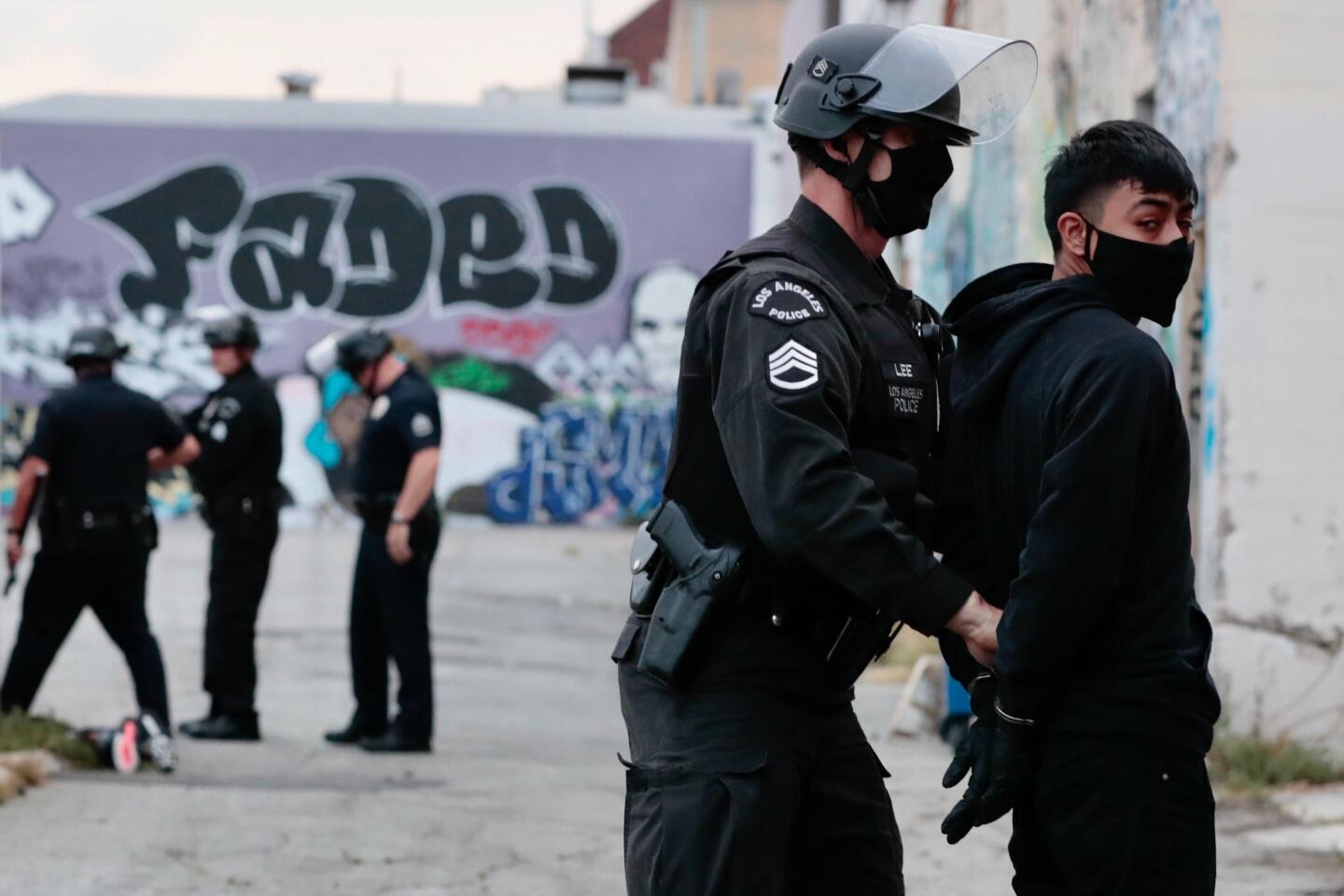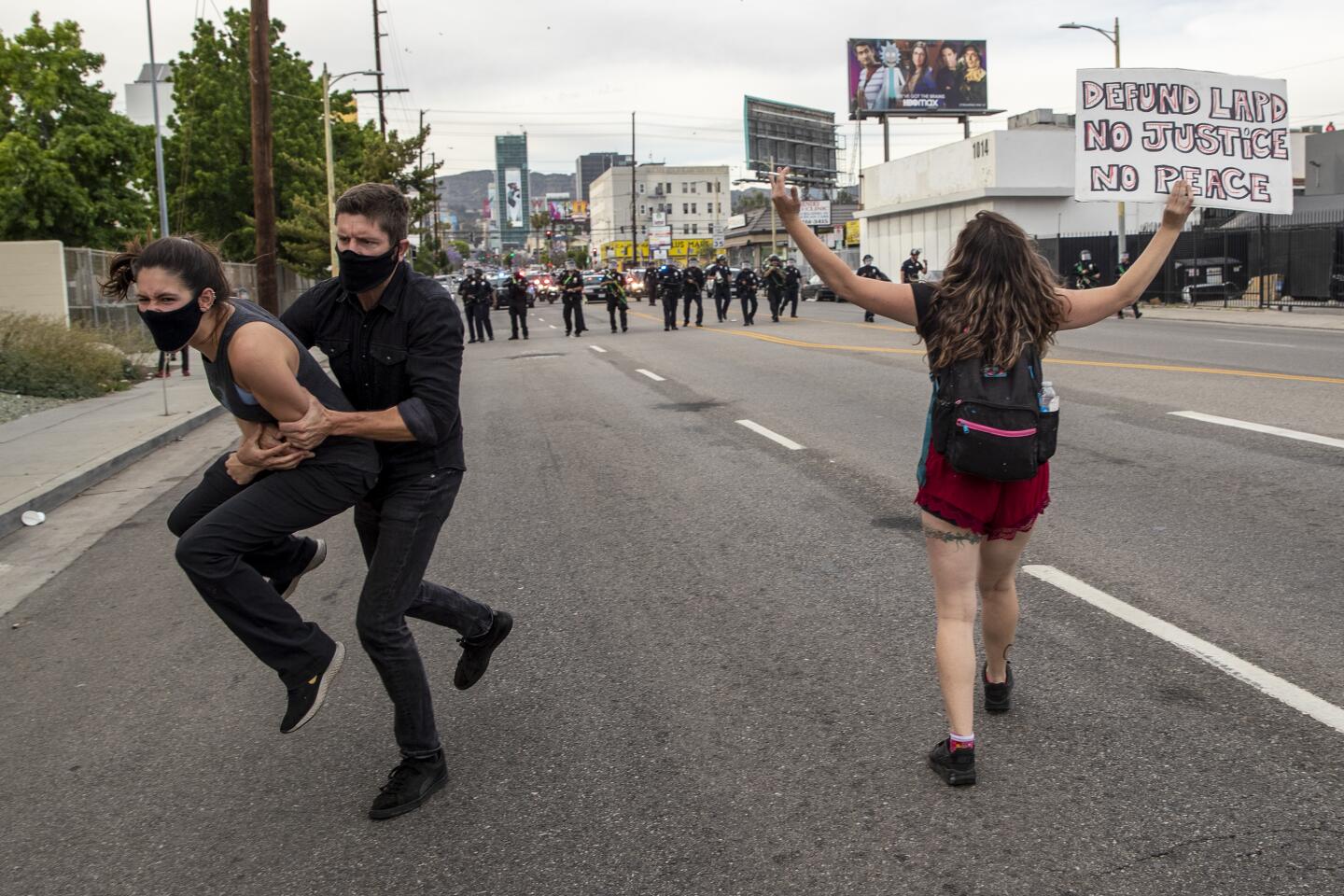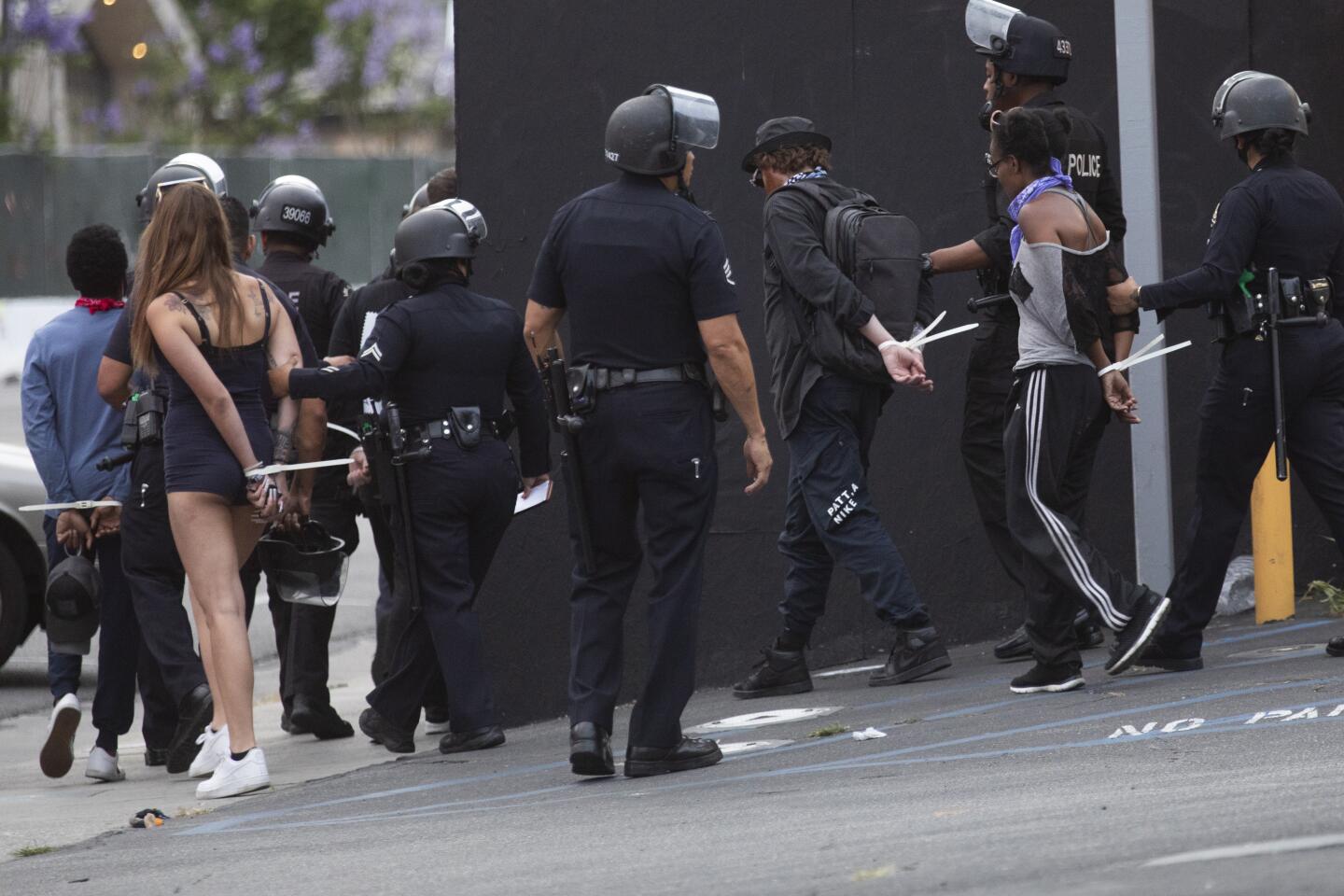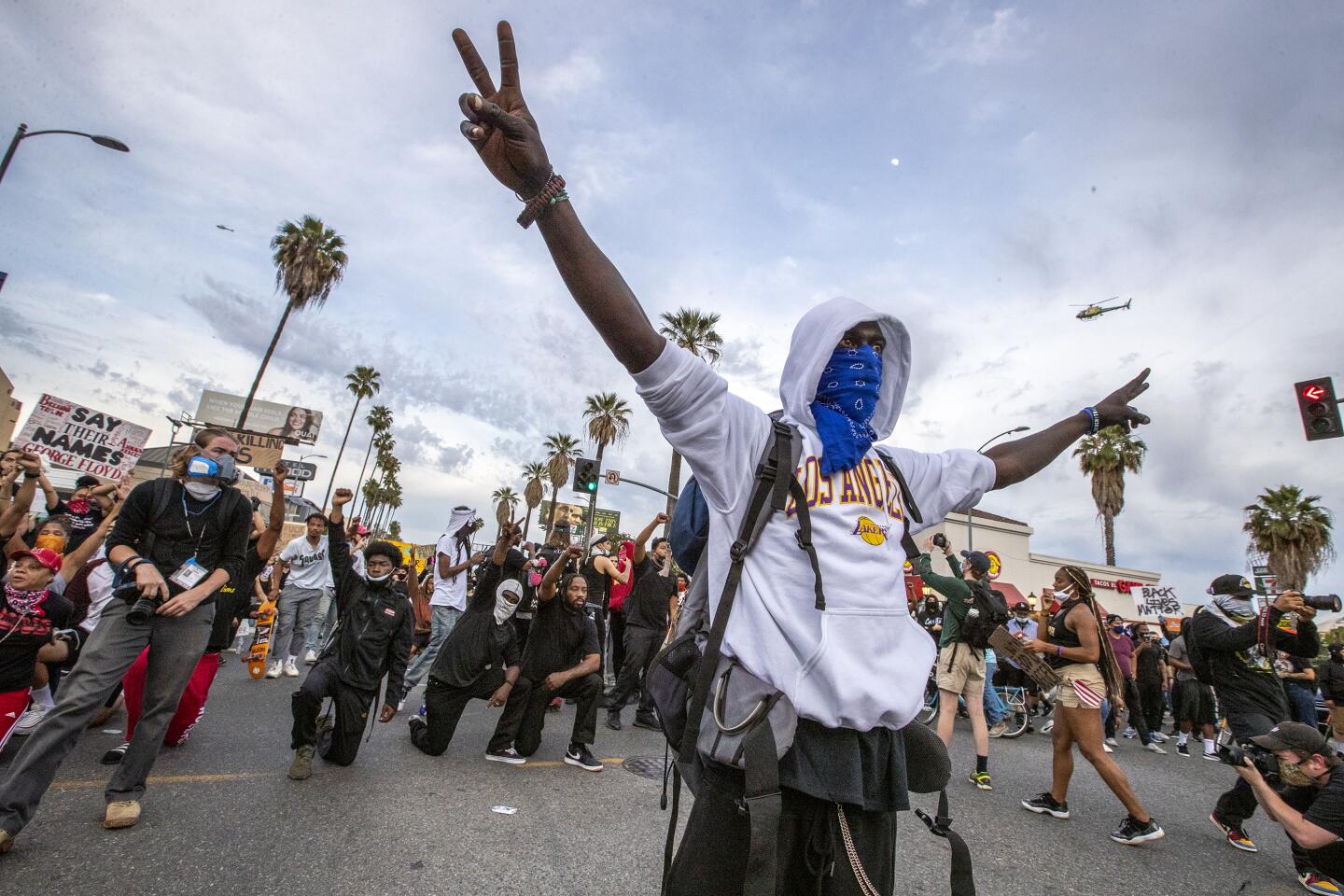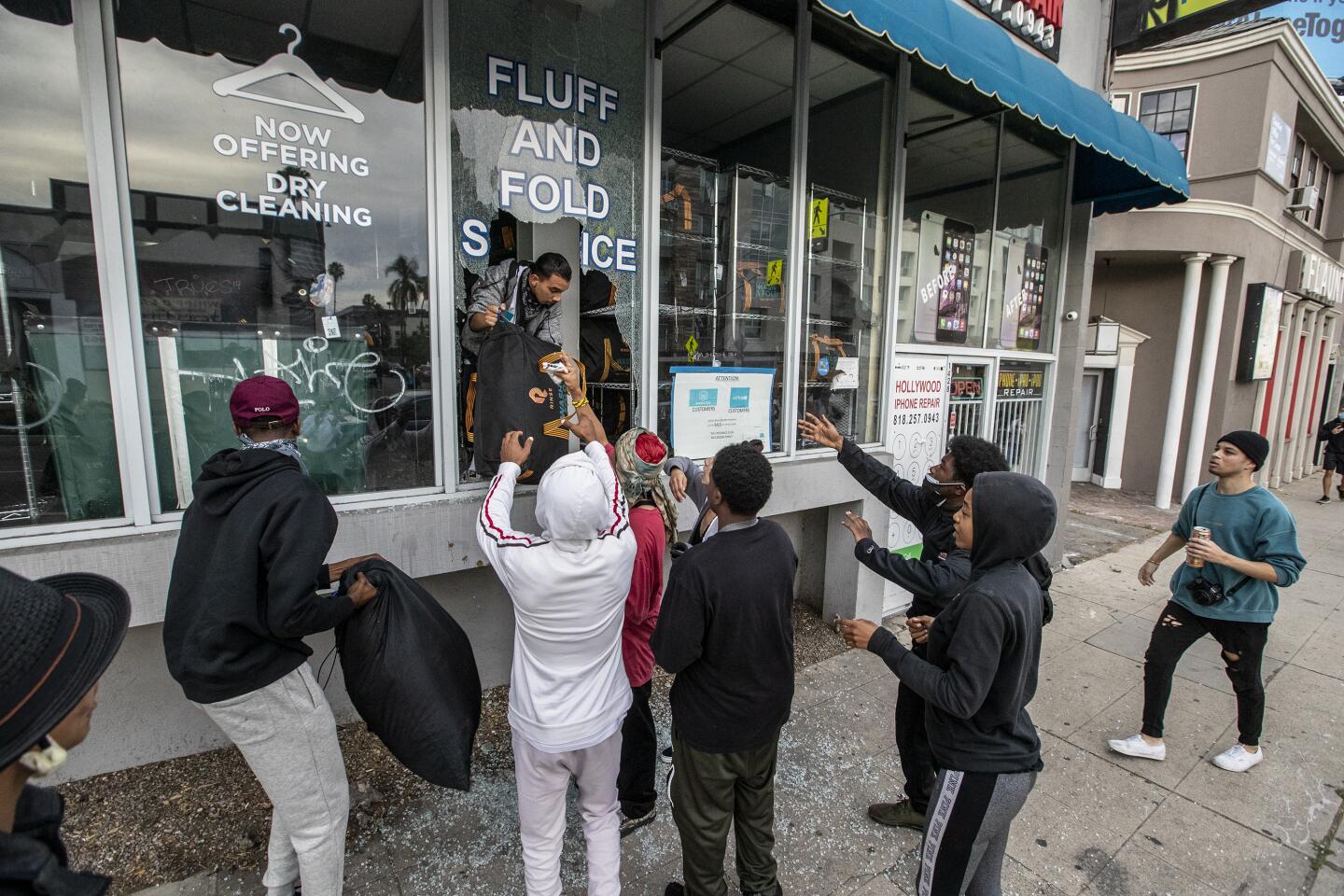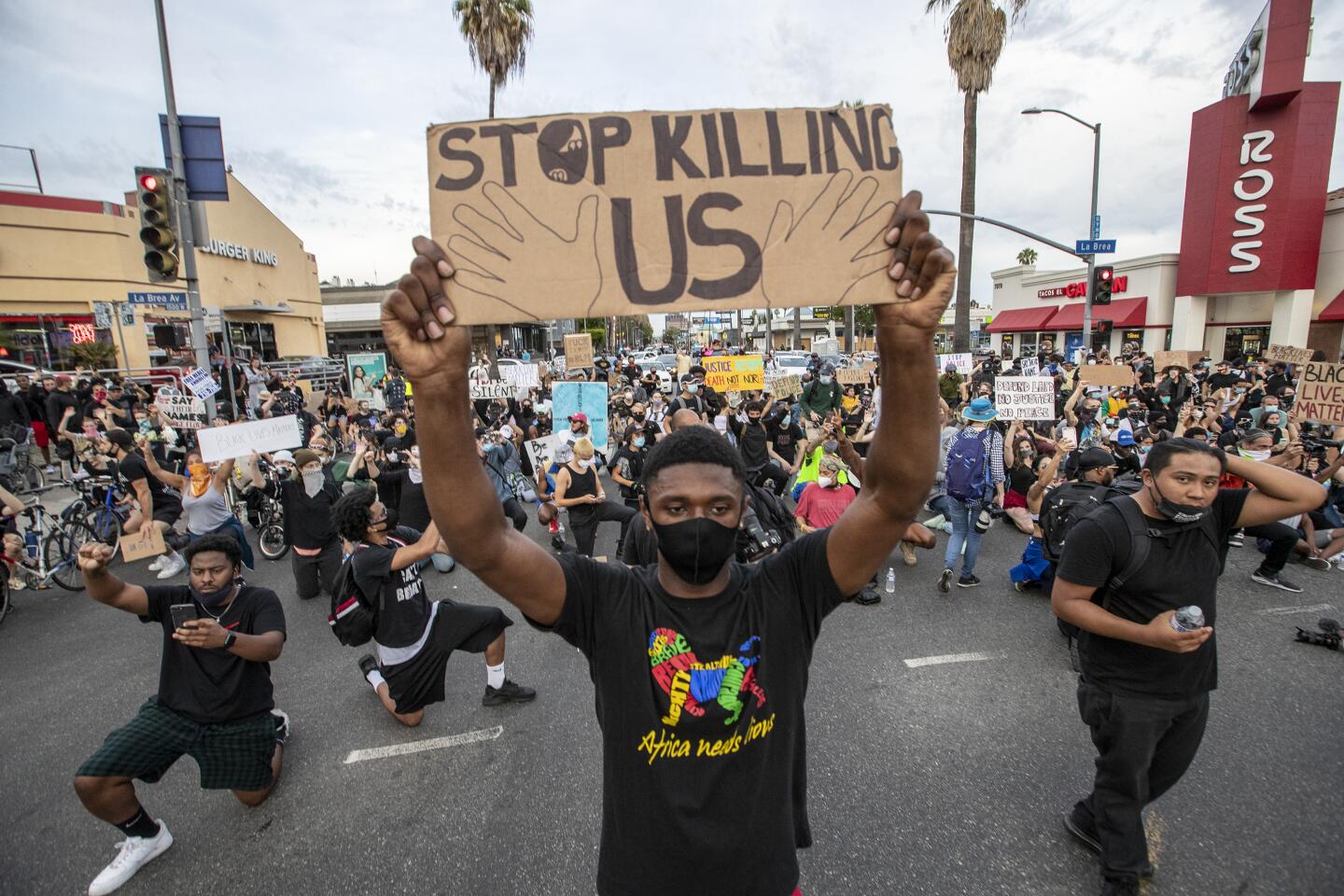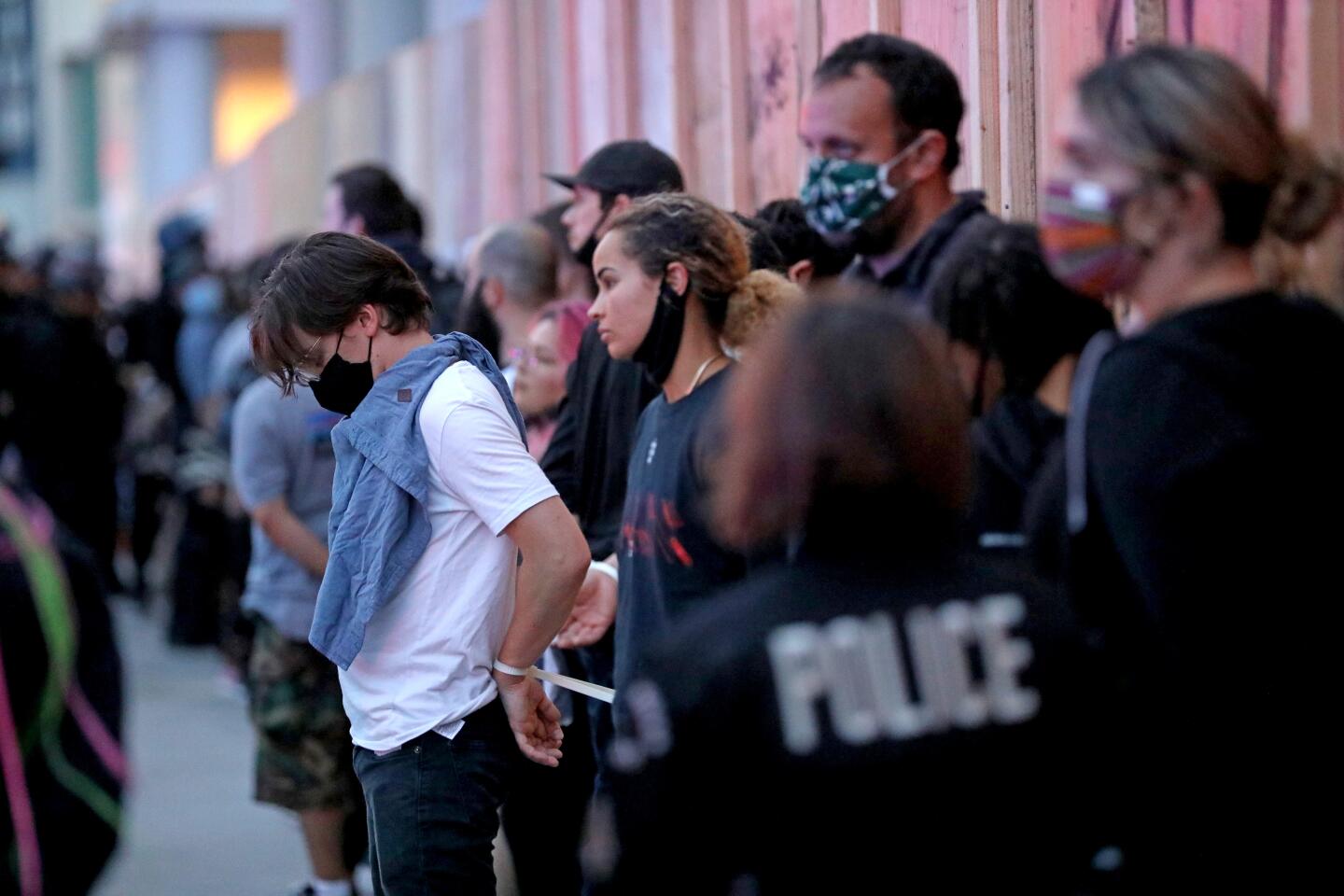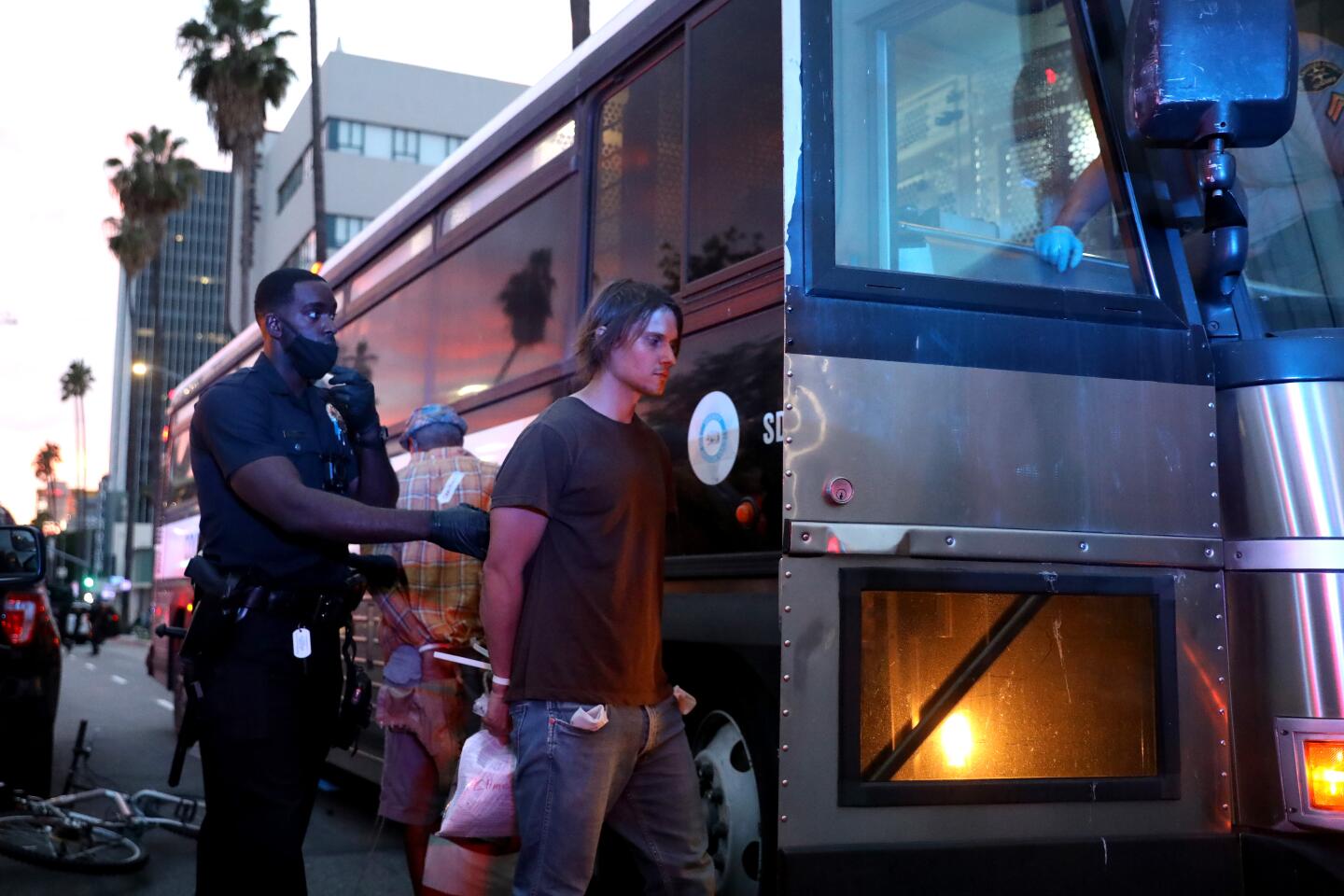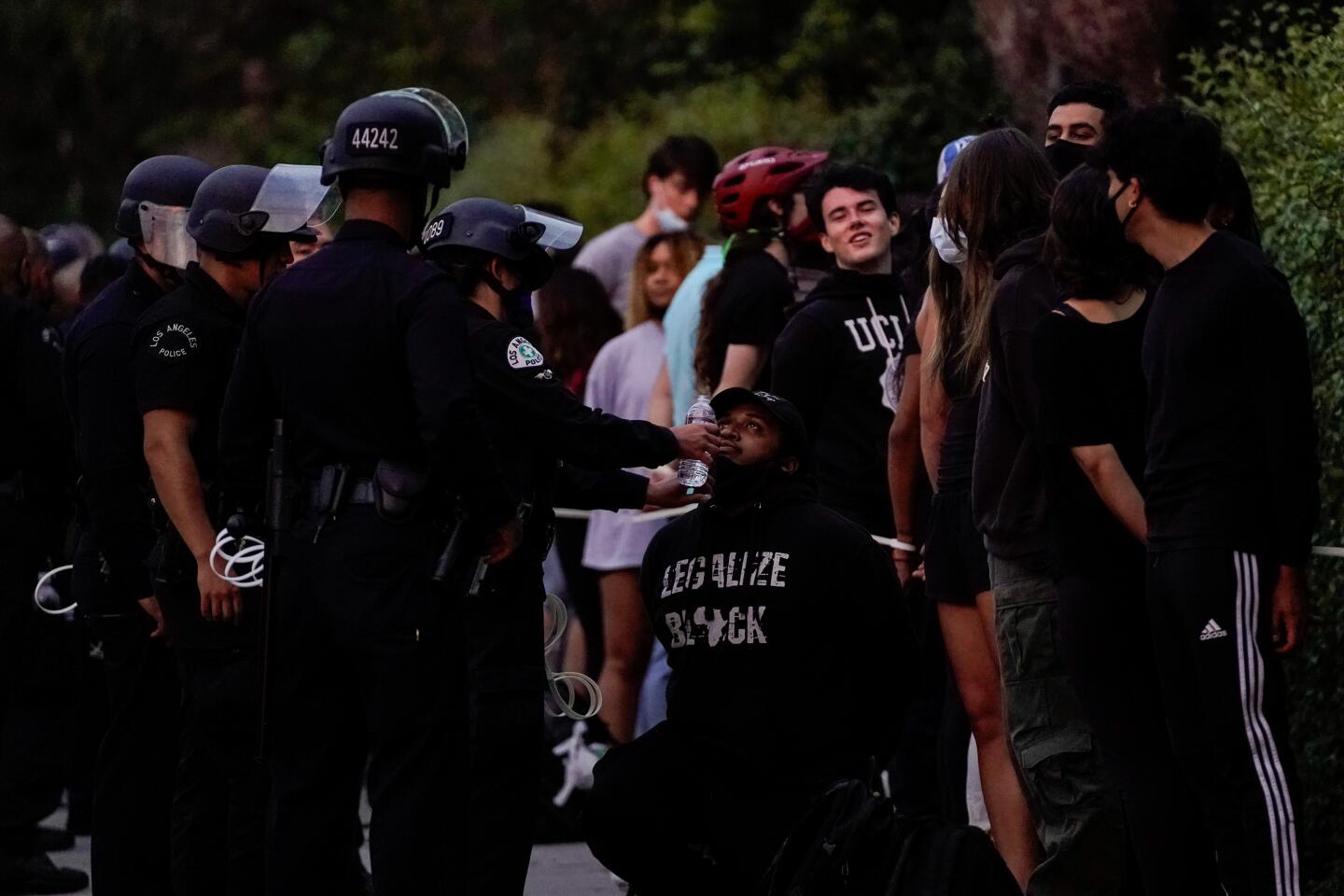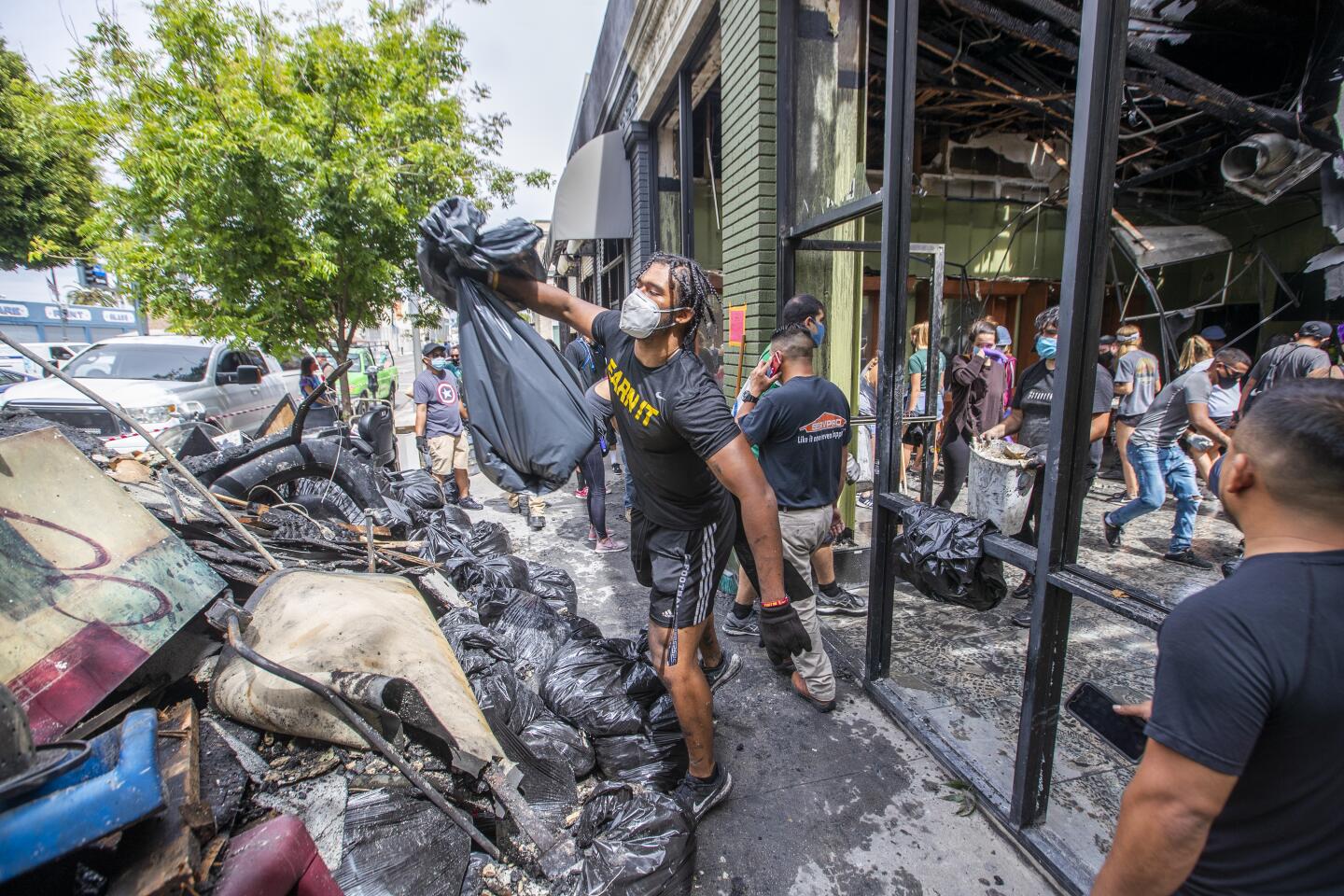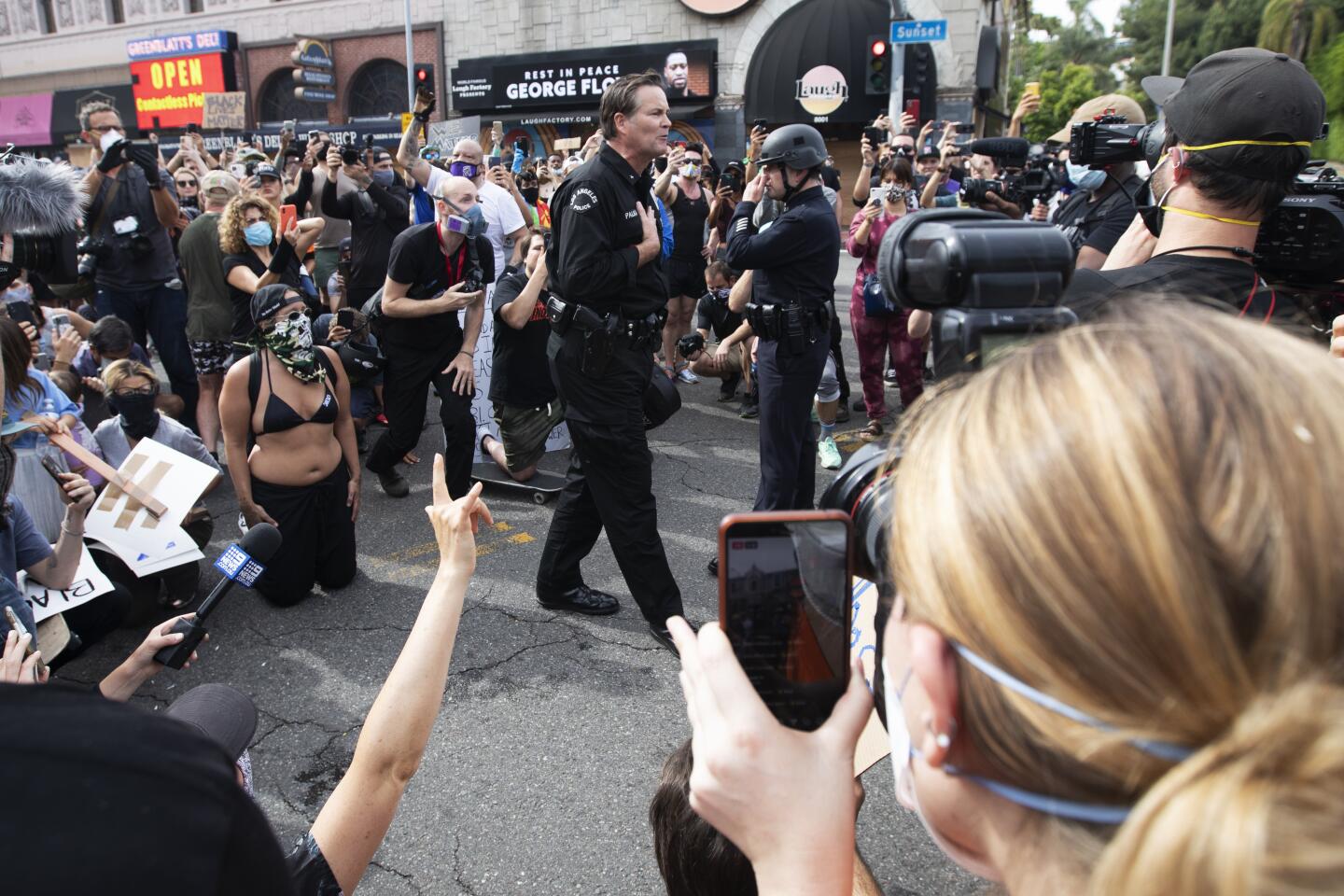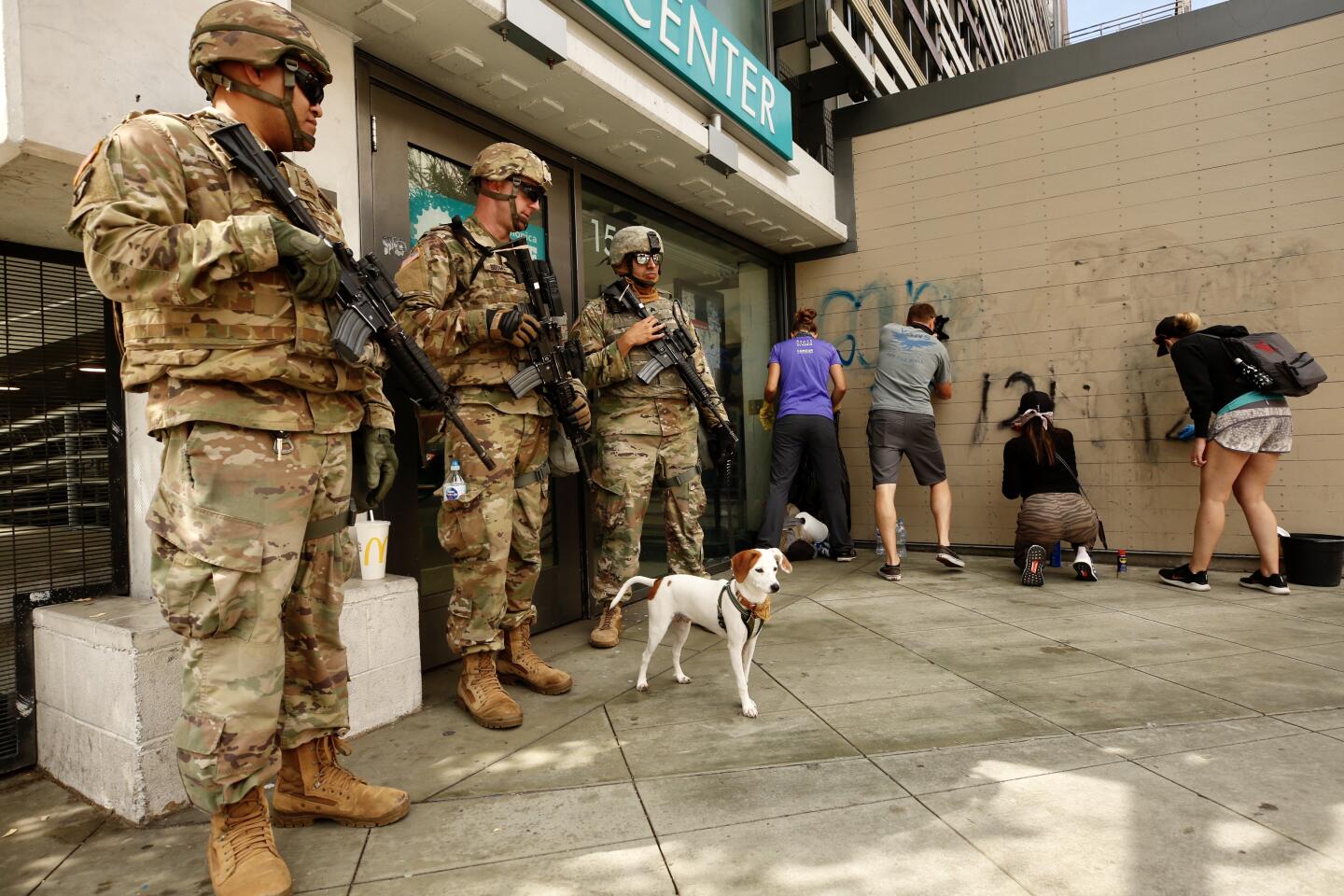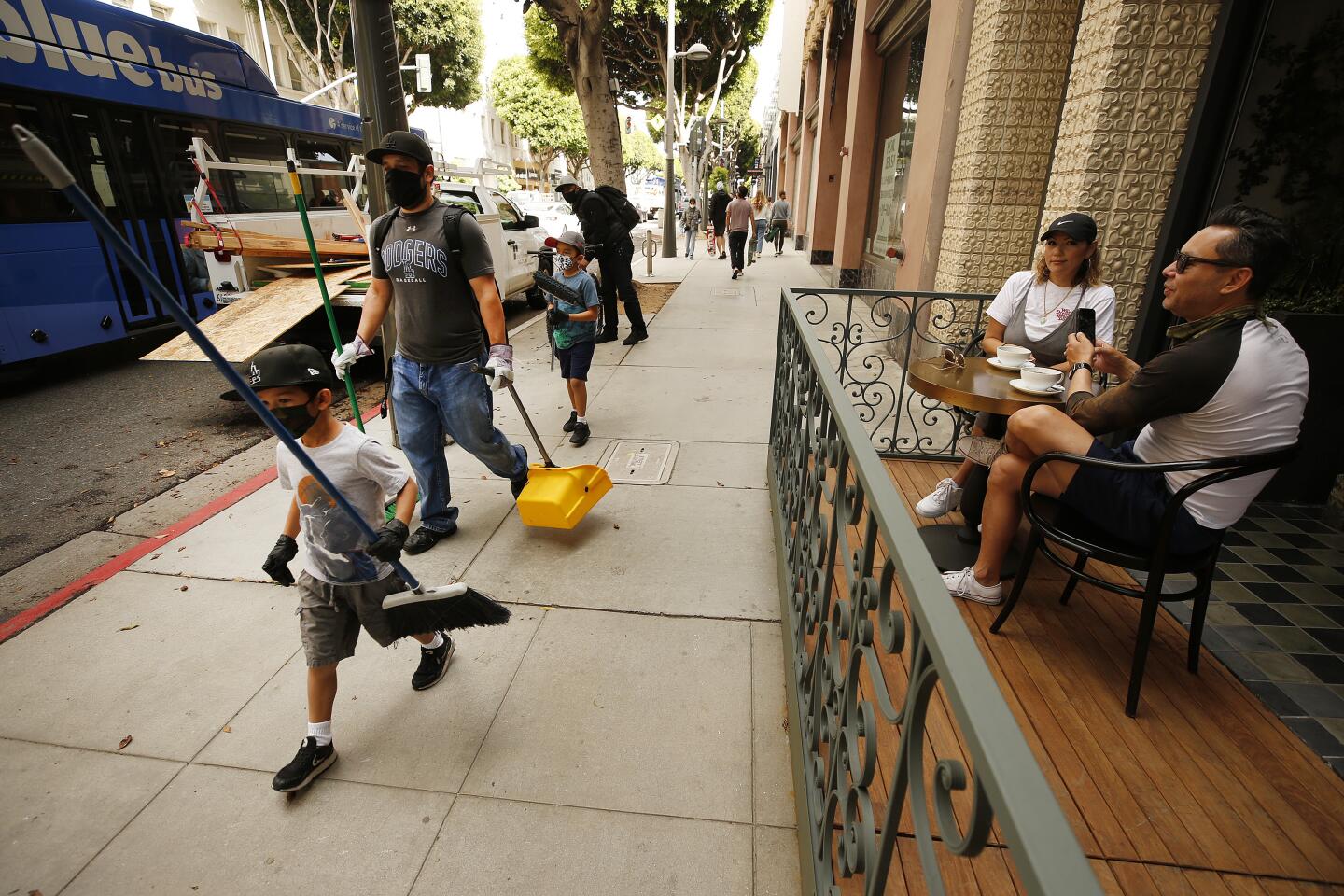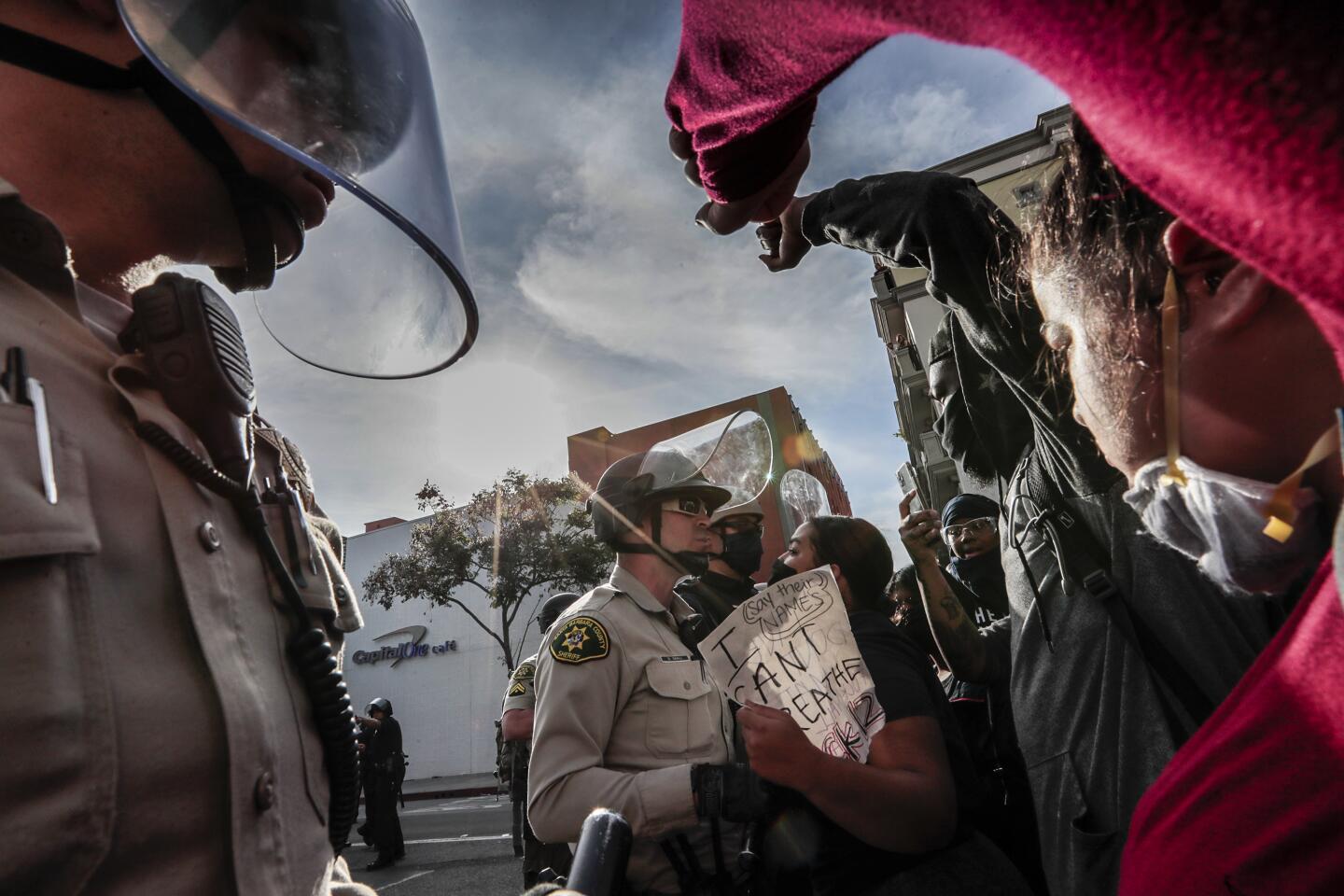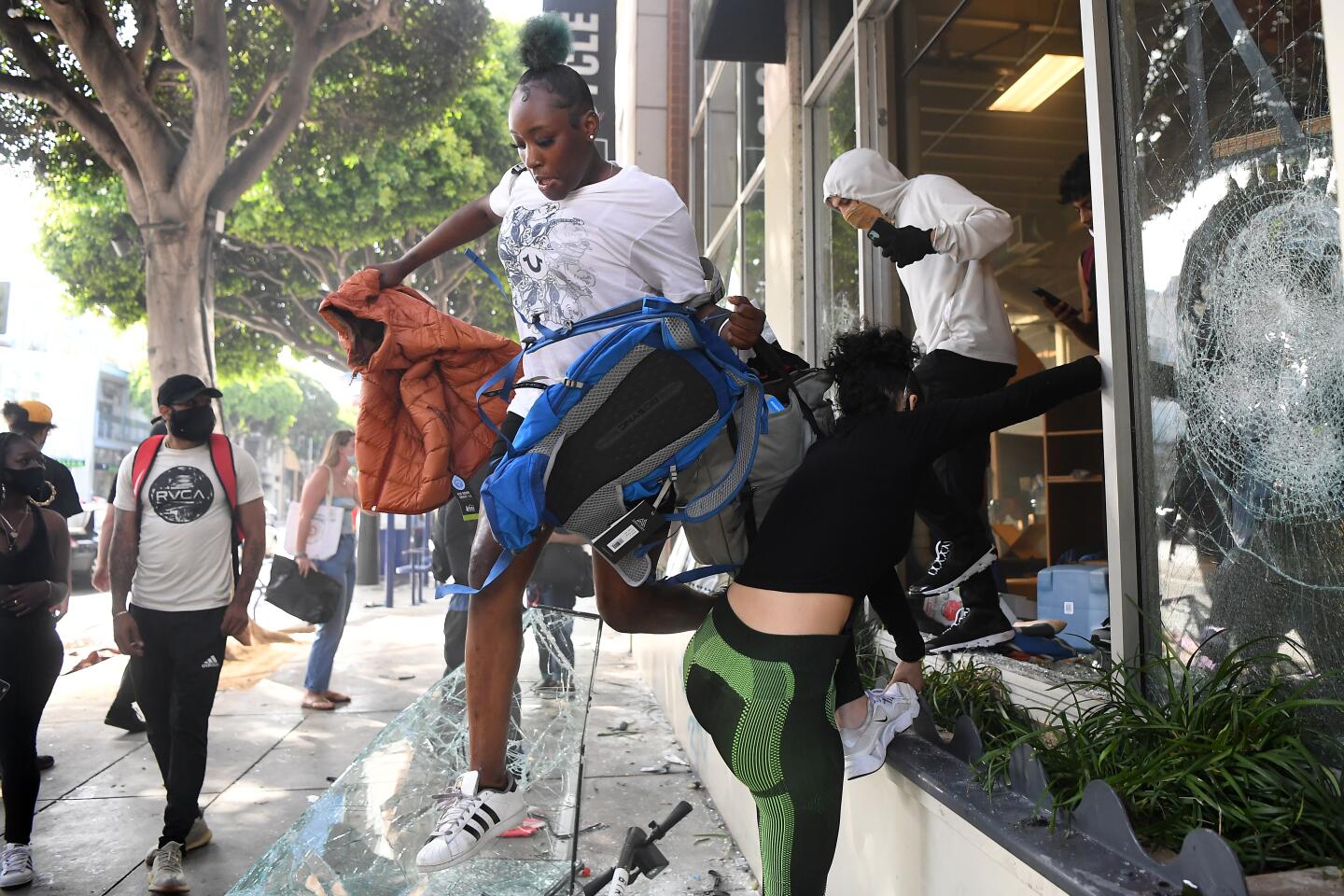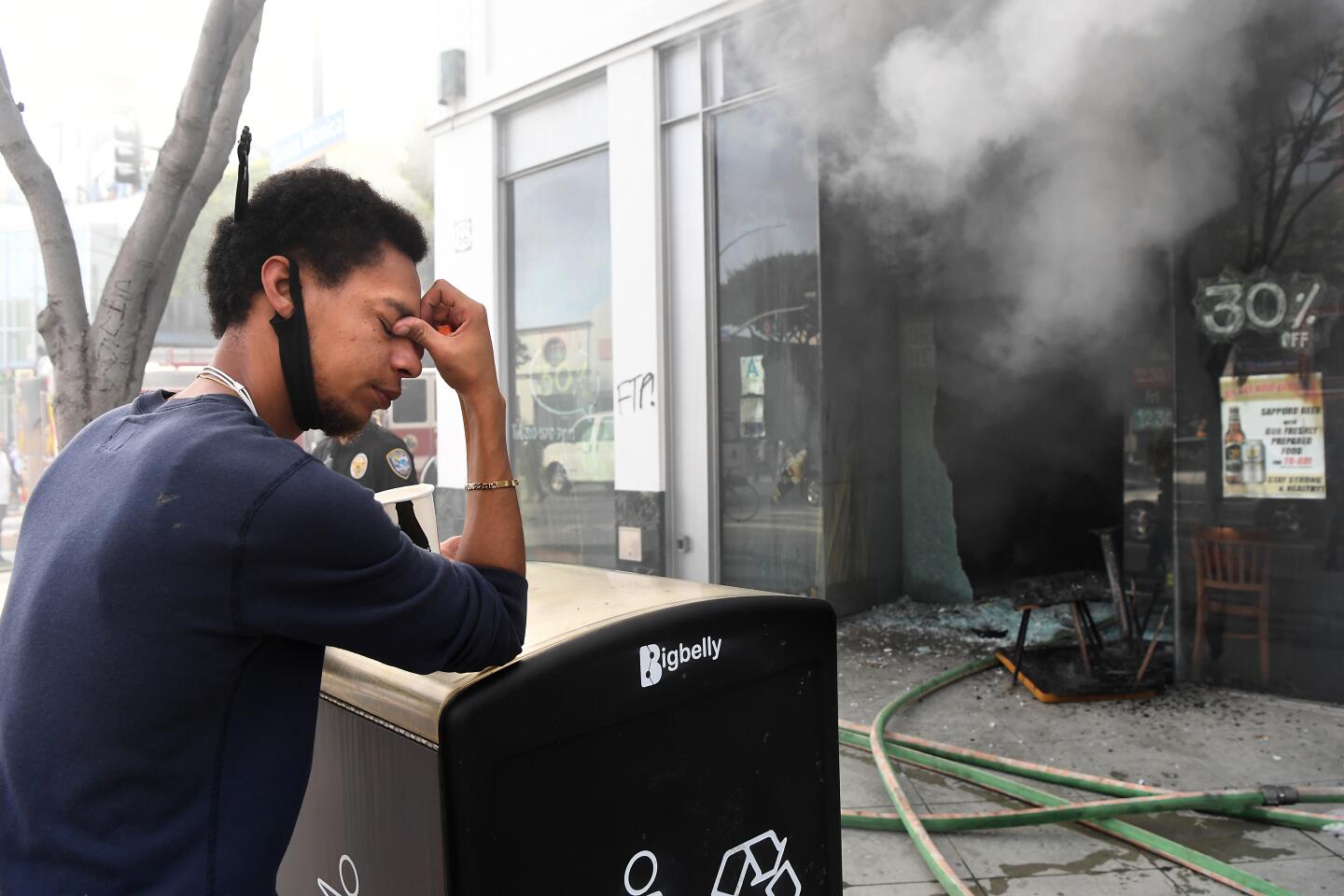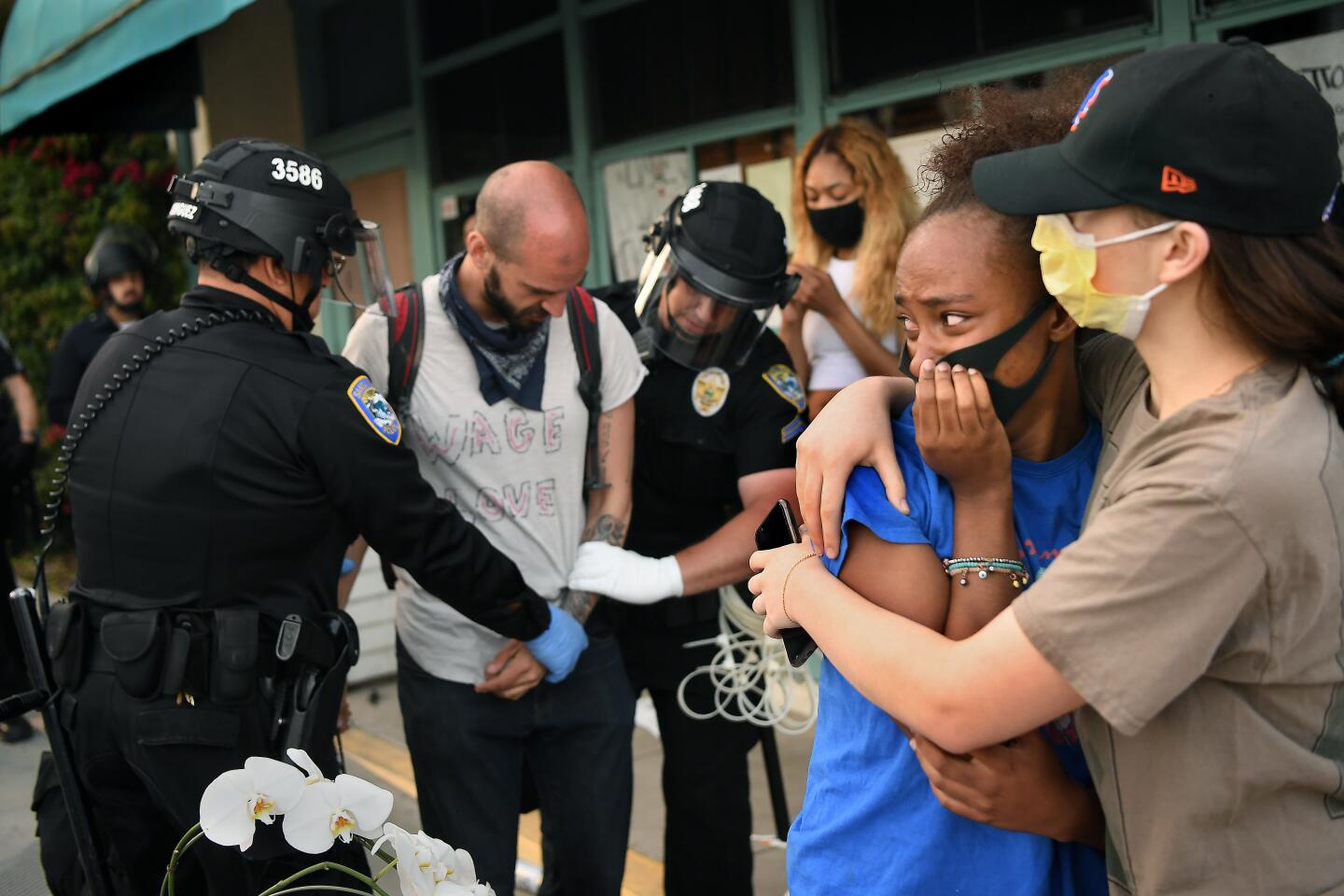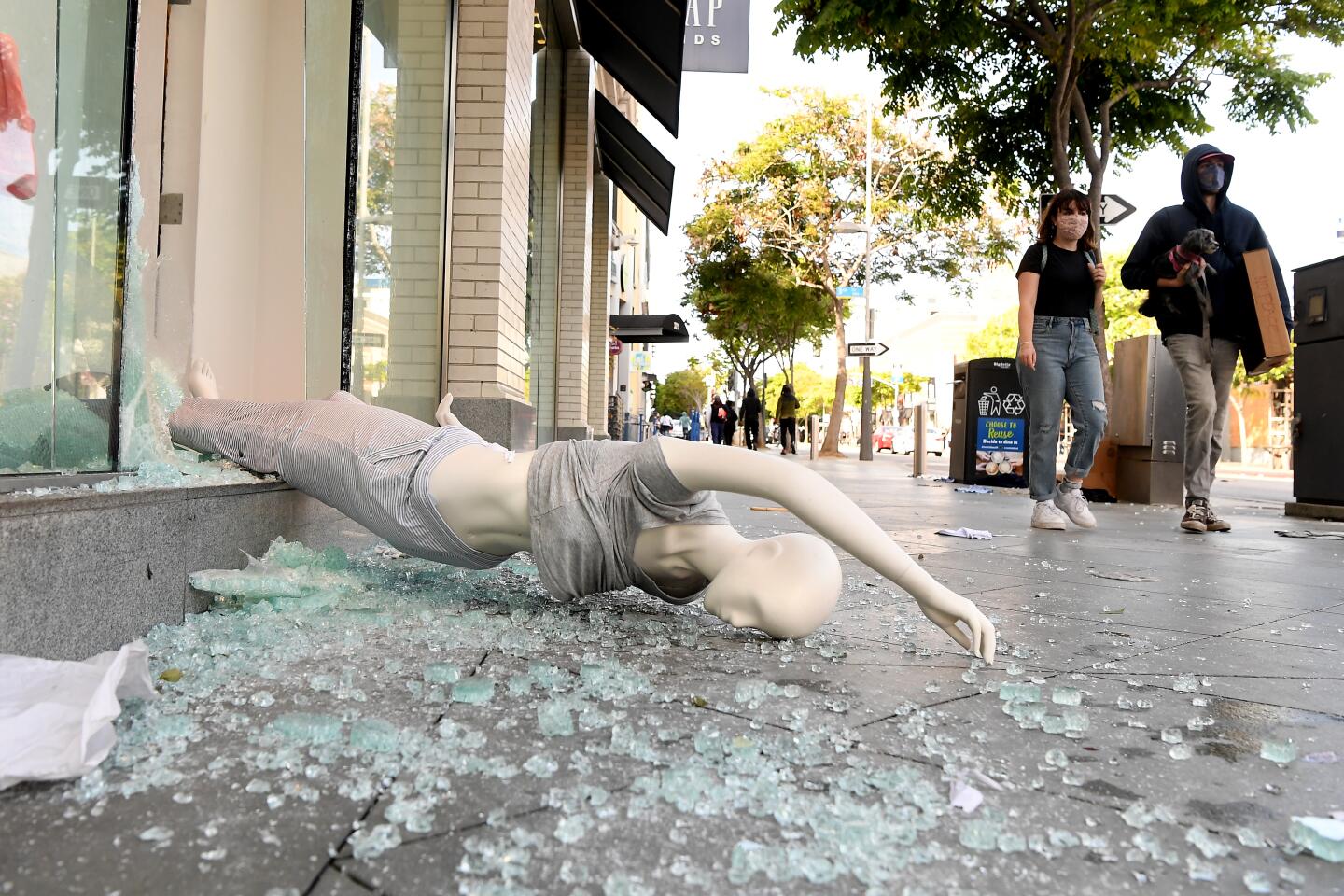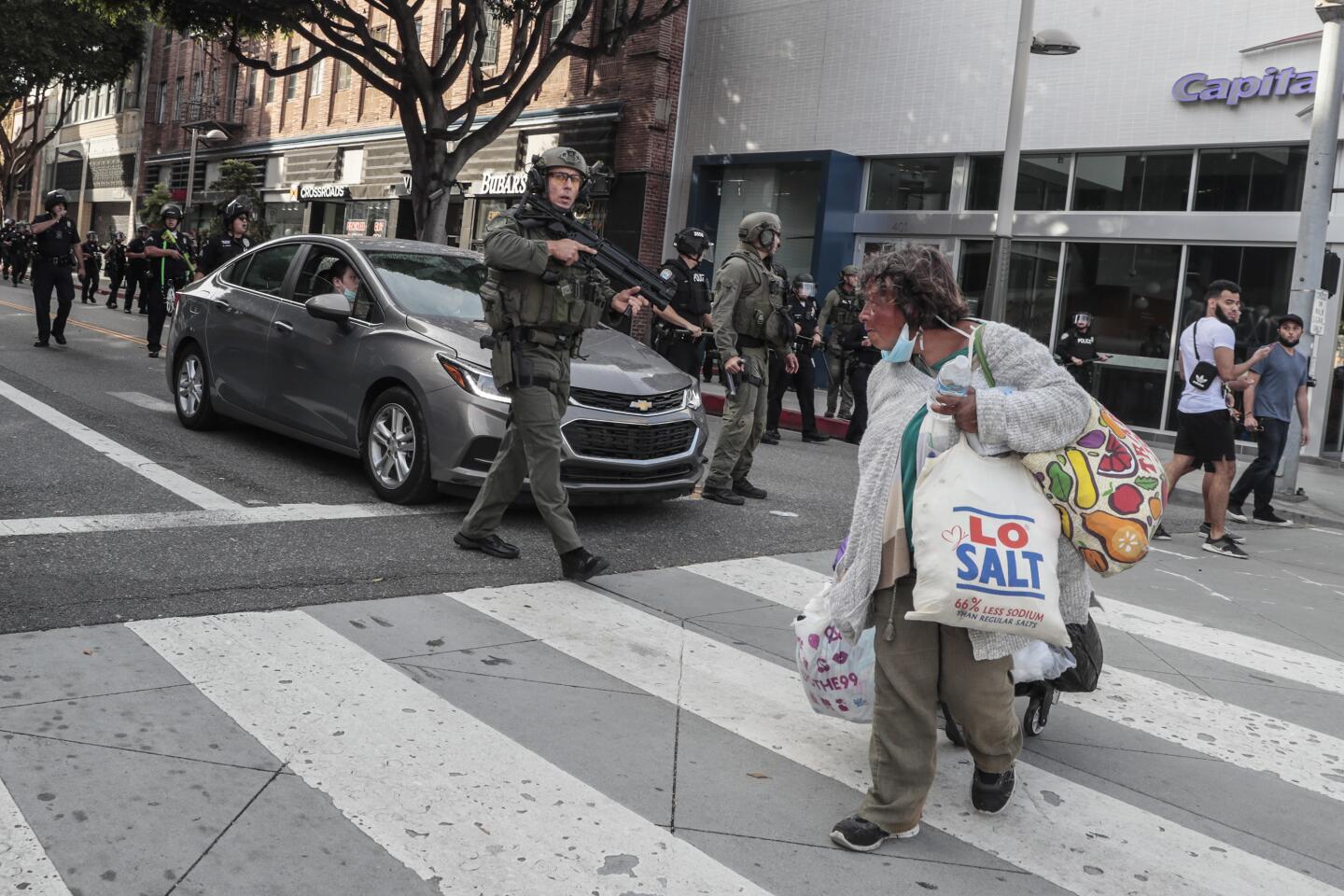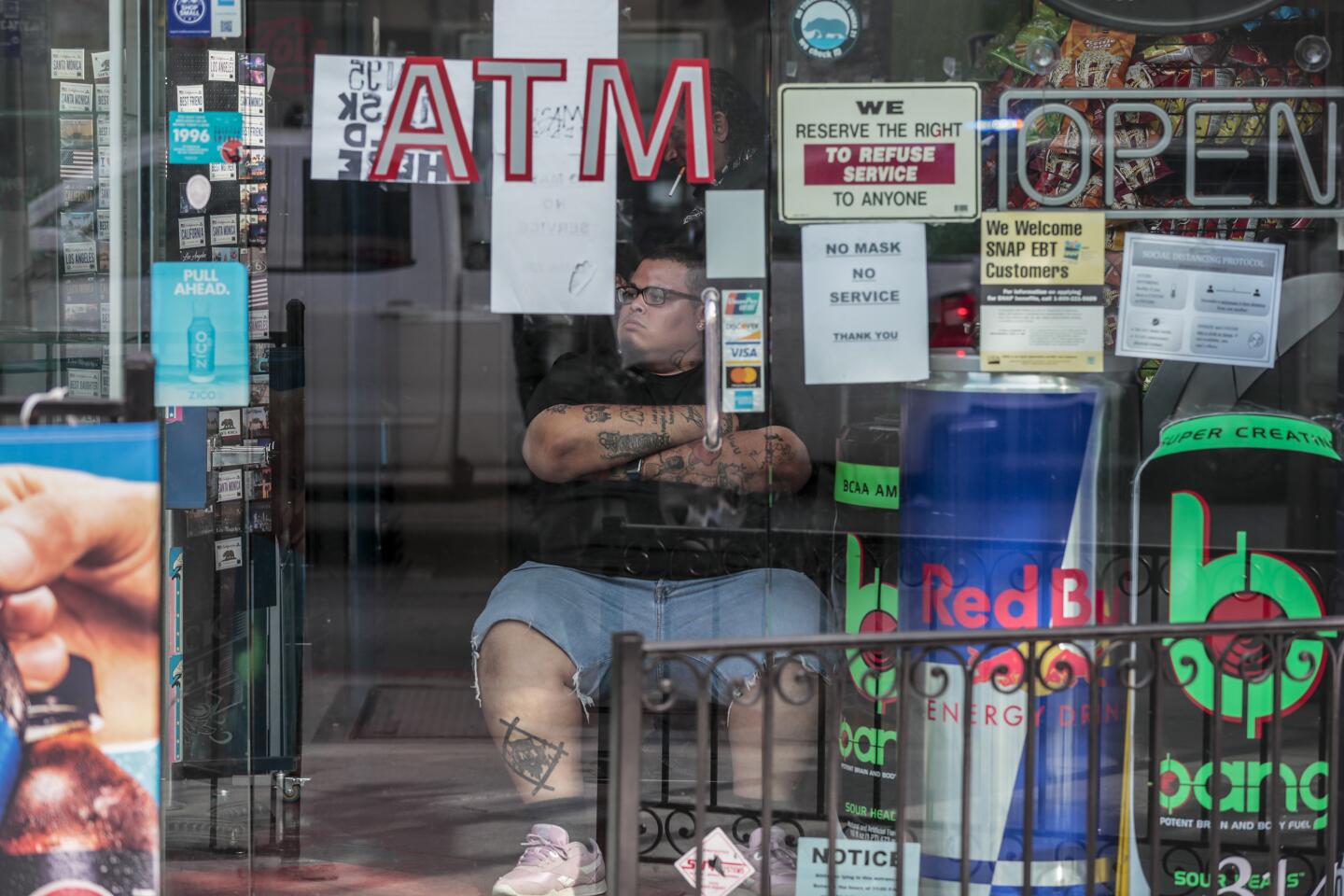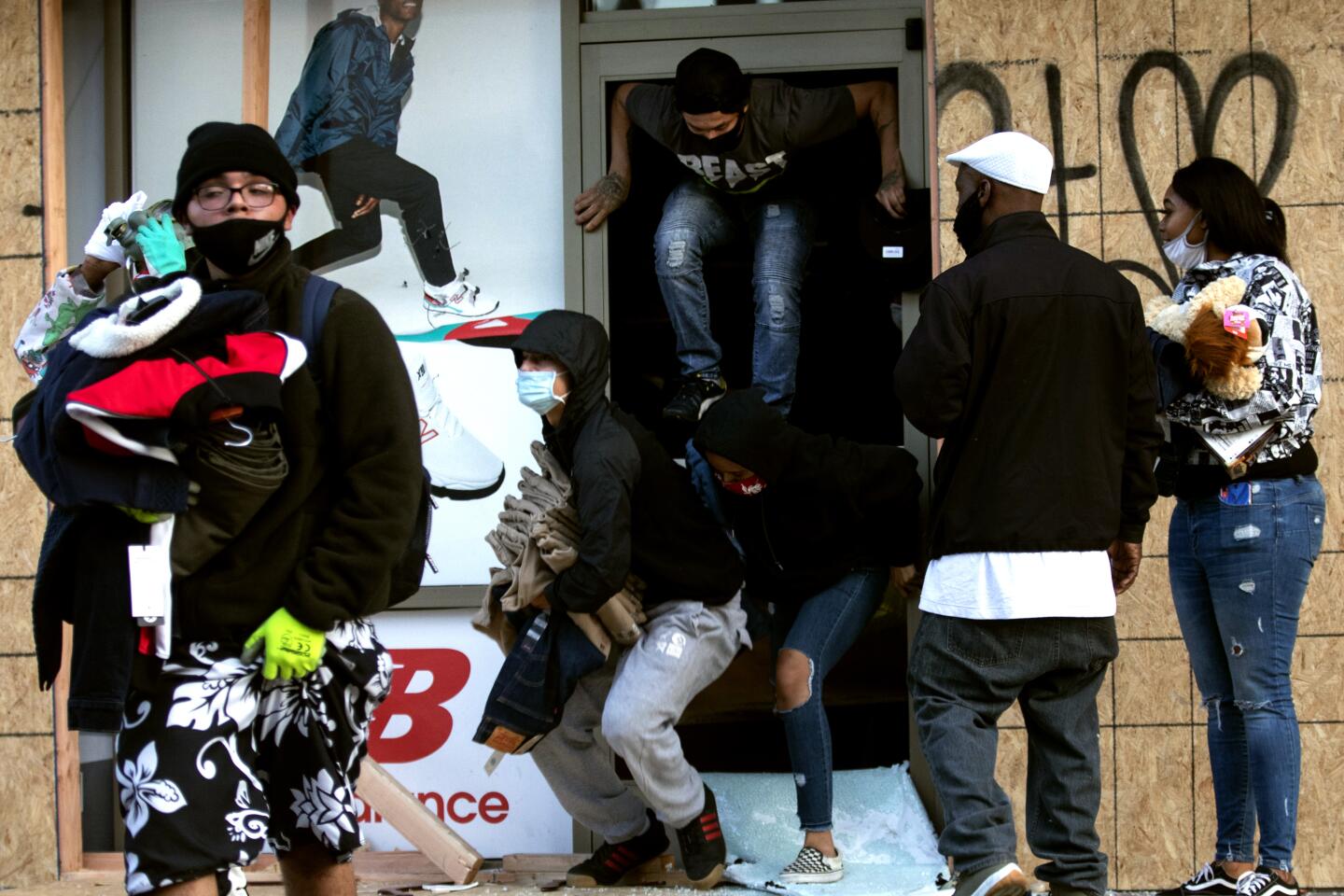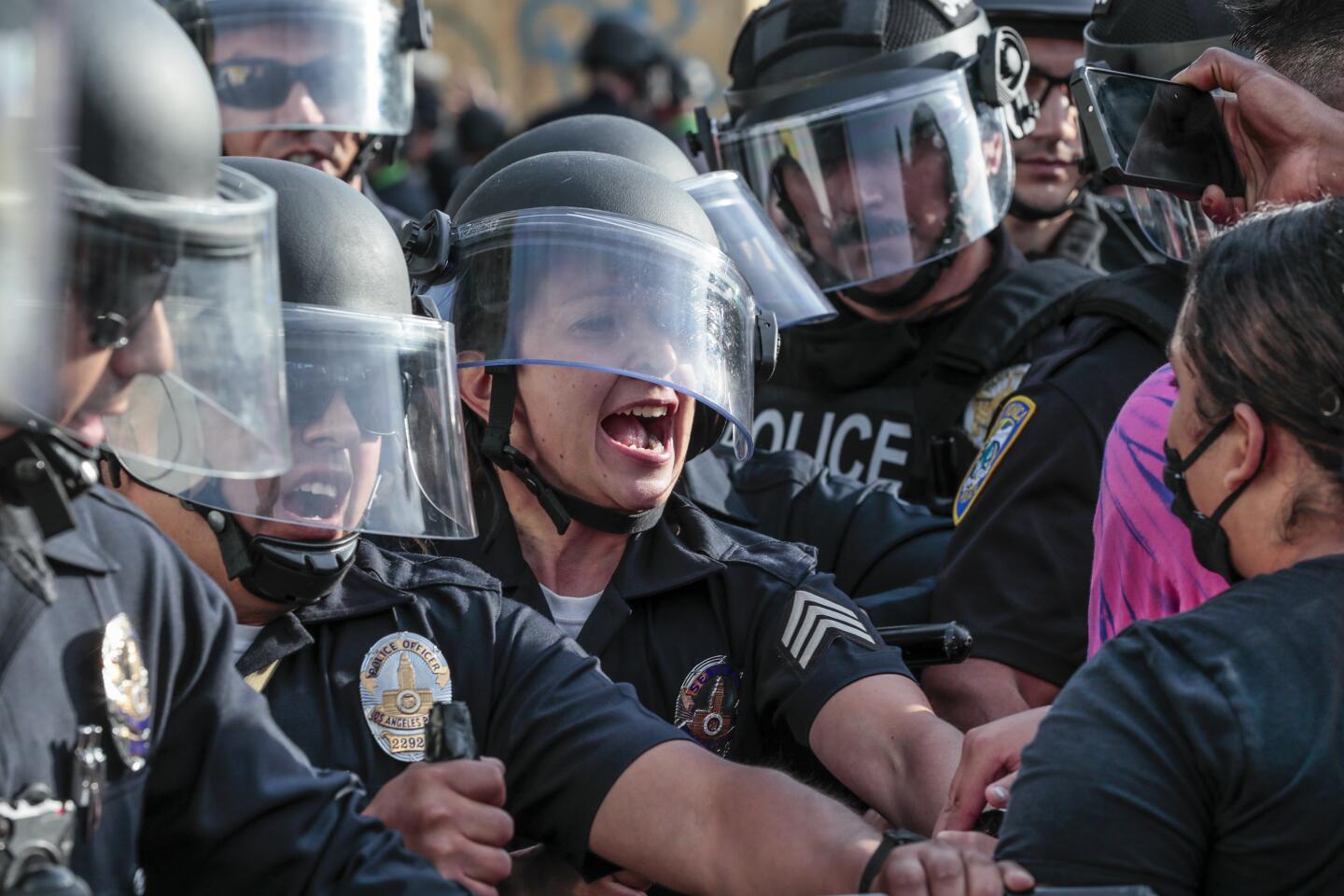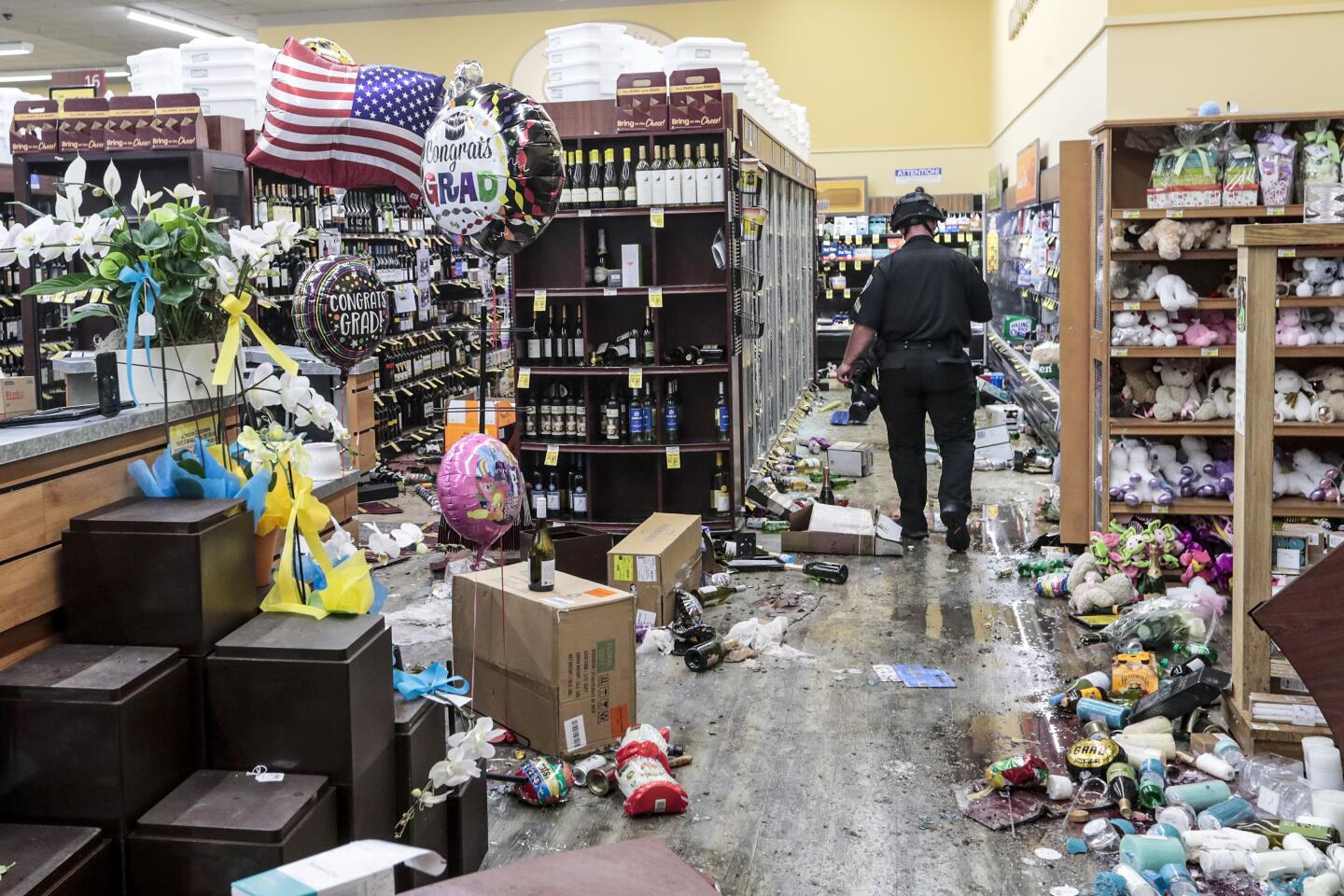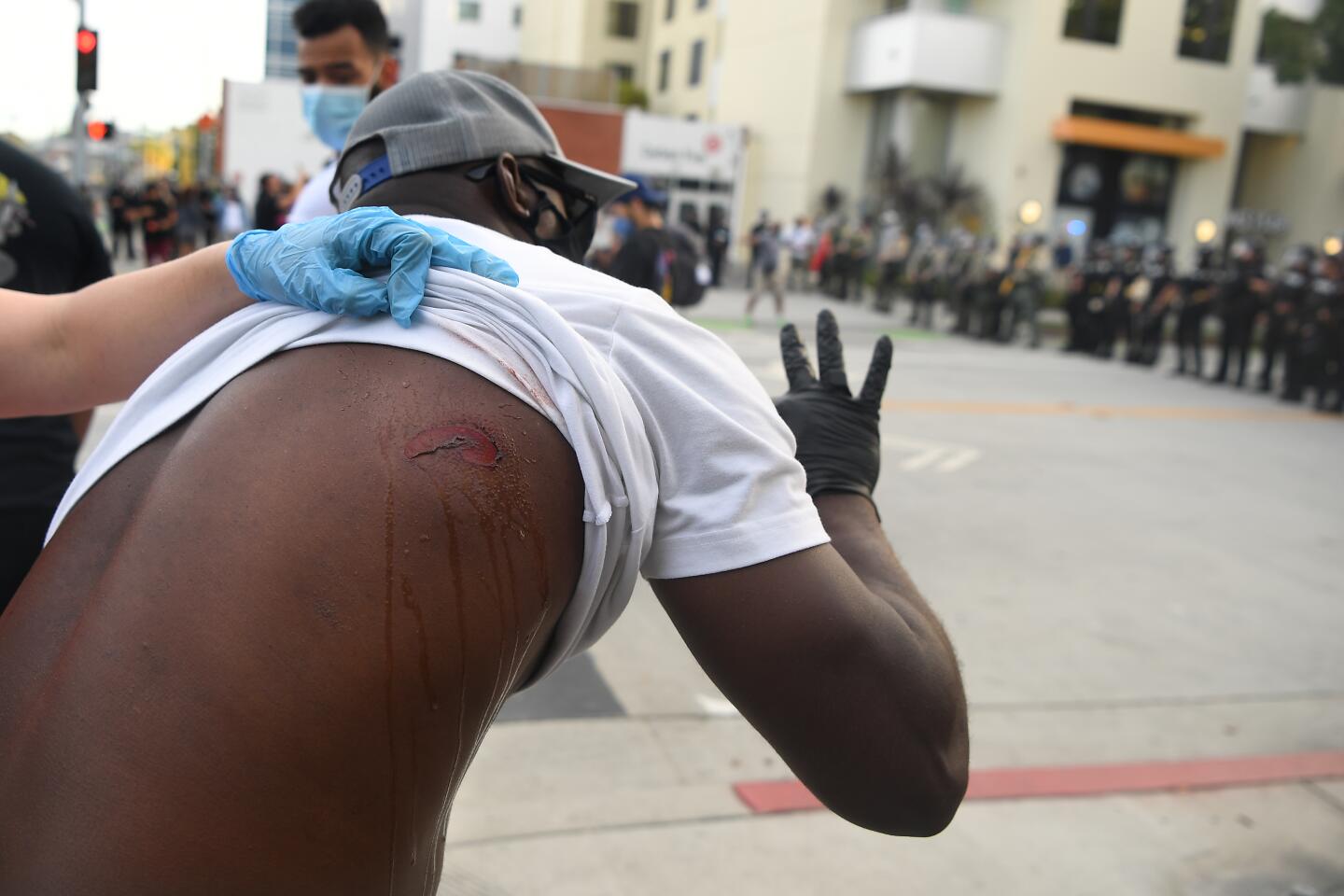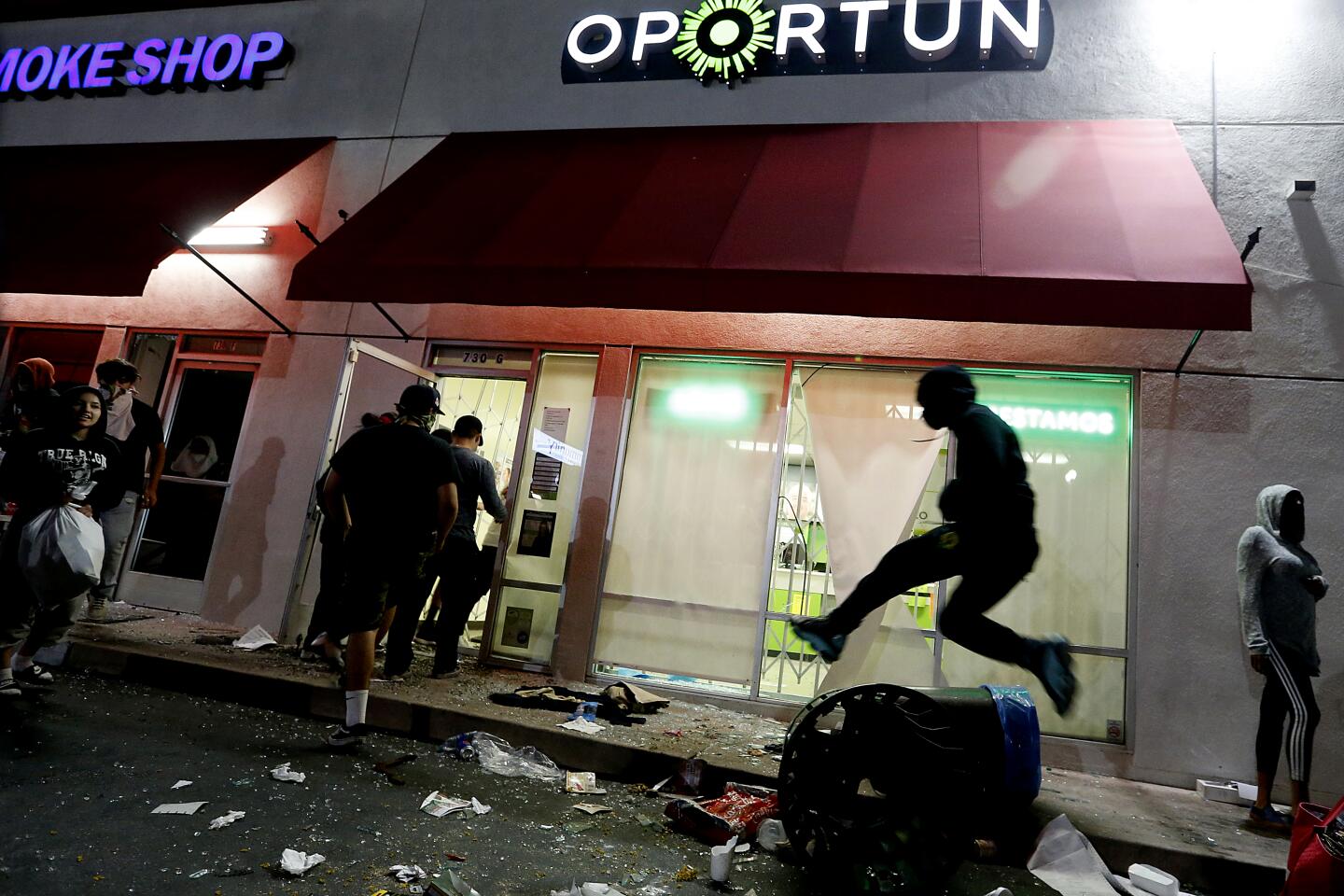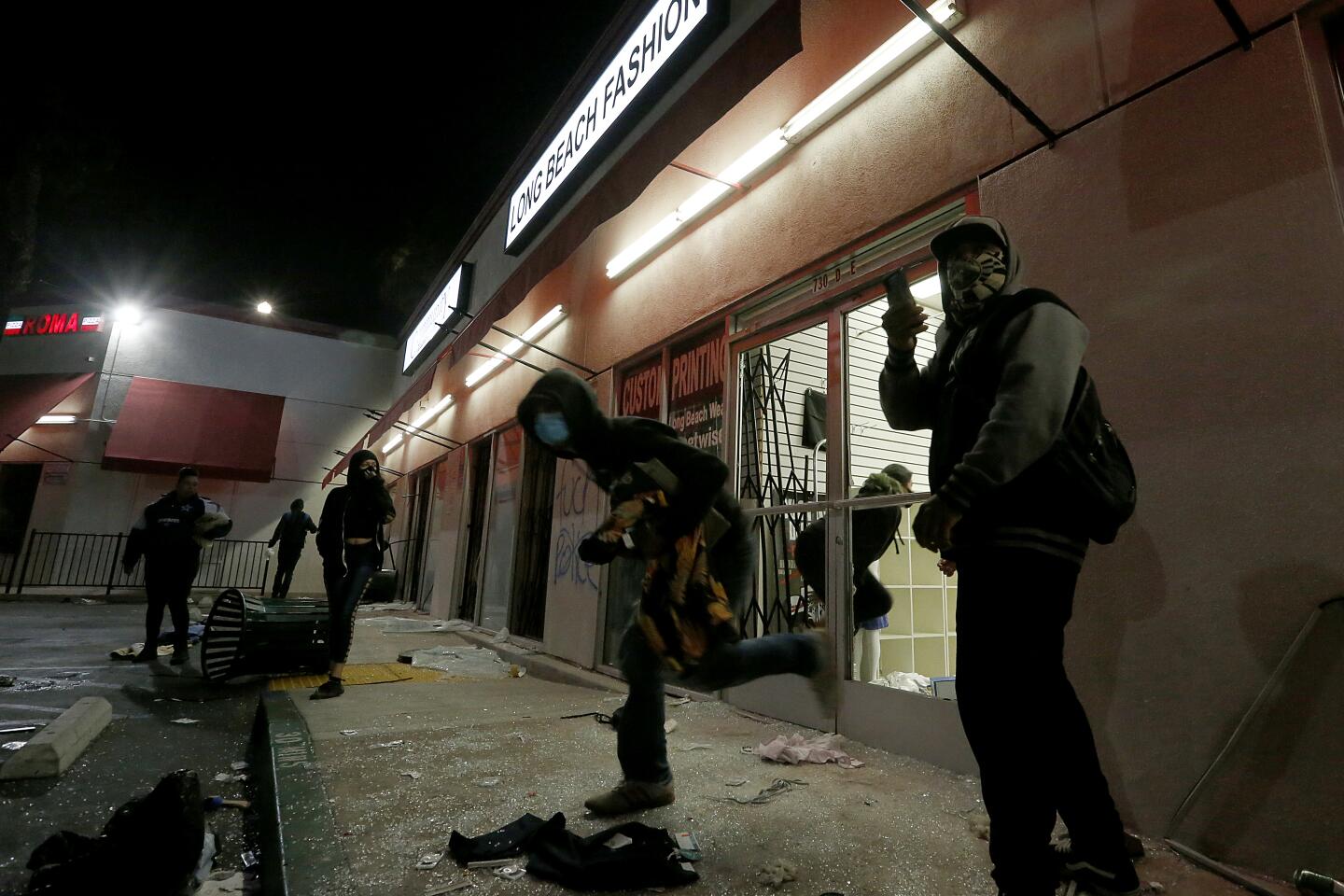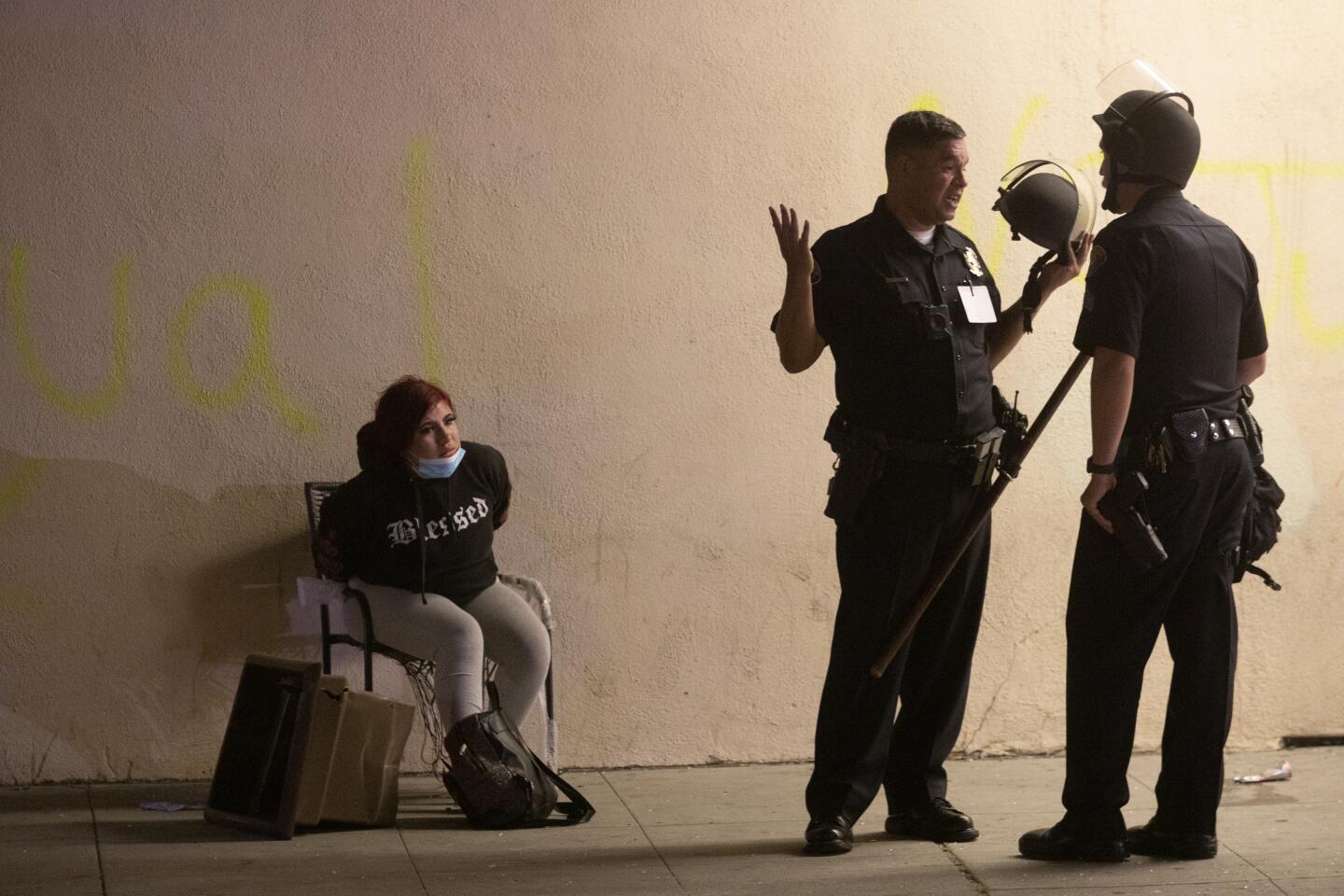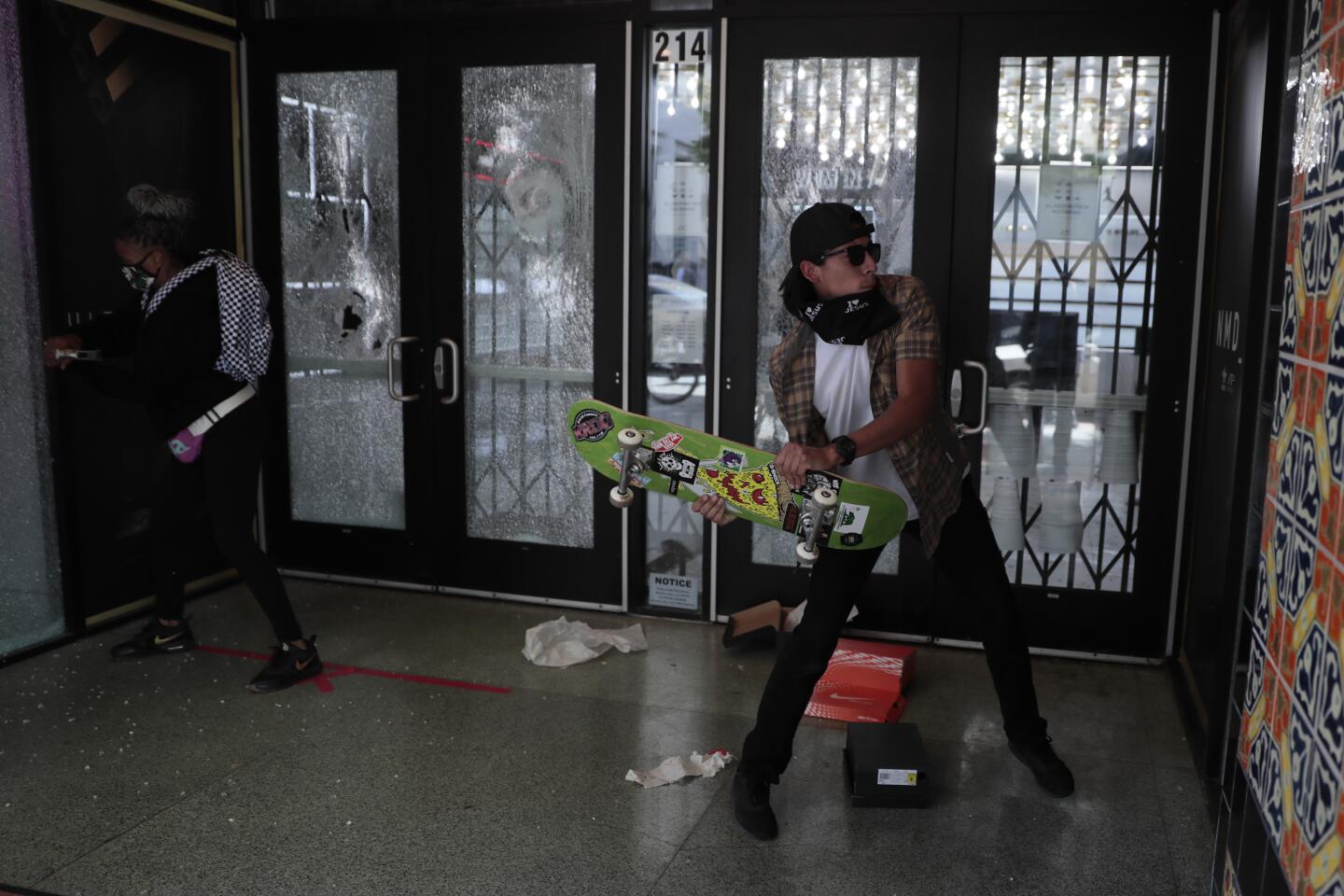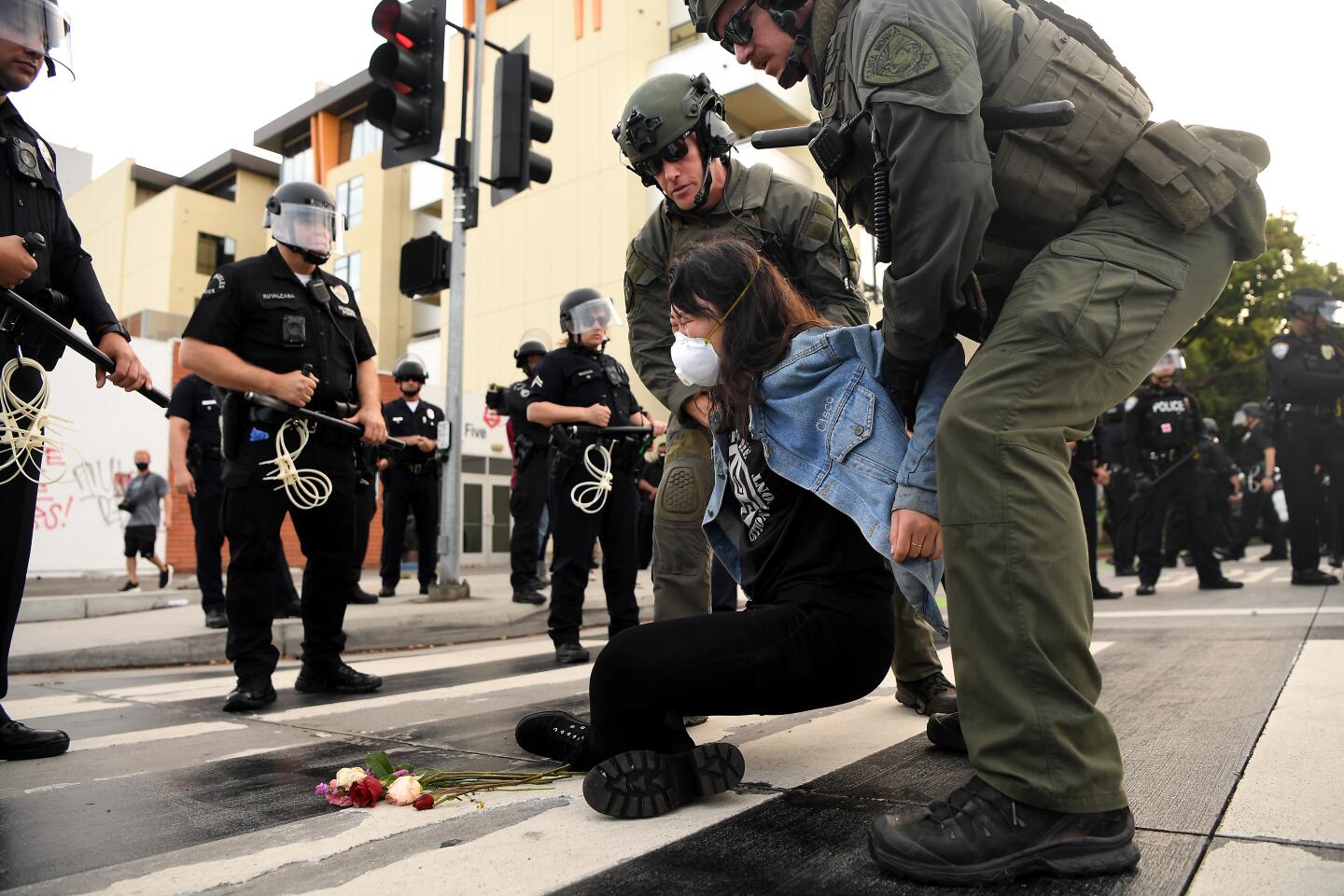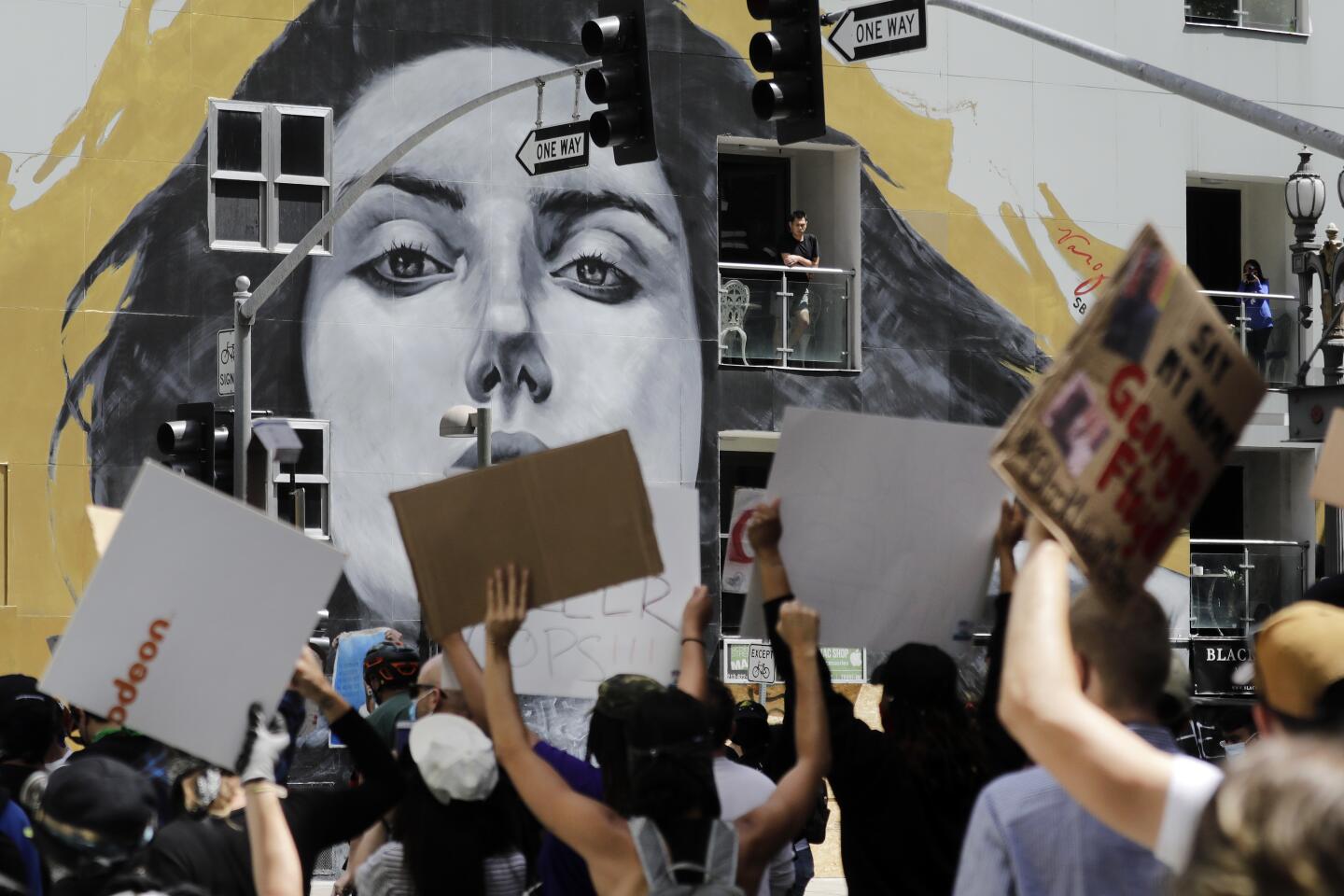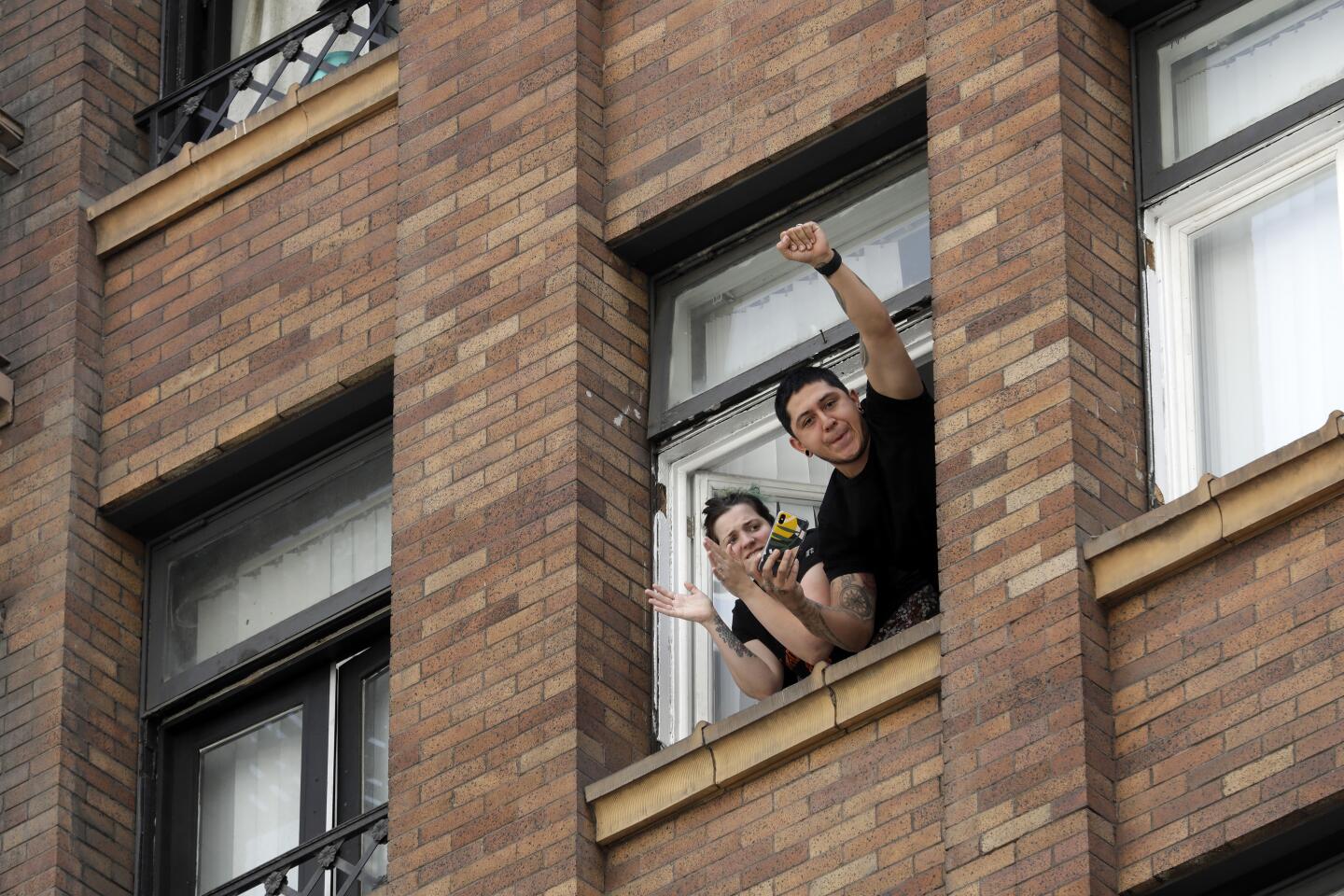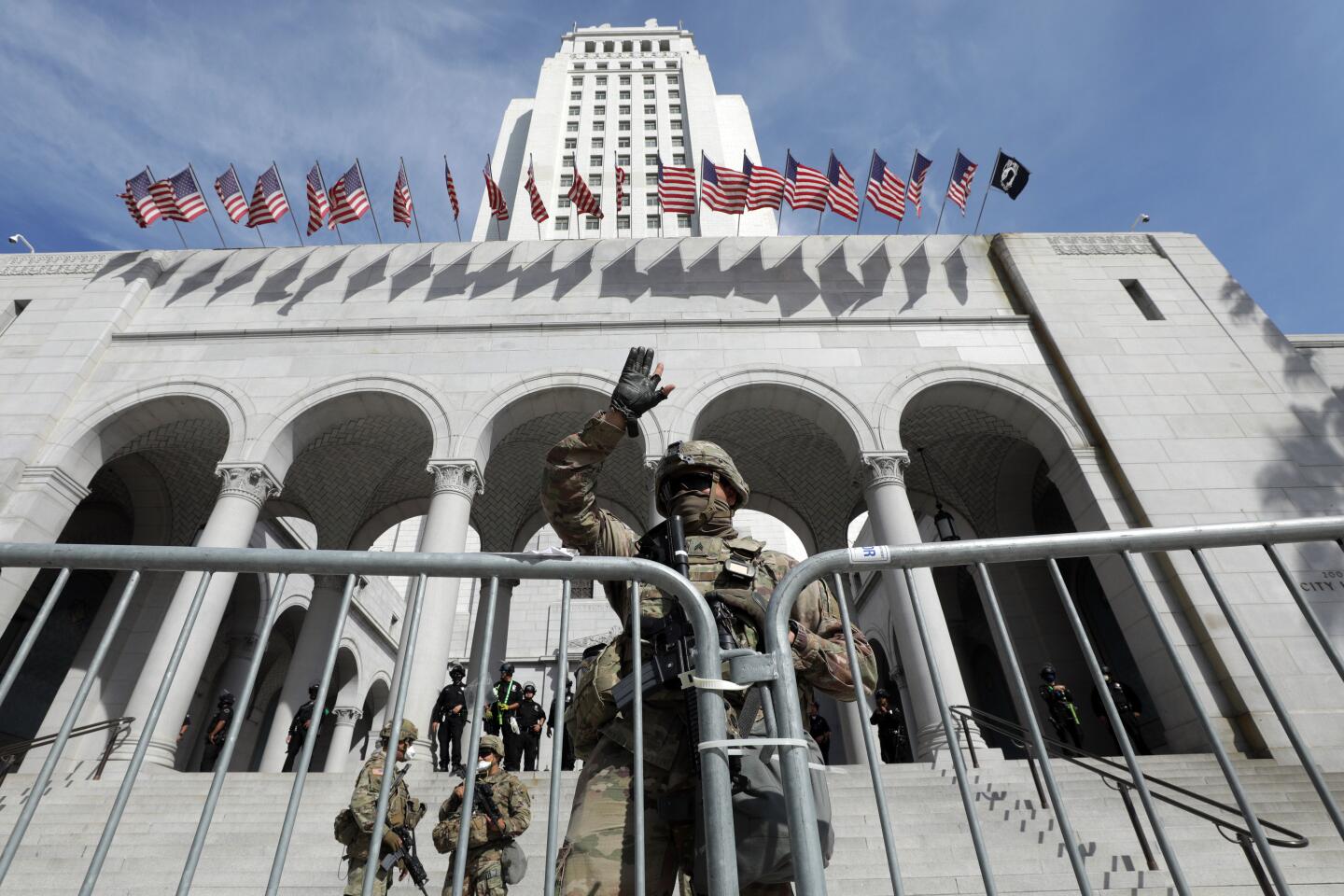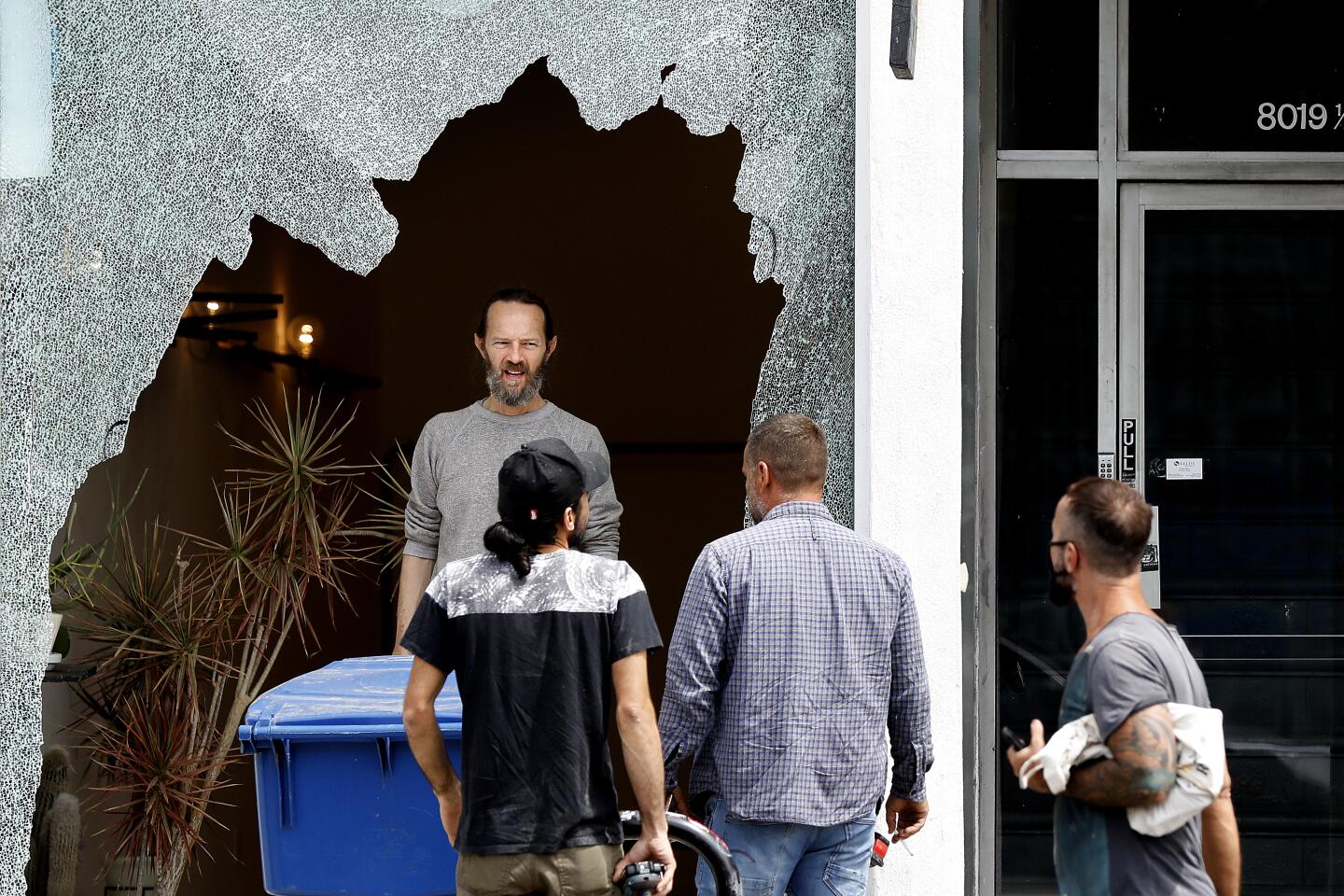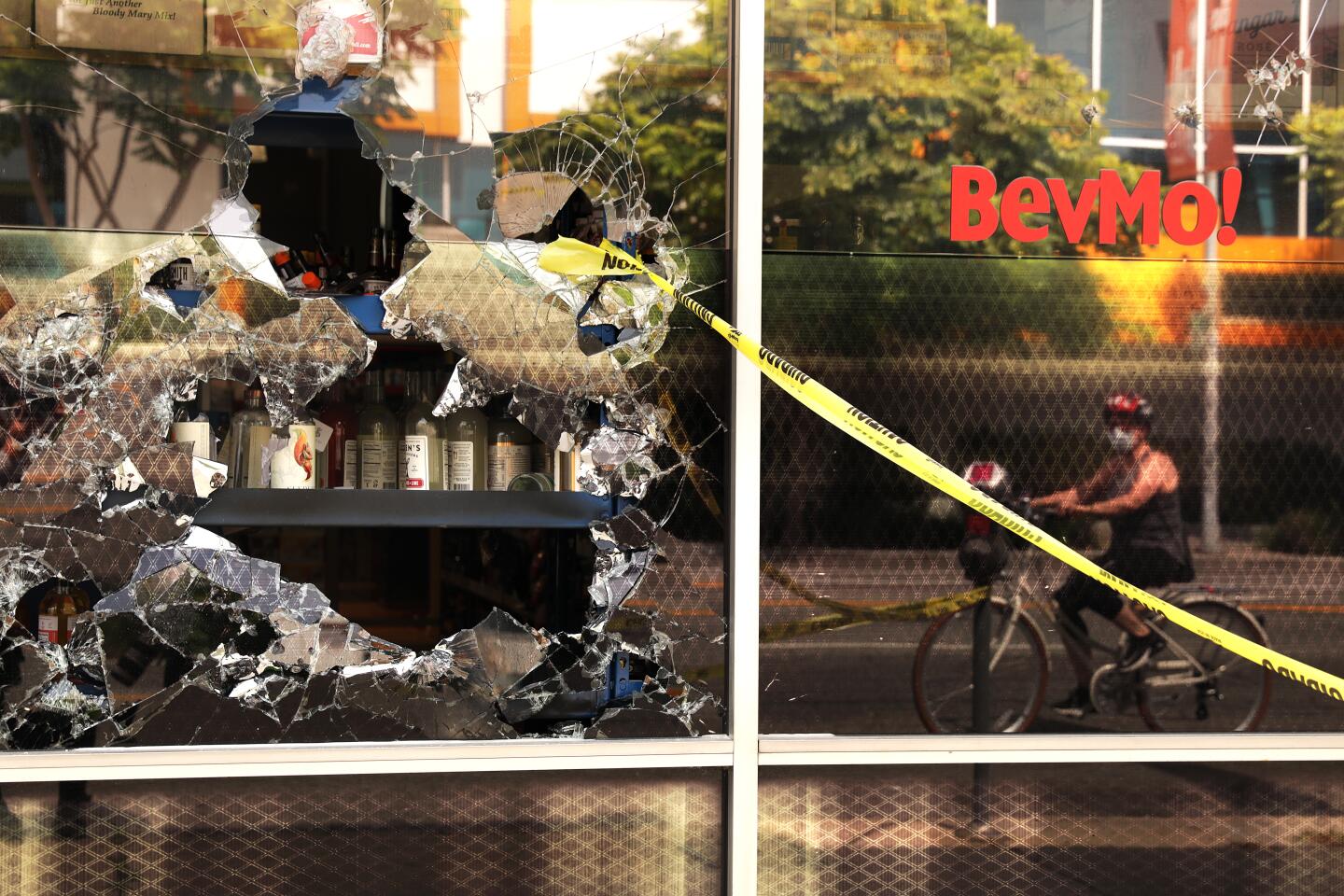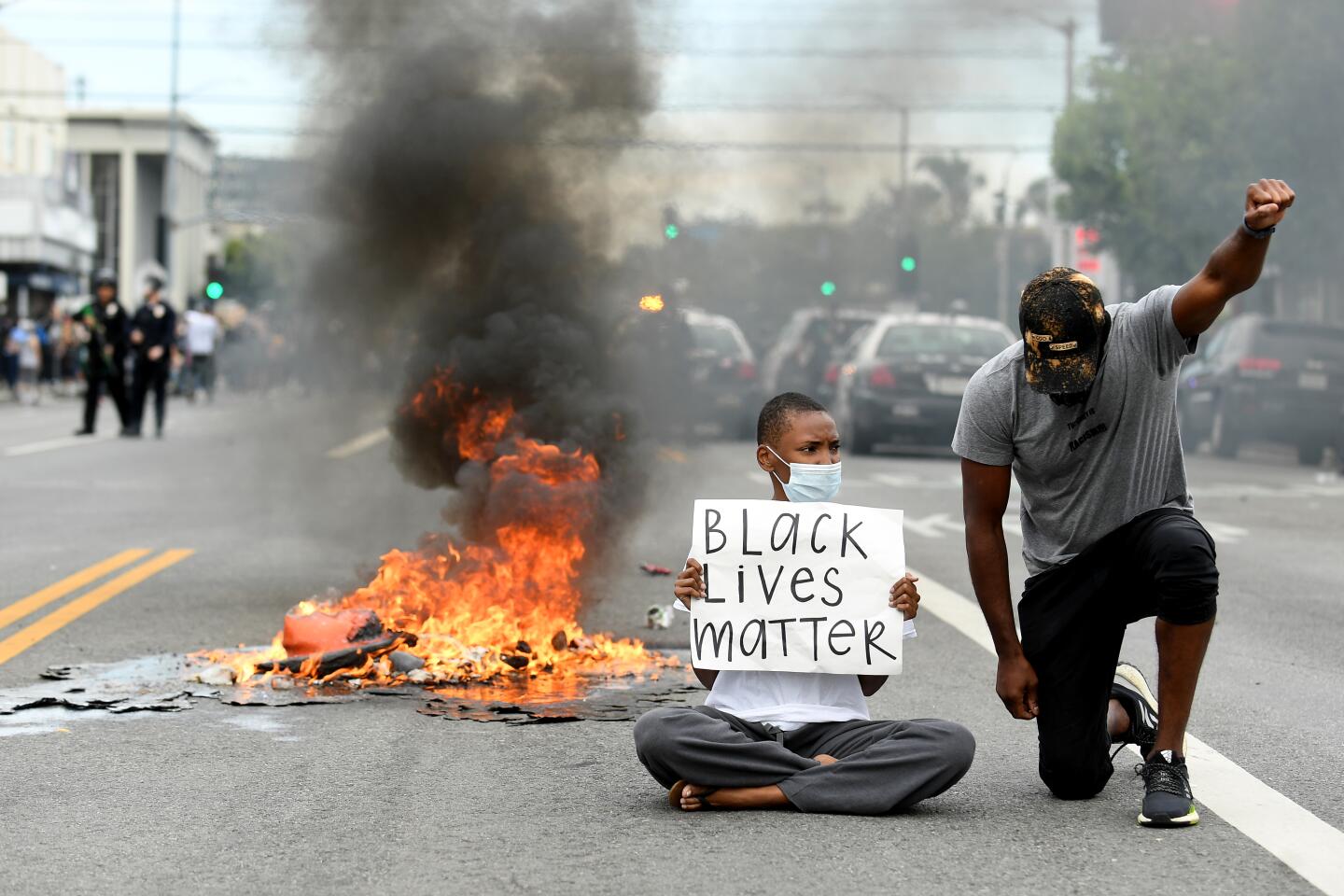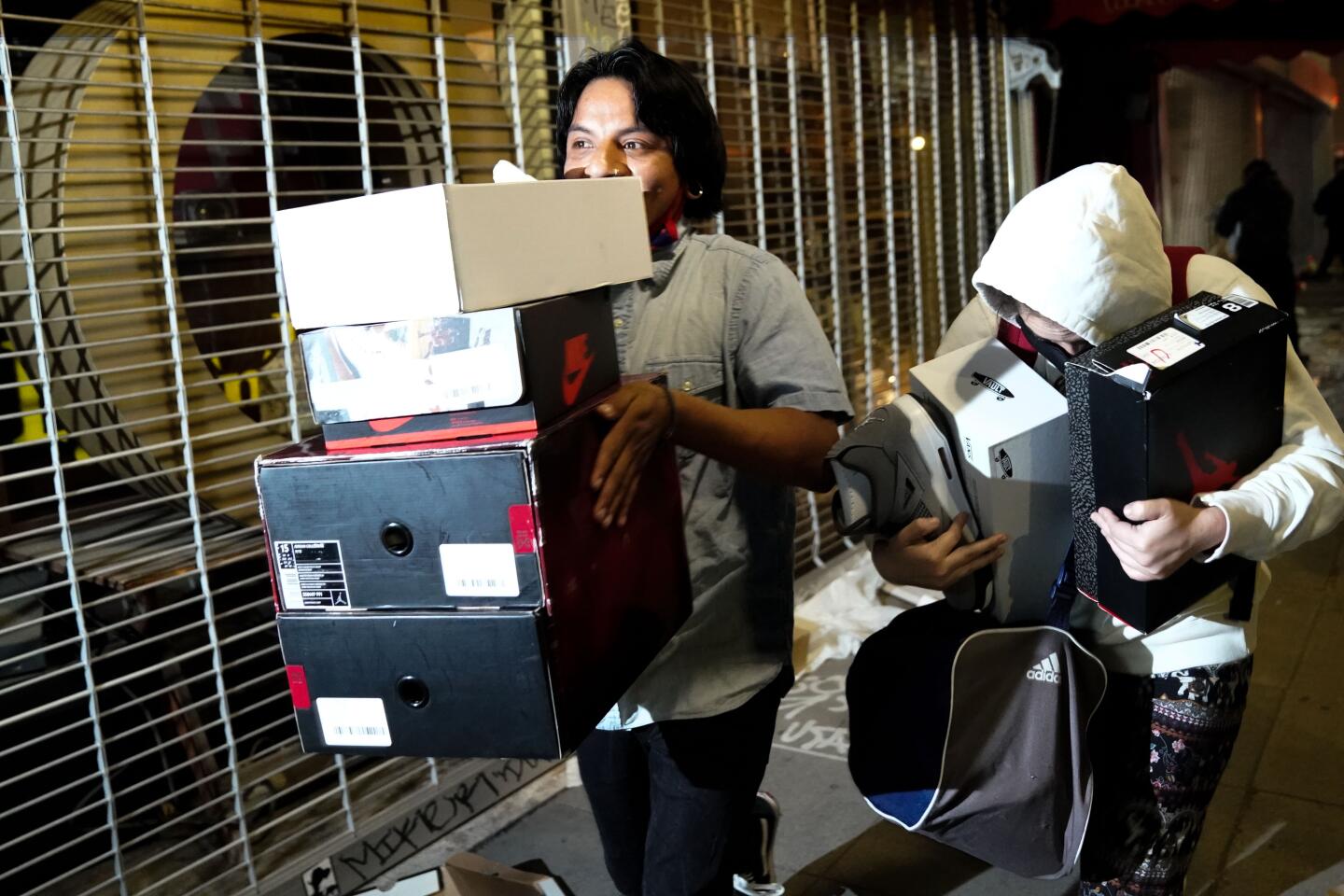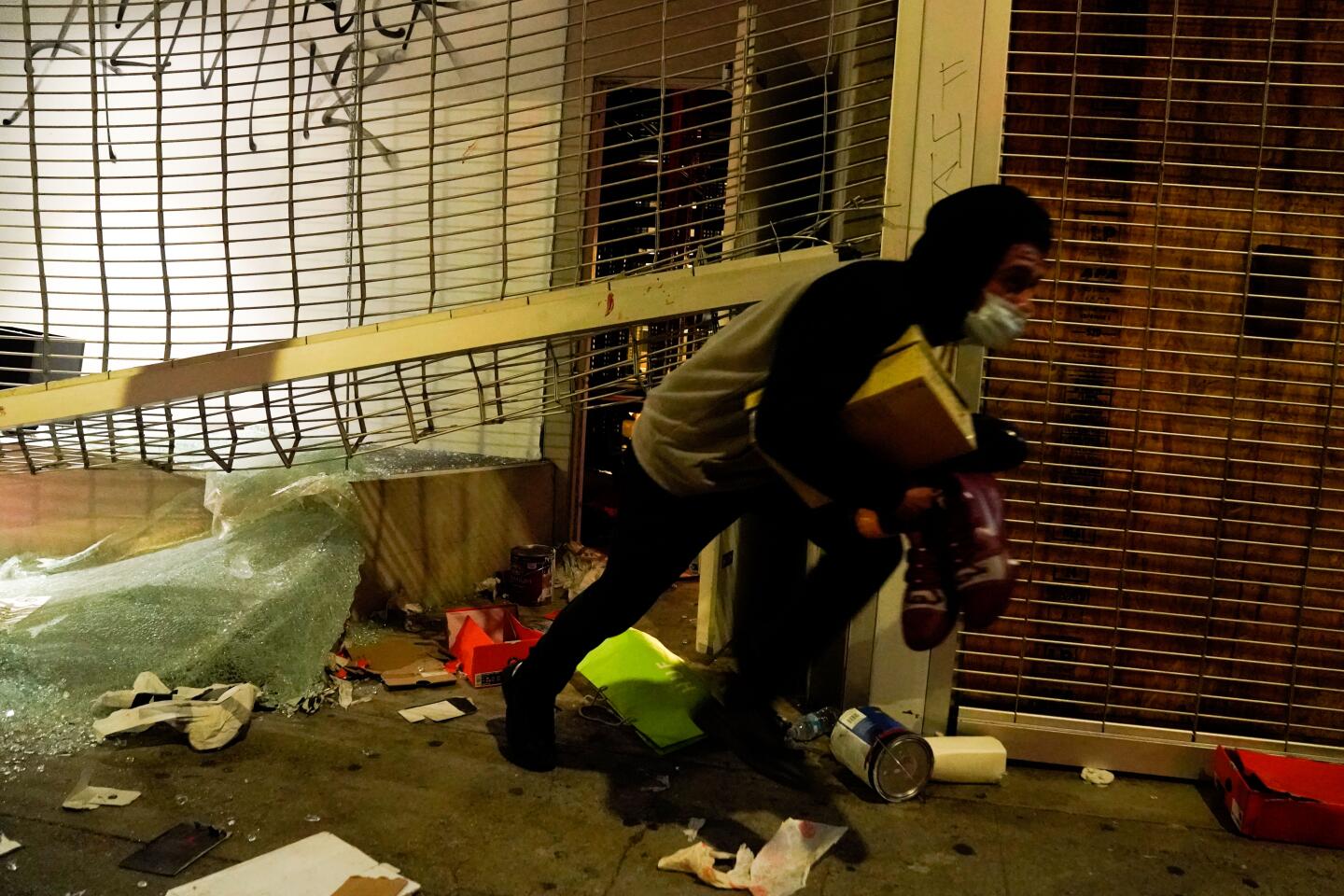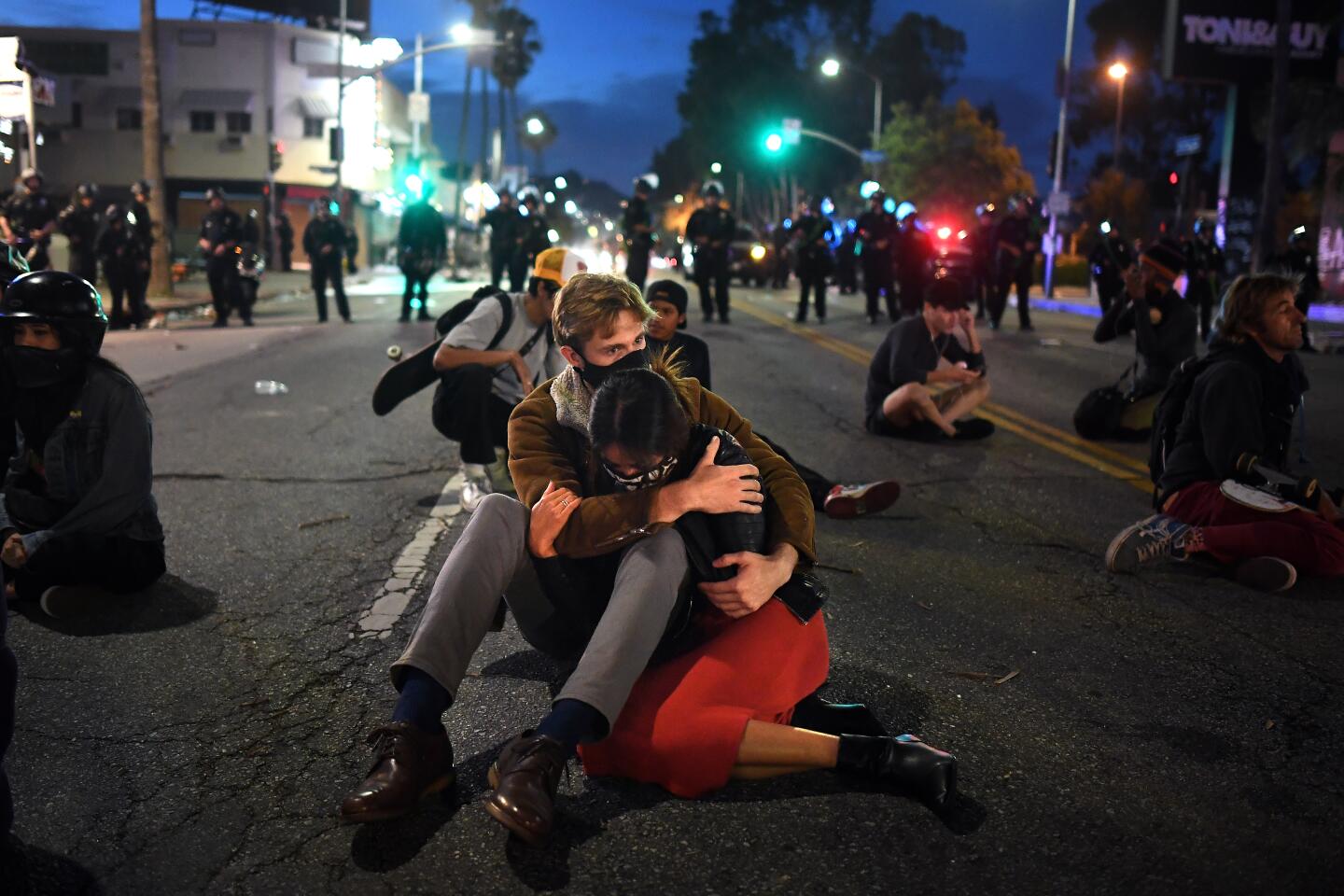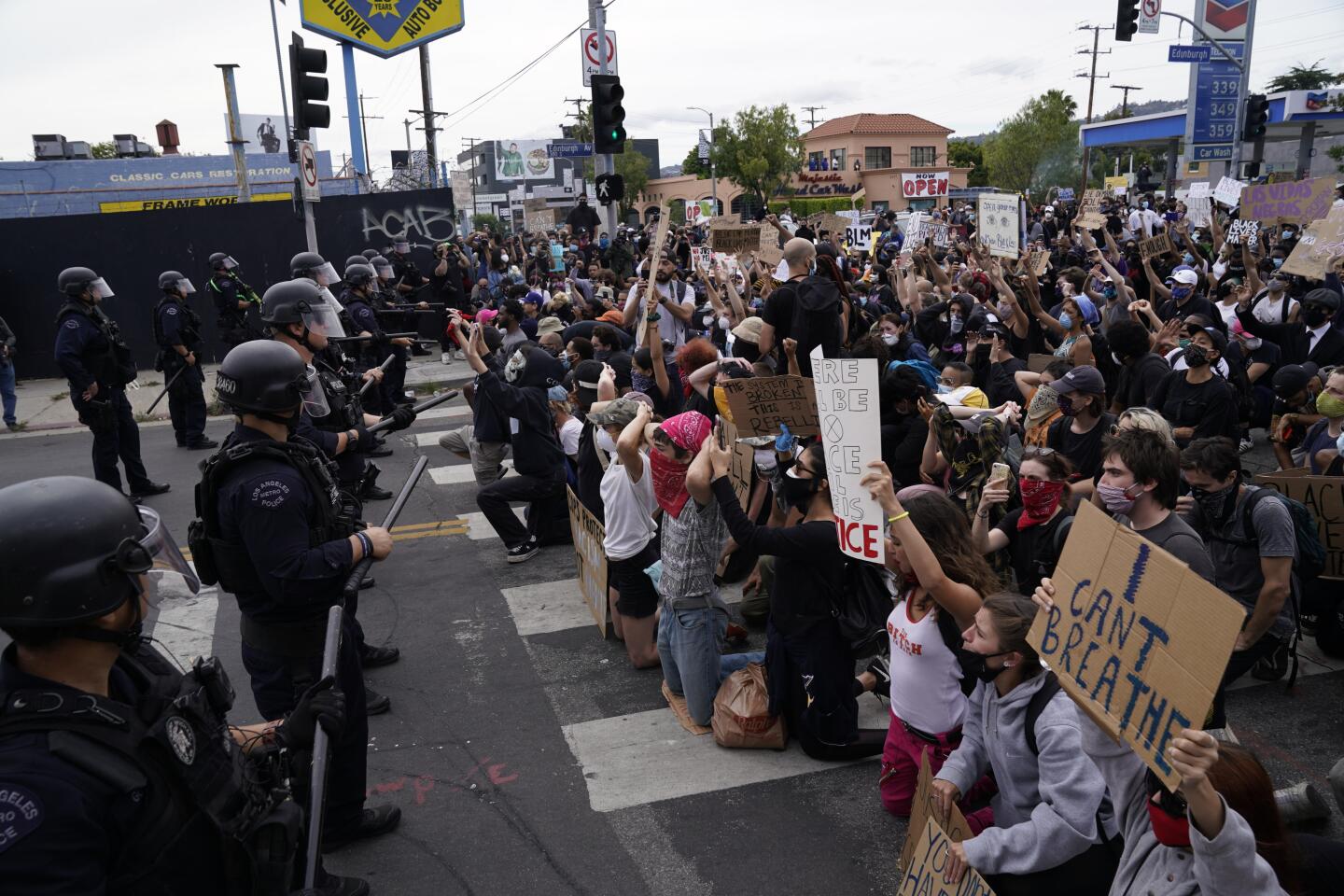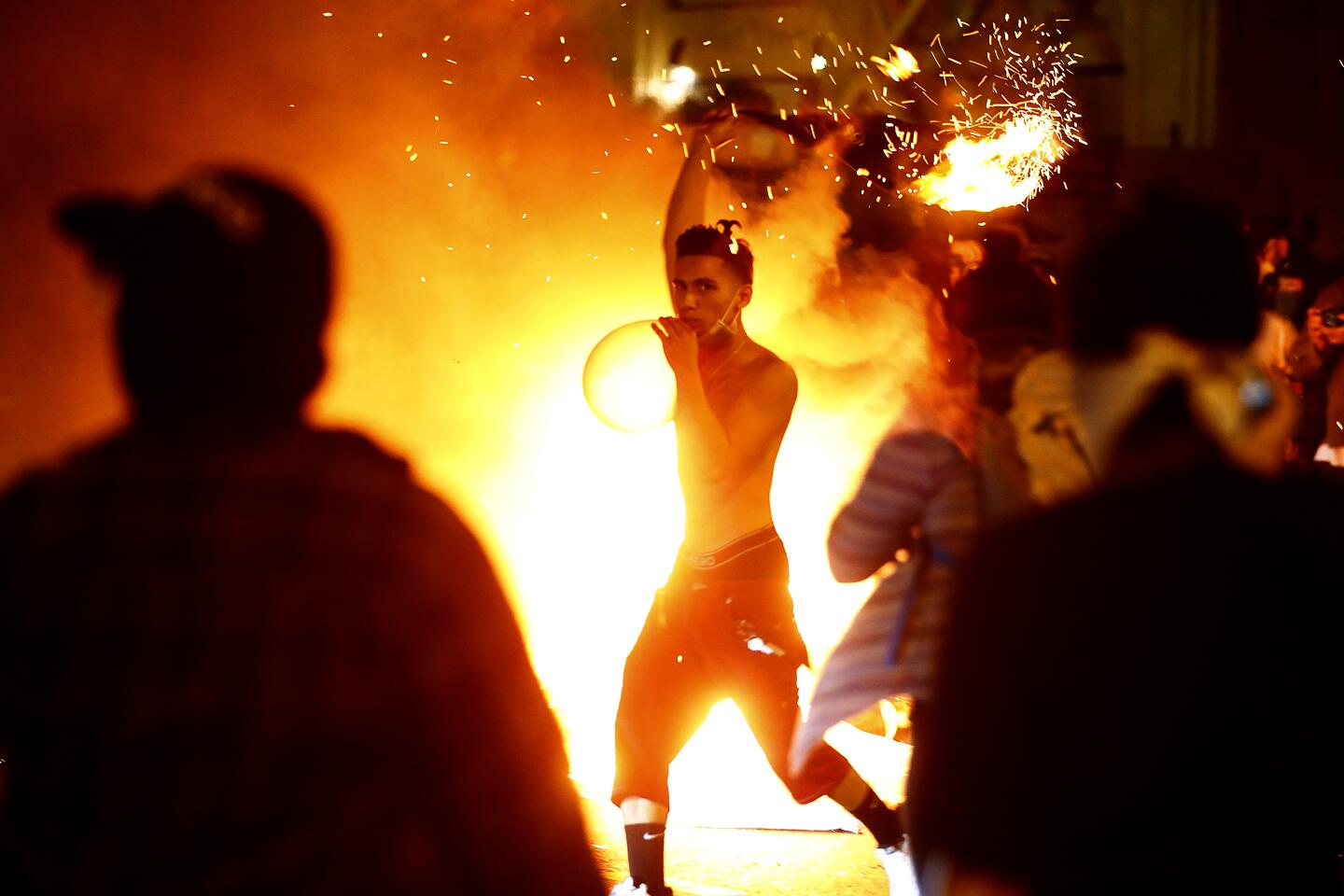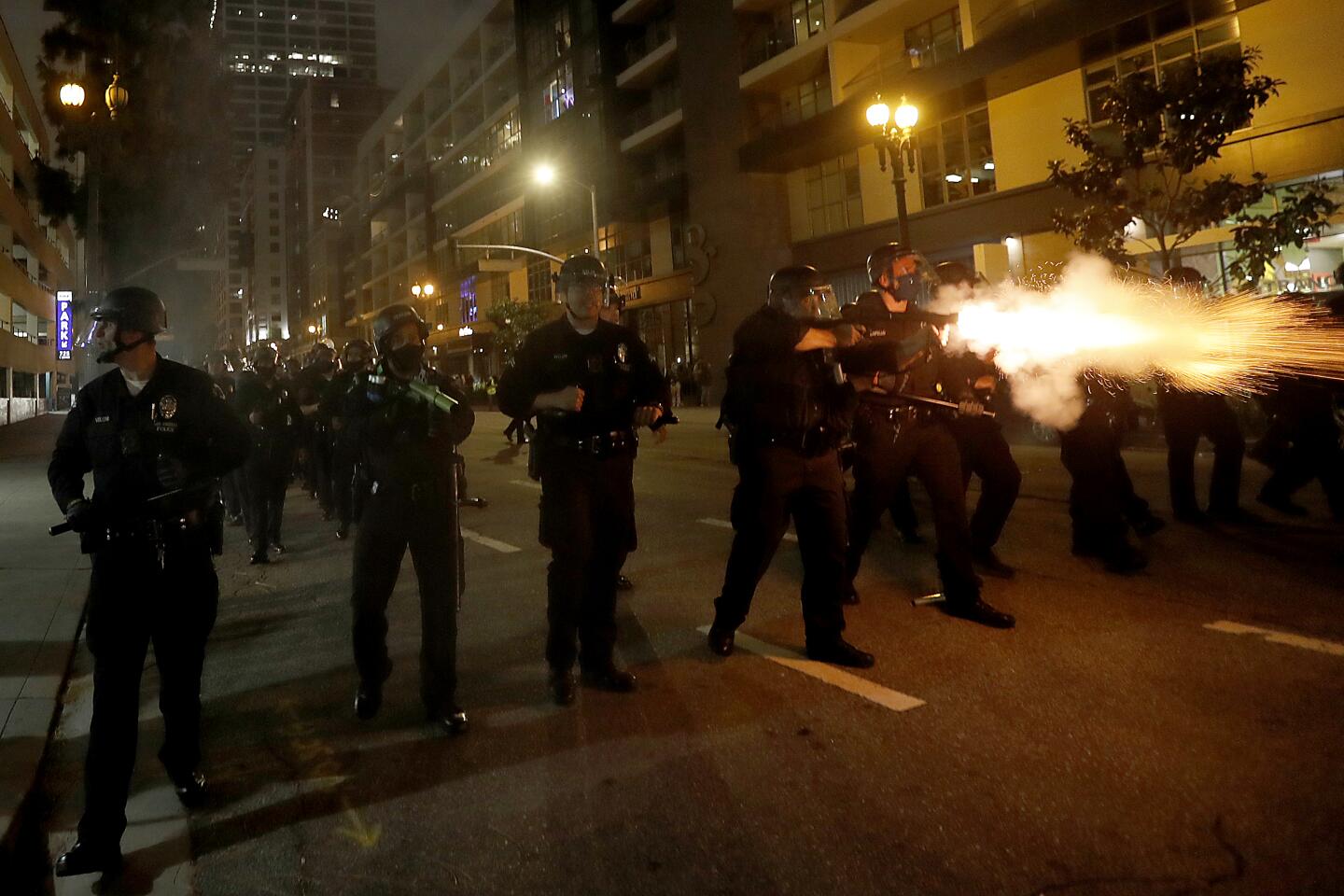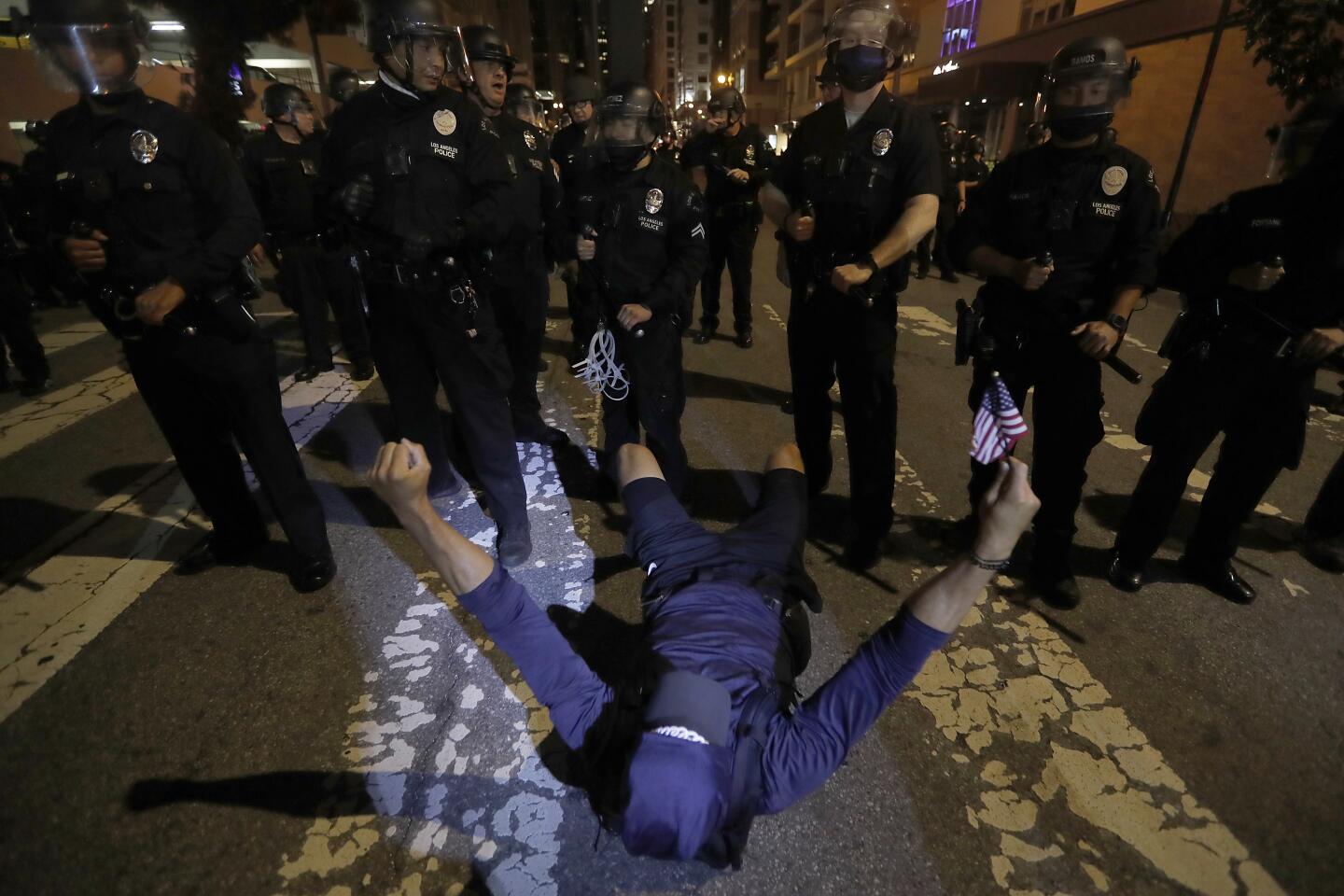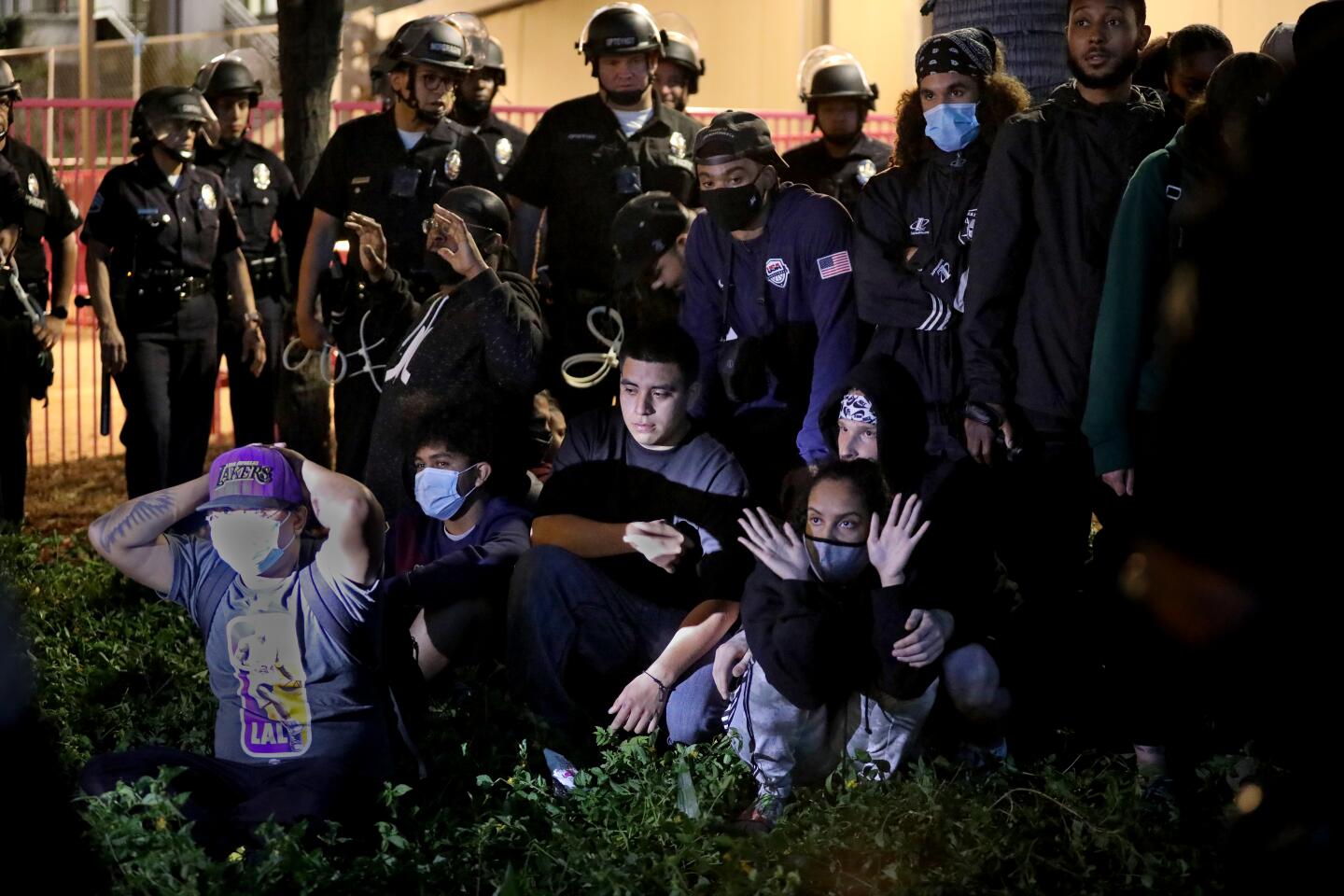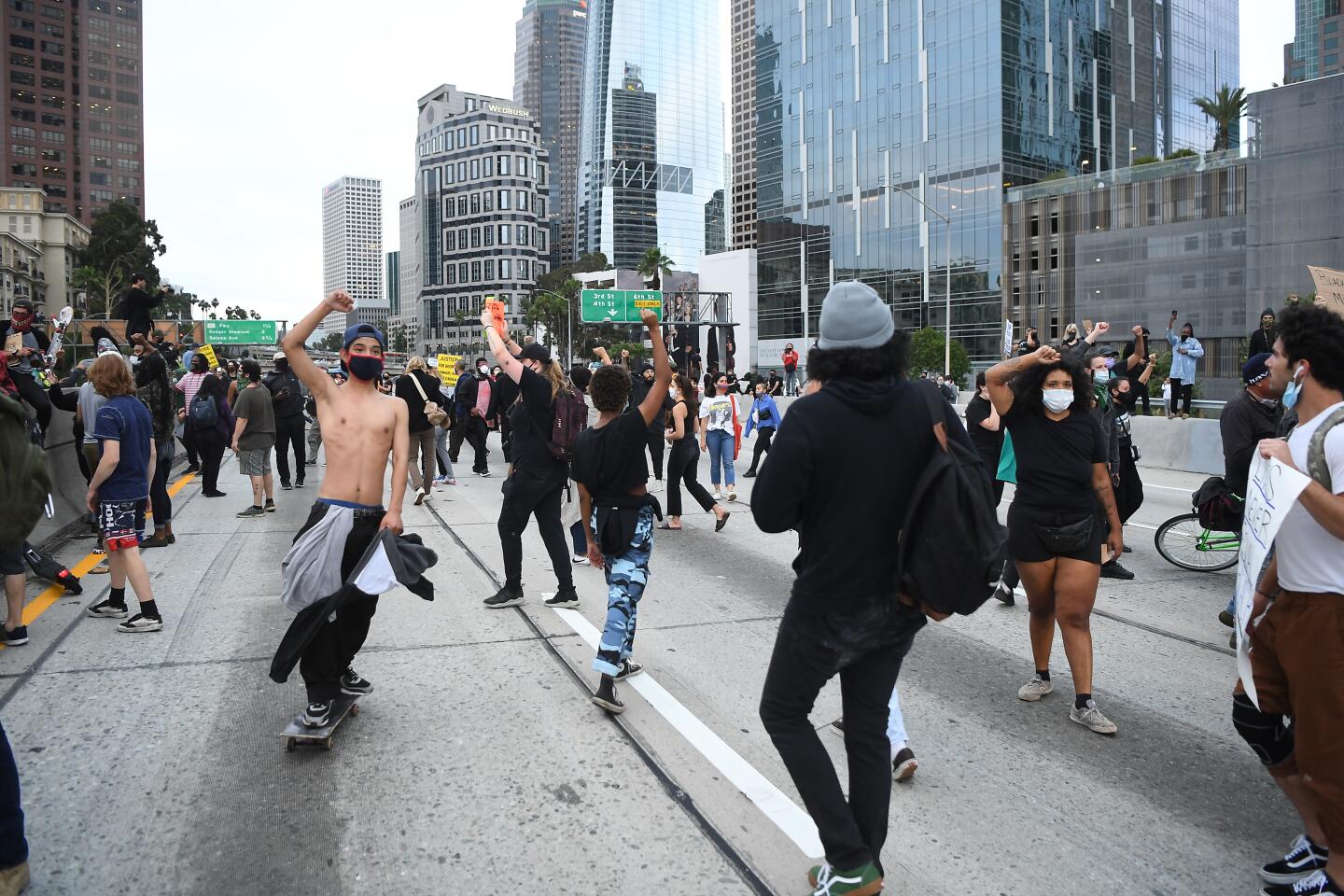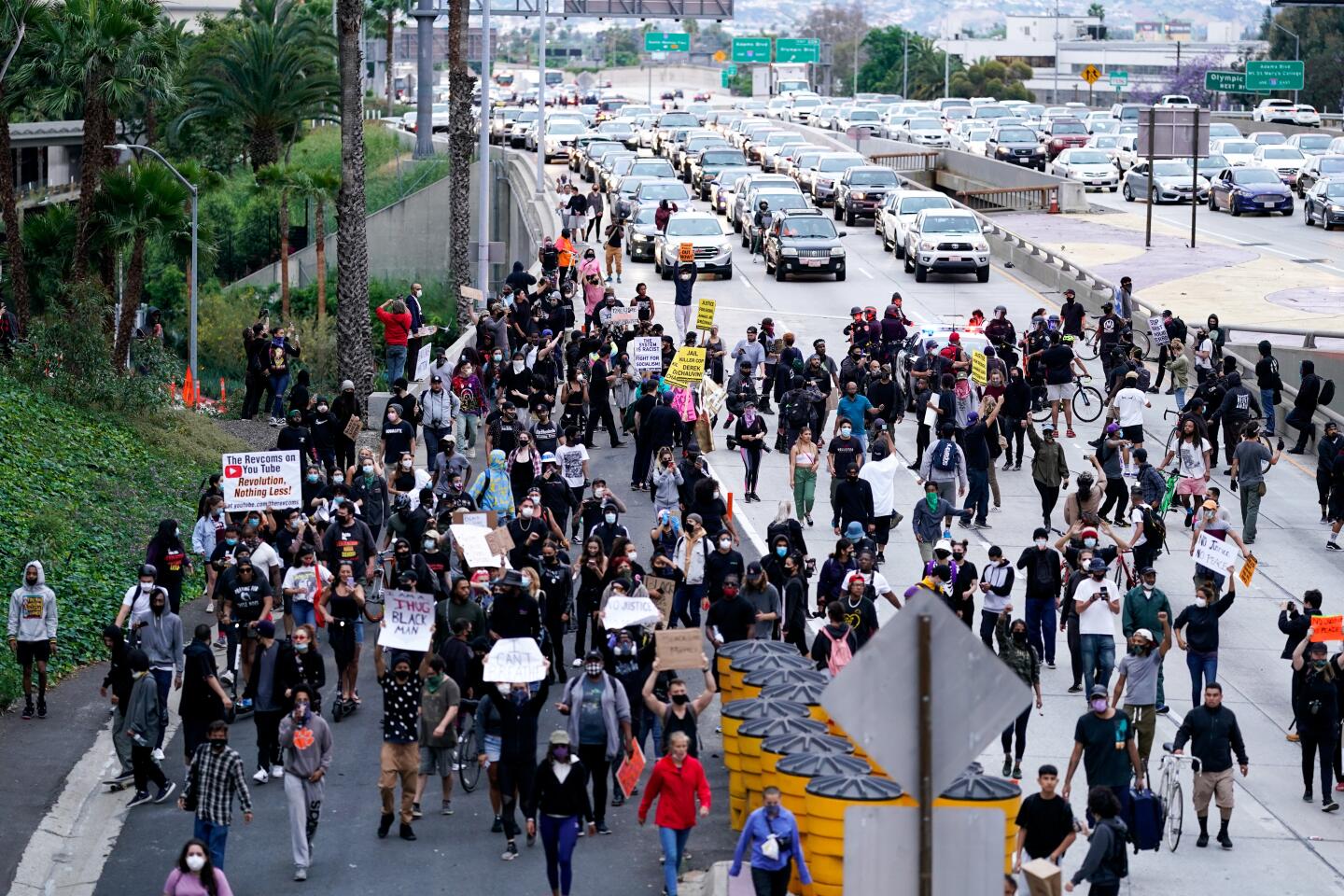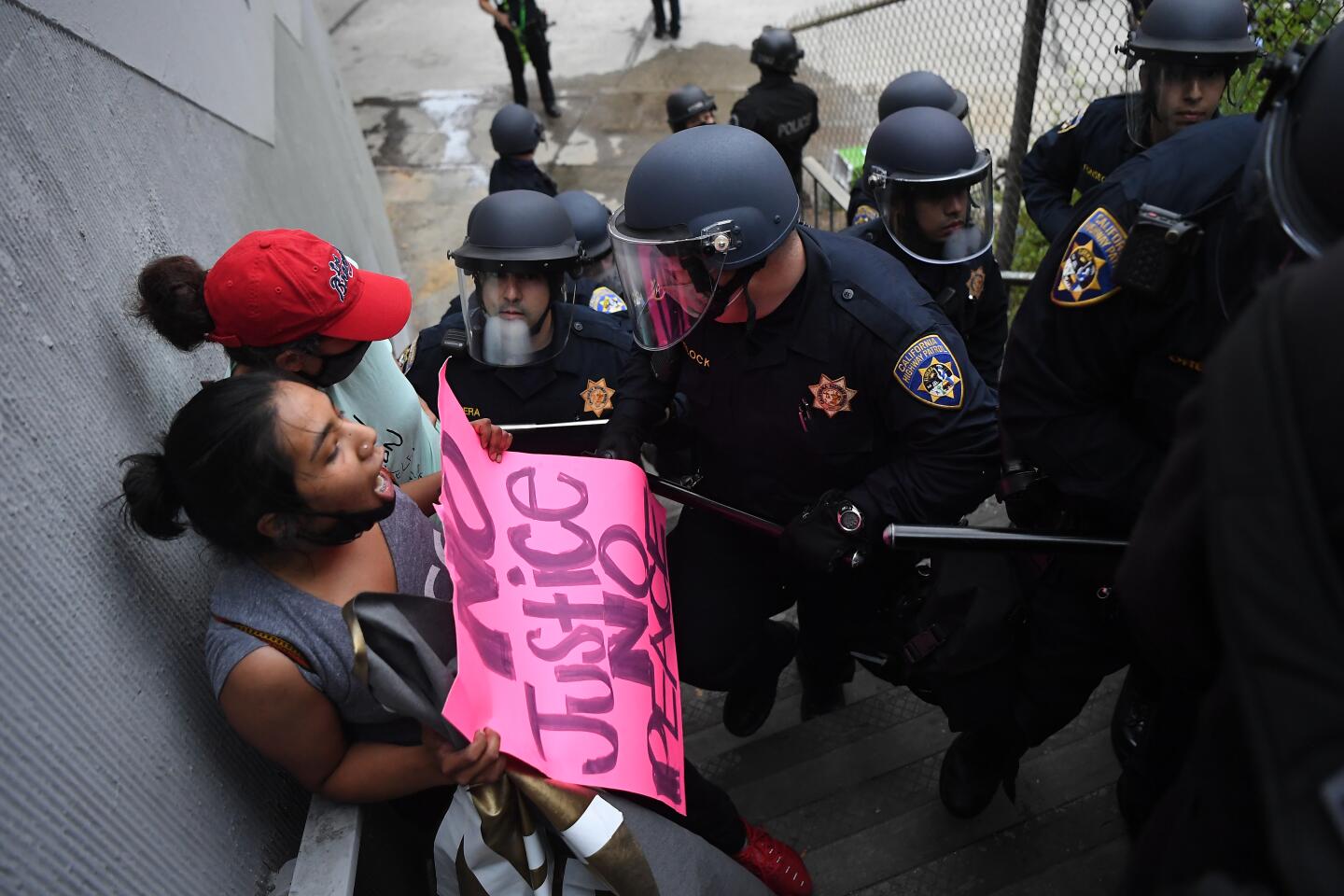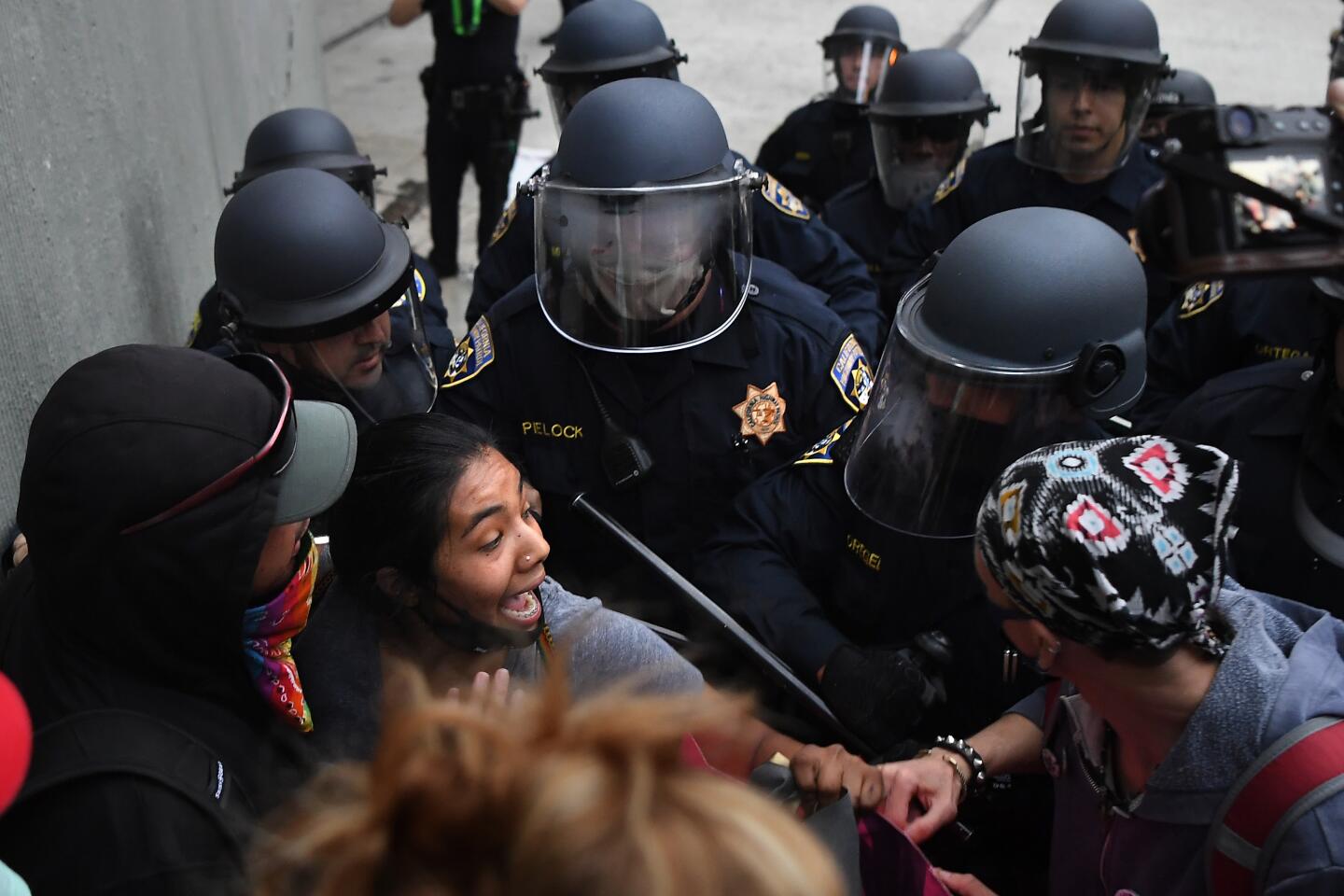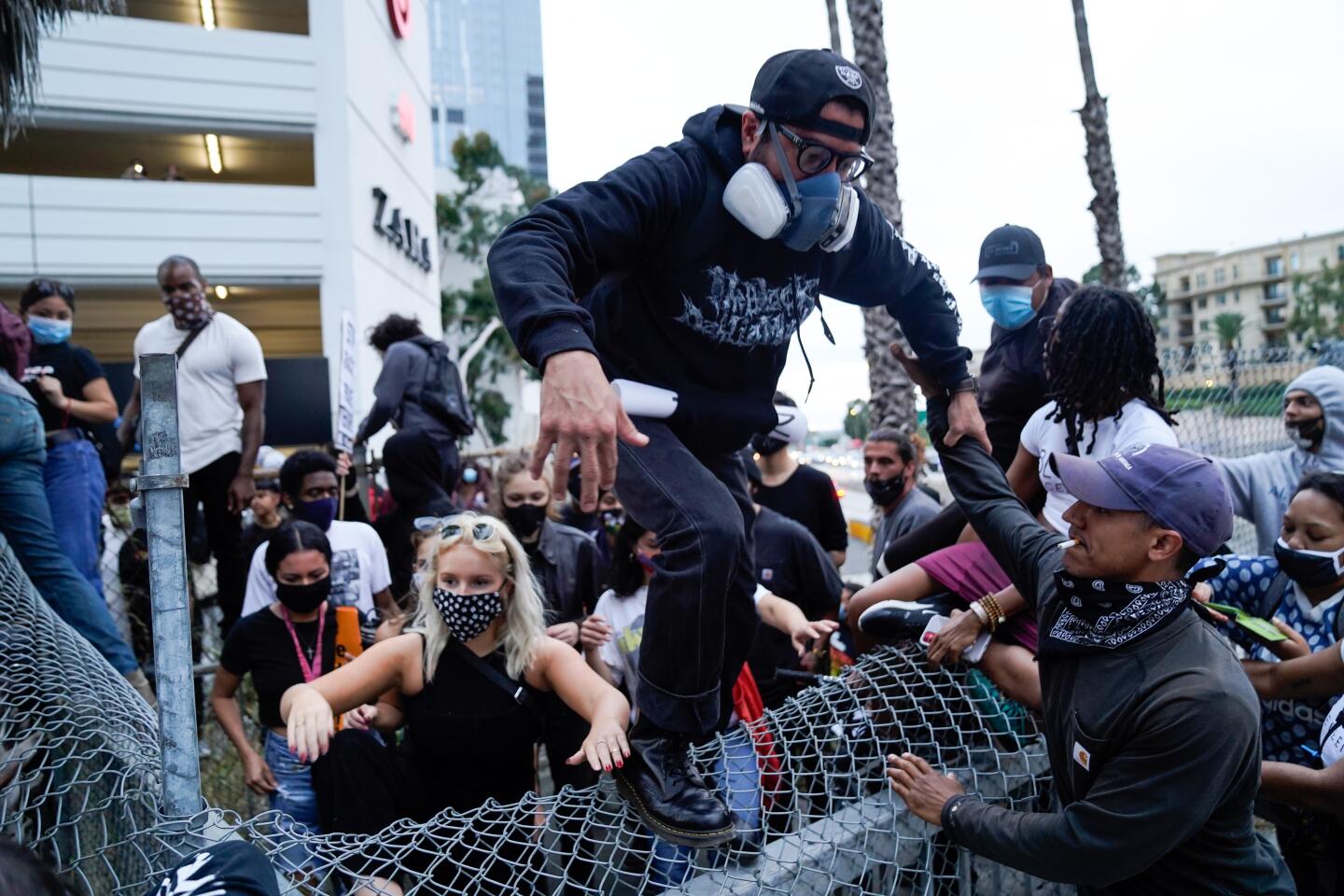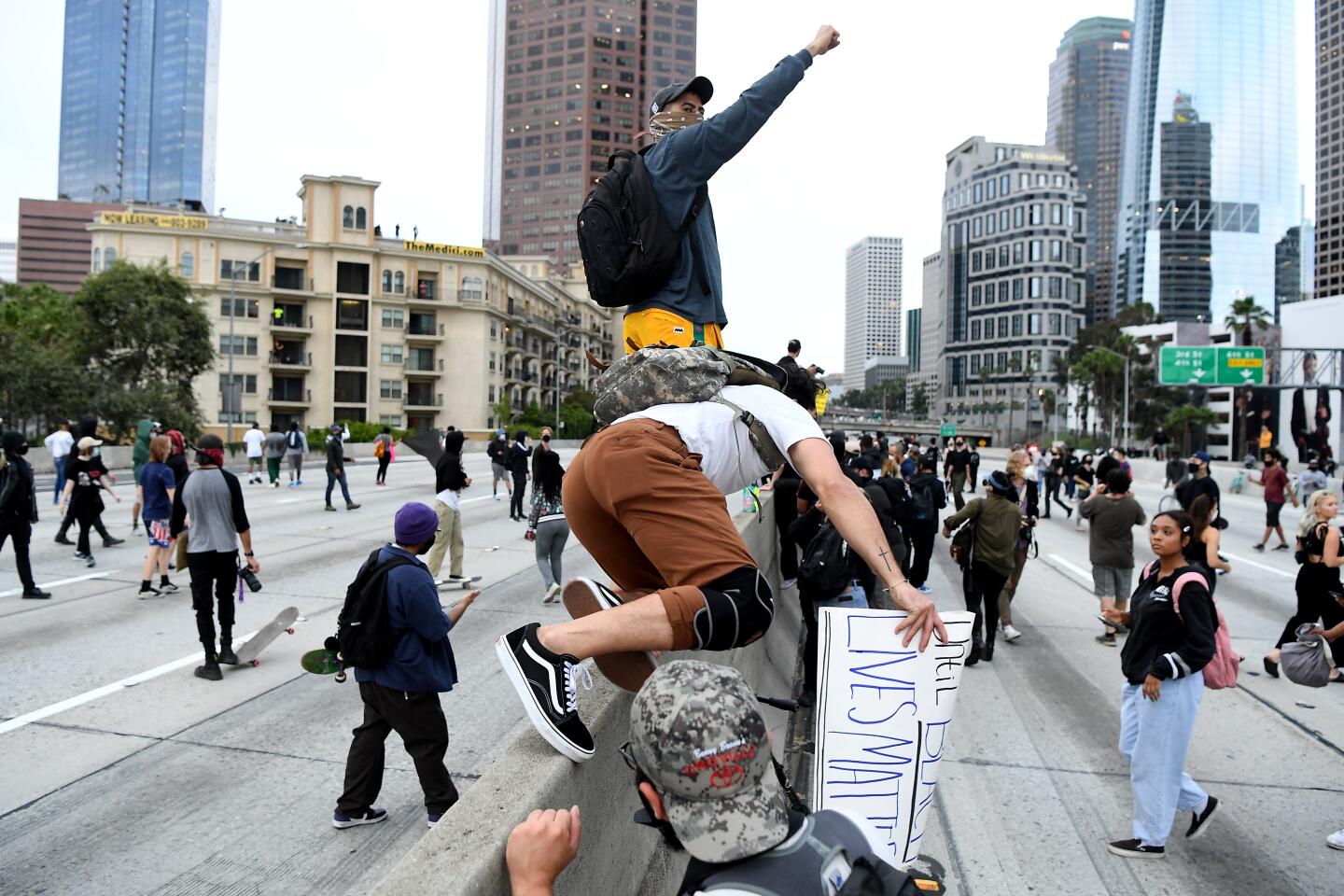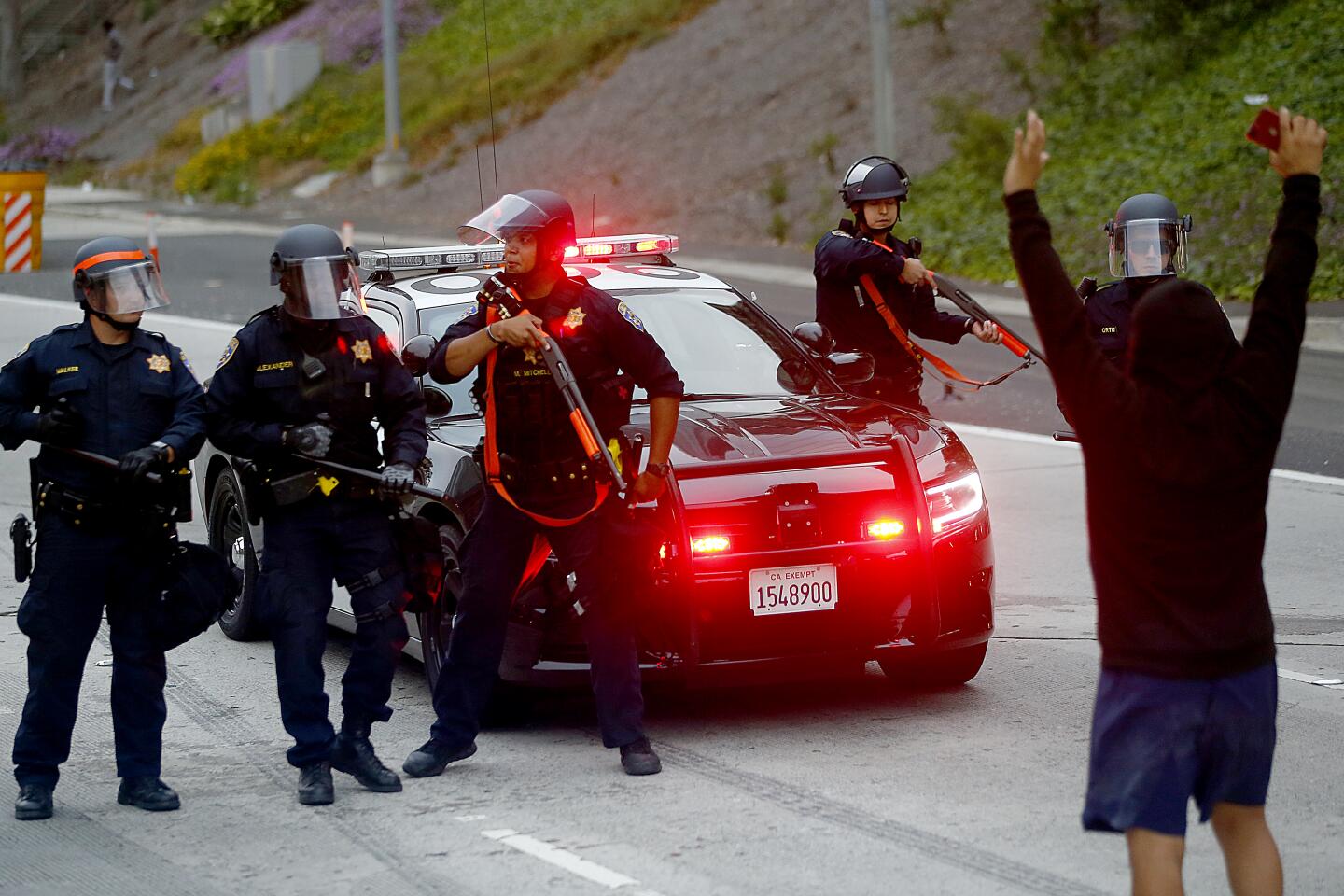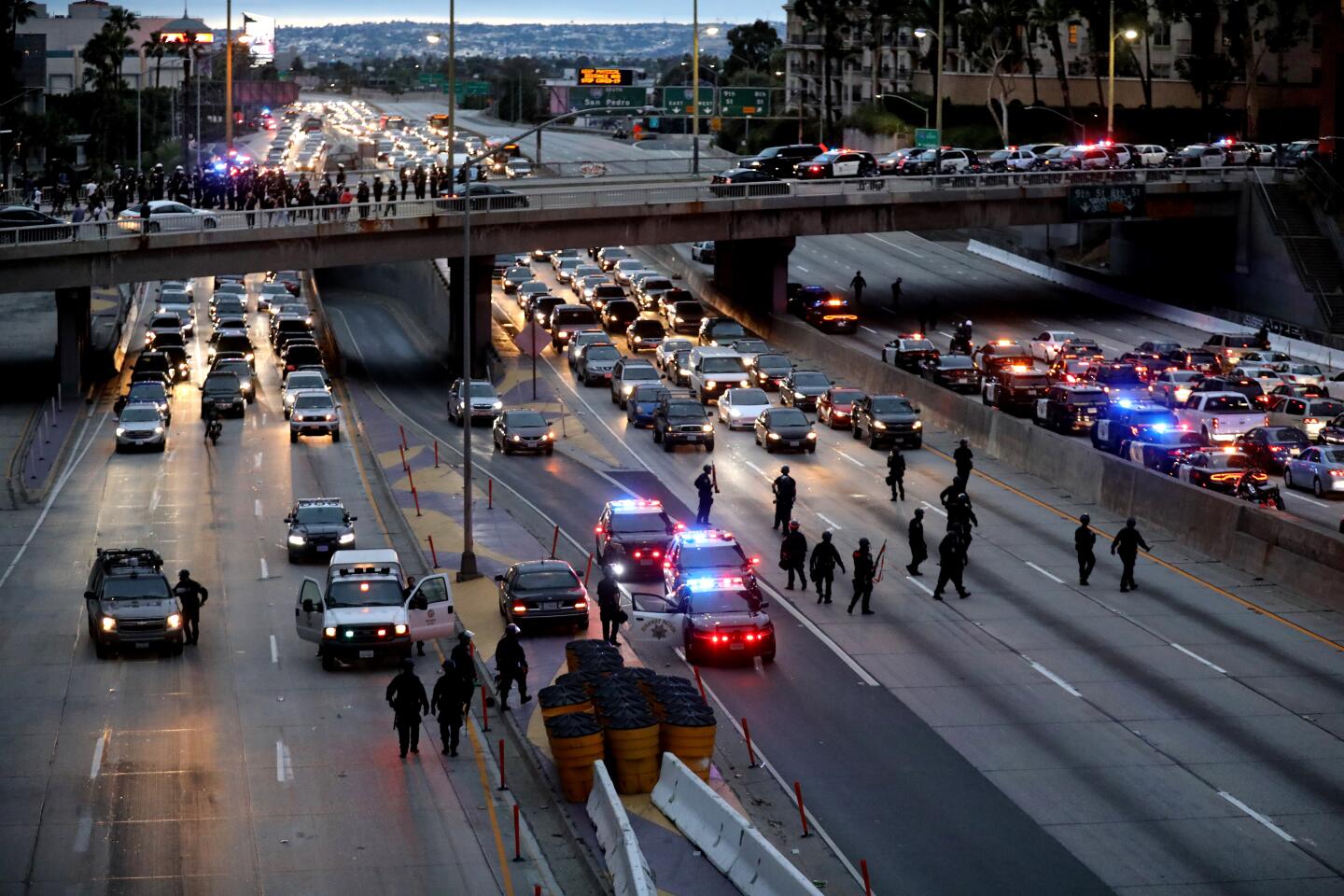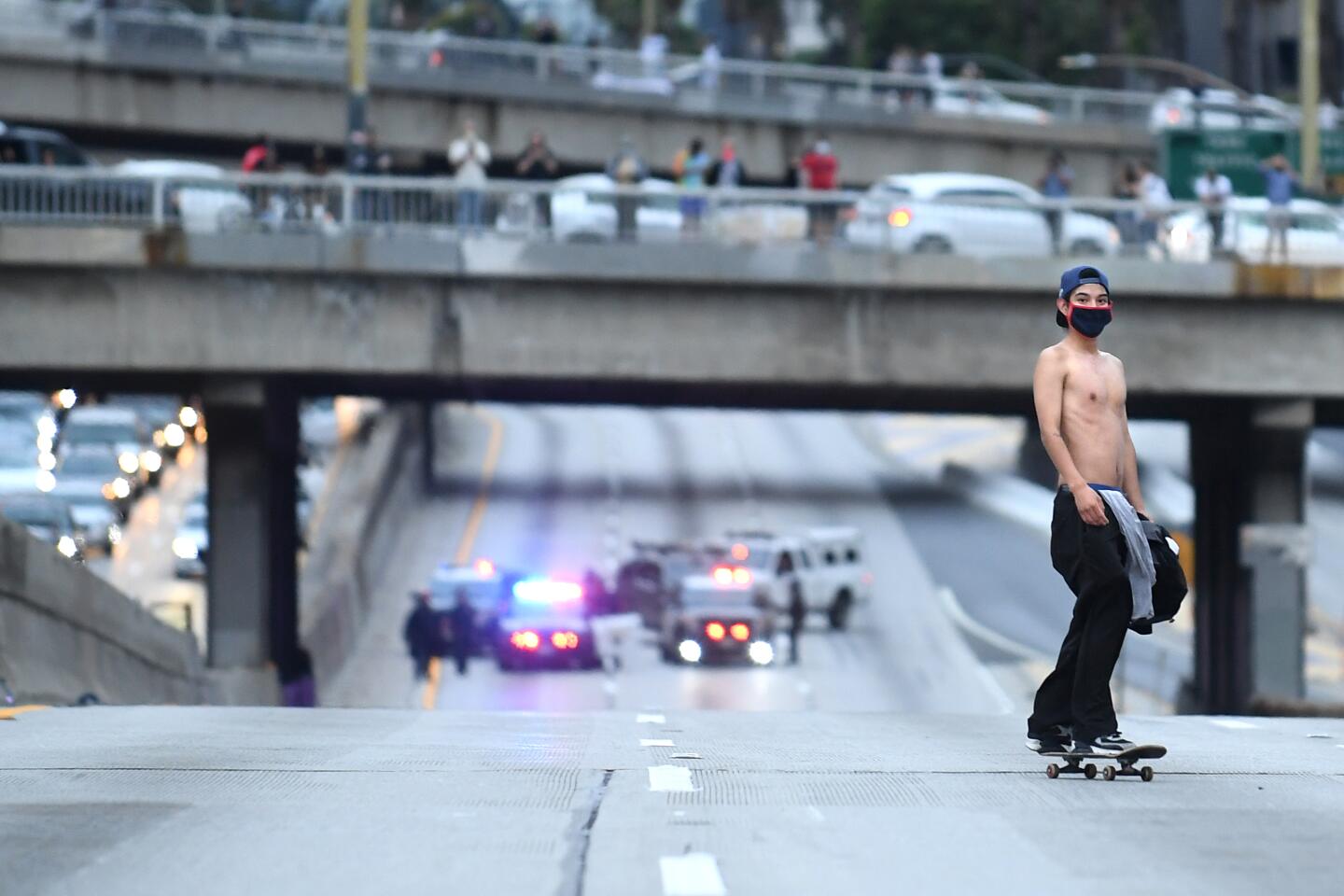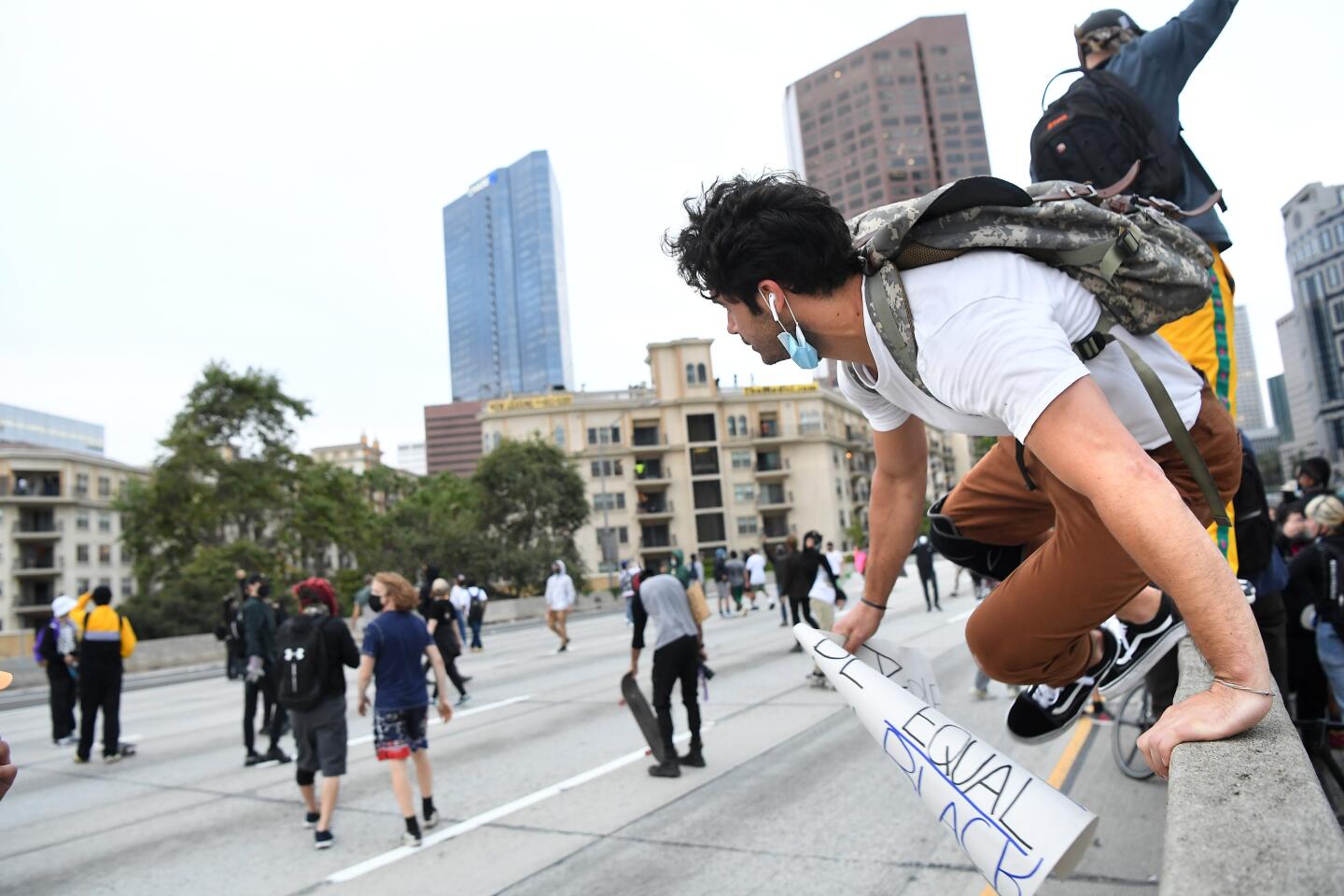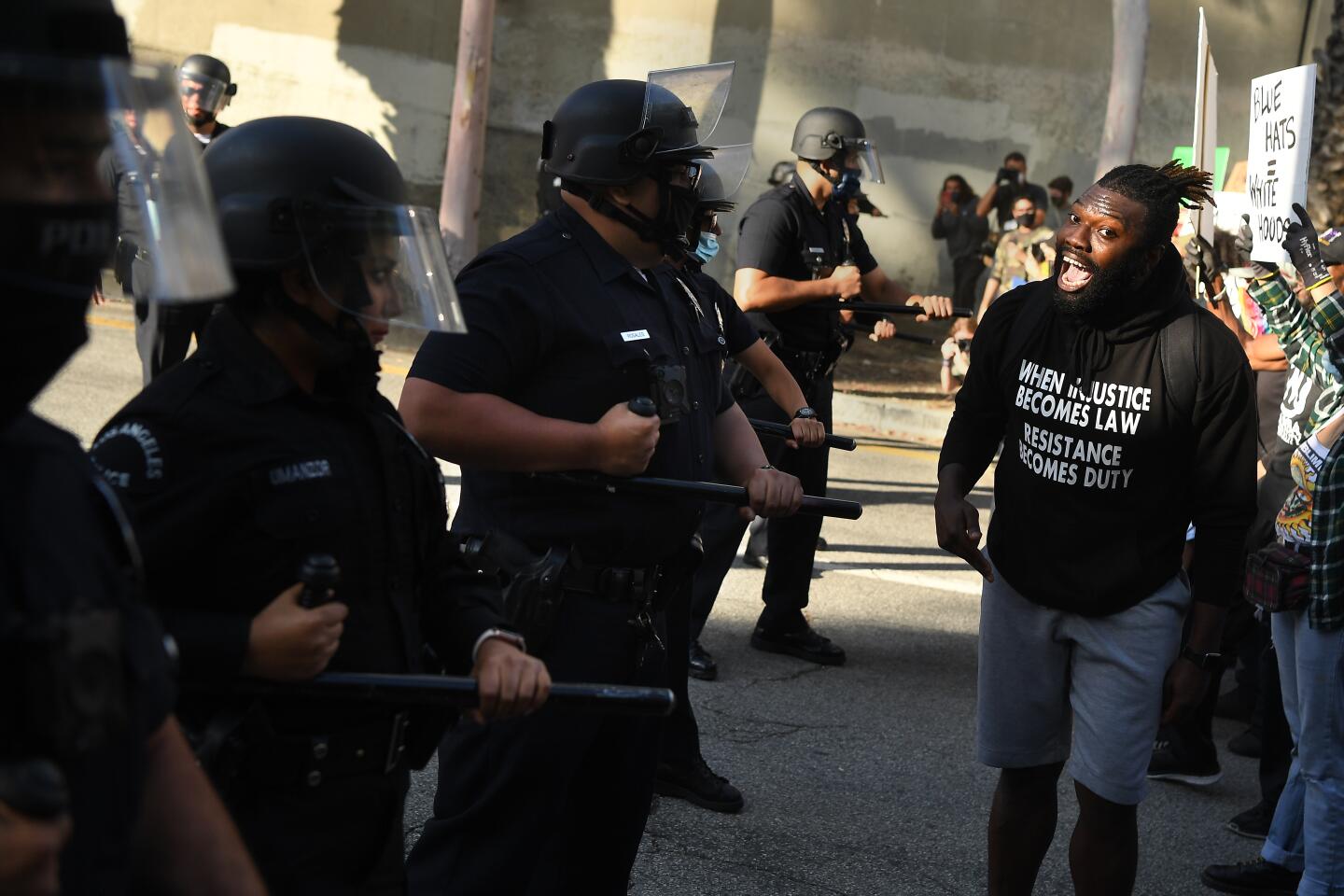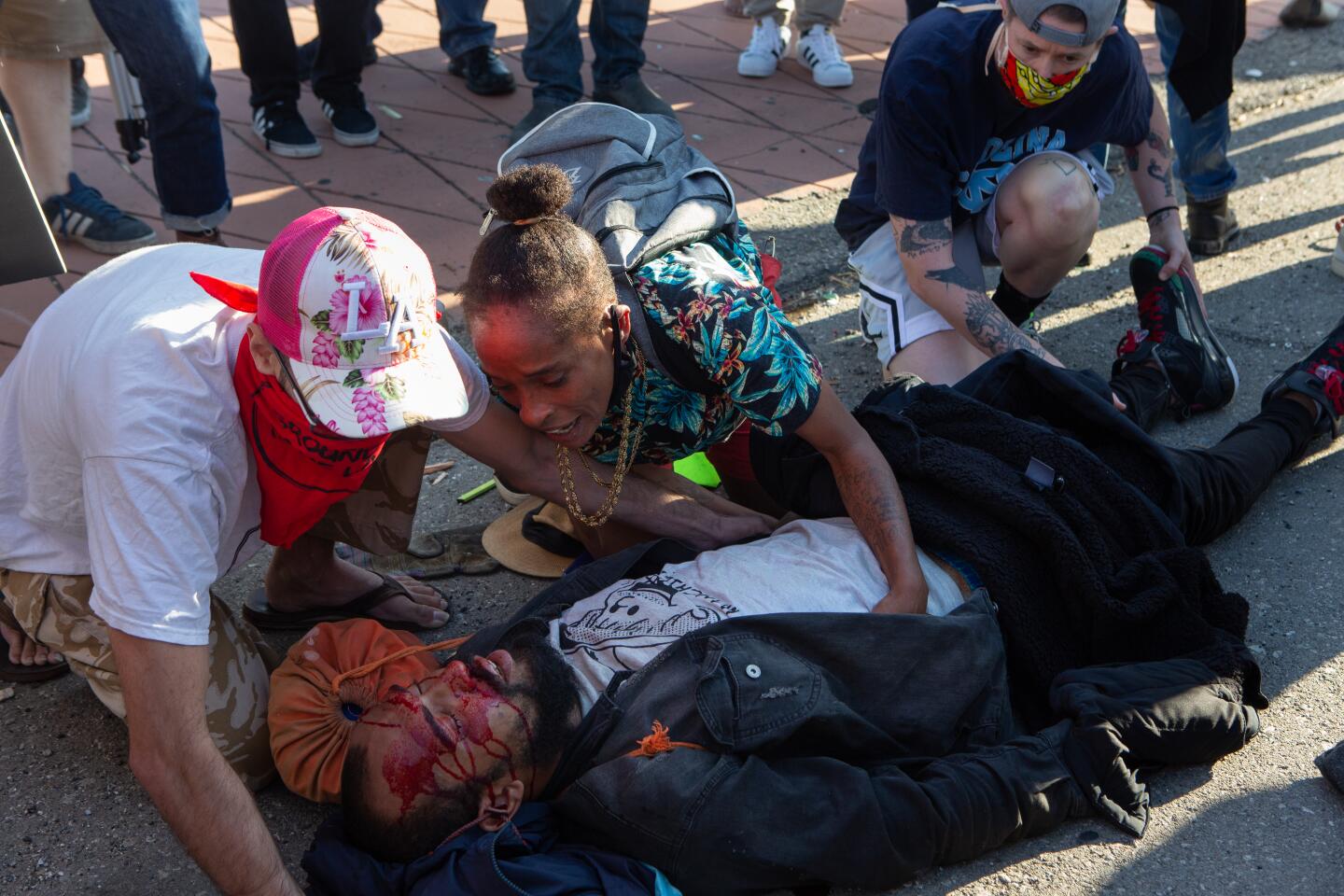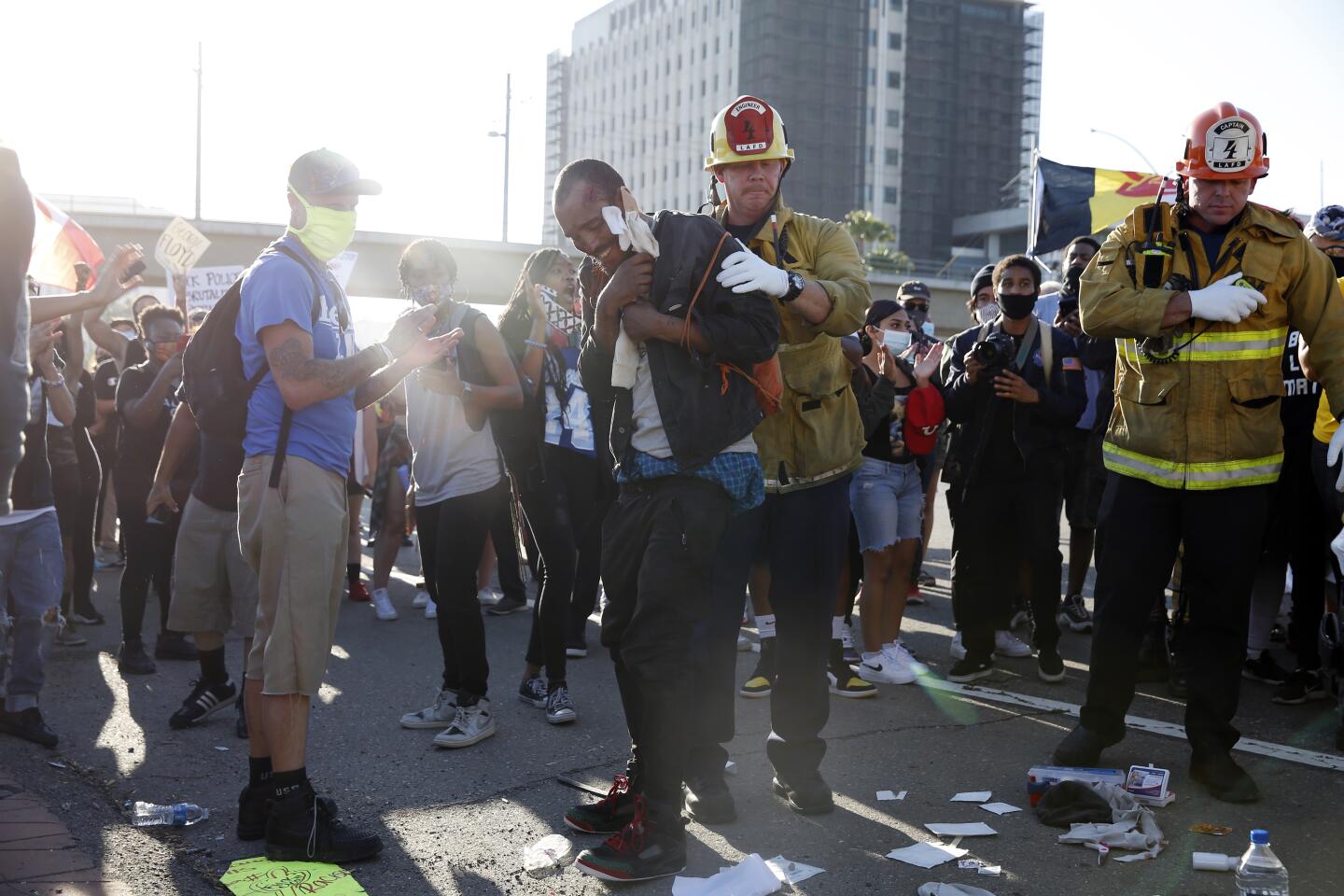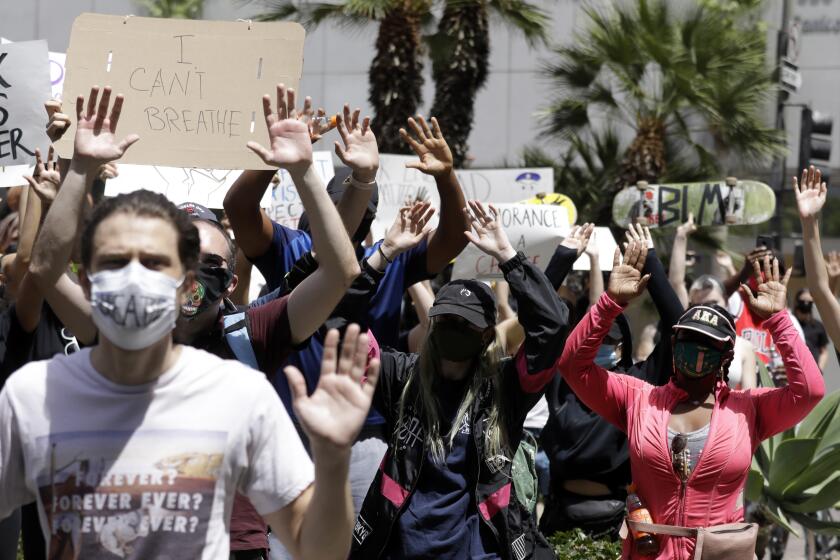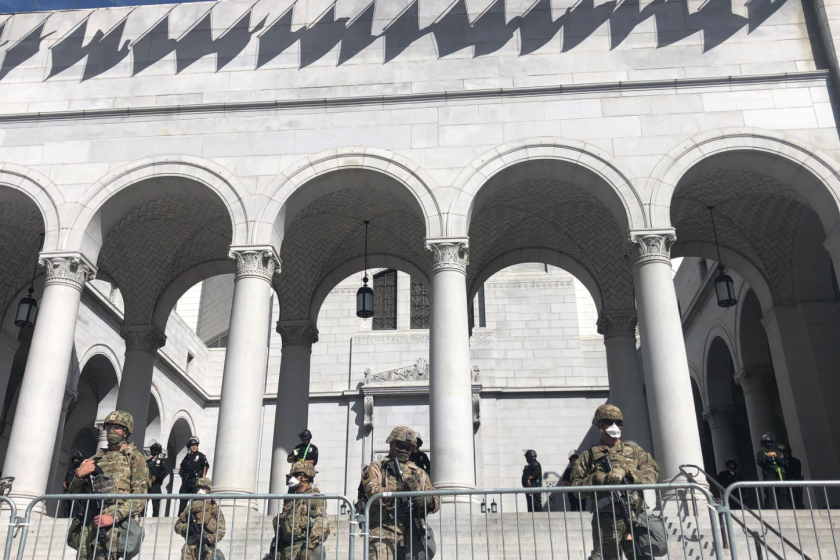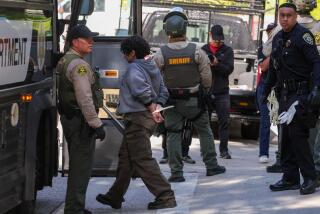LAPD focused on peaceful protesters while ignoring looting, business owners say
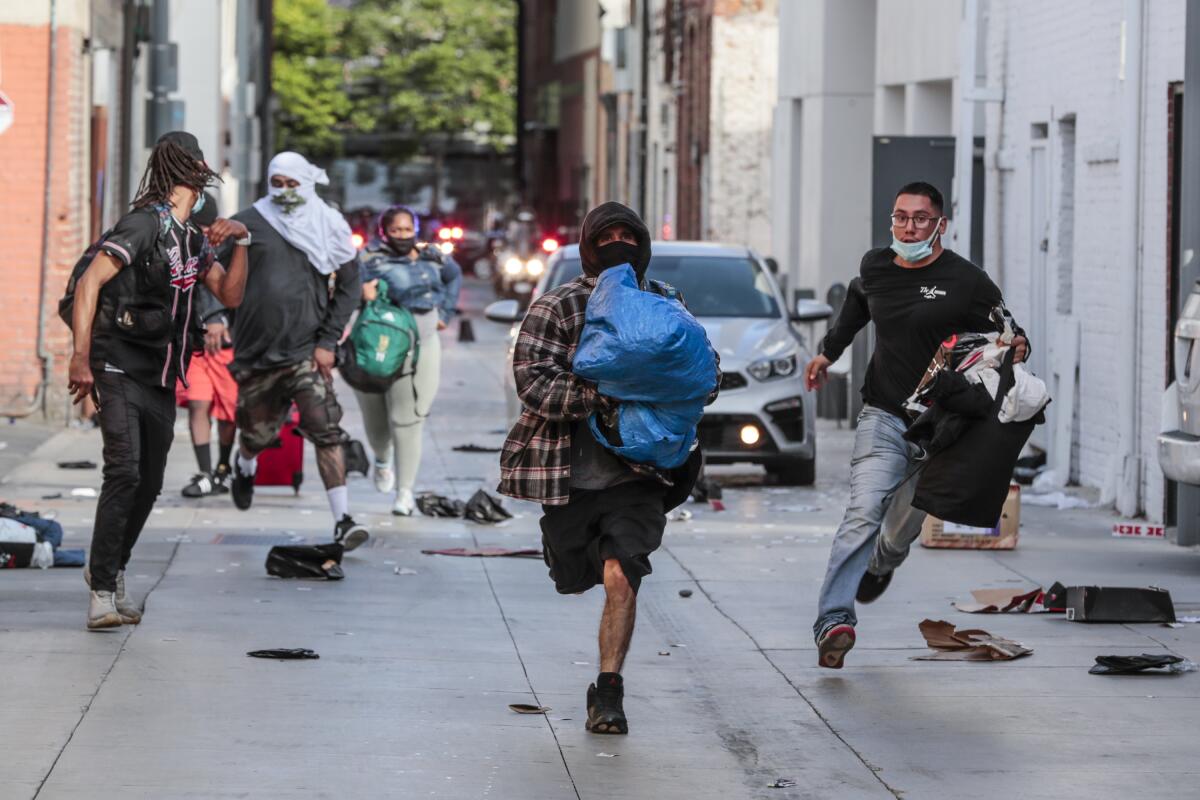
- Share via
Aaron Landy watched for hours on Saturday night as people on foot and then in cars moved up and down Melrose Avenue looting stores and setting them on fire, doing wheelies in the street and tagging walls with graffiti.
All the while, not a single police cruiser rolled by, Landy said, even though officers were staged in huge numbers not far away, squaring off with protesters.
Landy’s longtime Fairfax neighborhood, it seemed to him, had been completely abandoned to lawlessness.
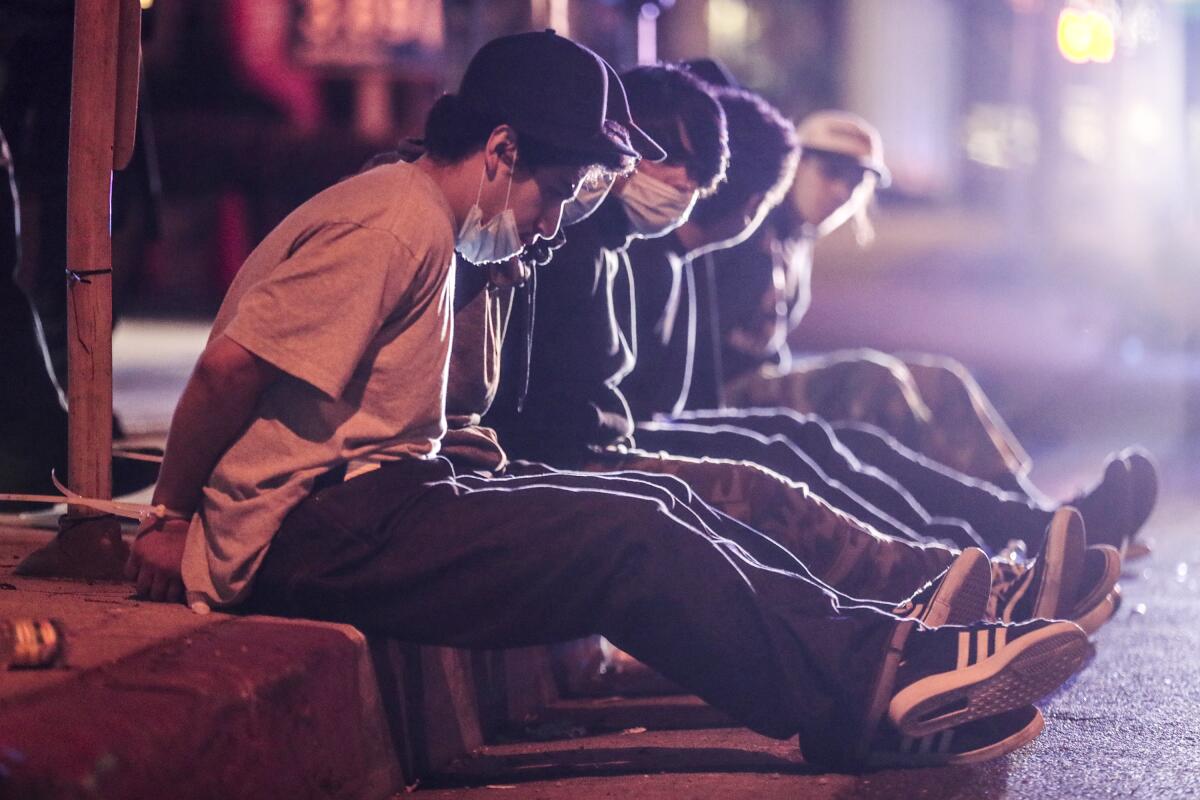
“Where are the police? They’re nowhere. There’s not a policeman in sight. It’s just like a free-for-all,” Landy remembered thinking. “It was just shocking. I was outraged.”
He wasn’t alone. From the Grove shopping mall and Santa Monica’s business district to downtown Long Beach, television beamed live images all weekend of looters breaking into stores and stealing merchandise — often without officers in sight.
The mass protests over the death of George Floyd in Minneapolis police custody have proved a vexing challenge for law enforcement agencies. They have been encouraging peaceful demonstrations, but in recent days watched them devolve as looters and vandals broke off from the peaceful protesters, stealing and setting fires.
Get live updates from Los Angeles Times journalists as they report on protests across the U.S. after the death of George Floyd while in police custody.
Police have often found themselves outmanned as they tried to control protests while also trying to chase down the looters, some of whom have moved through demonstration areas in cars hitting numerous businesses. One Los Angeles councilman likened the looting of a computer store on Melrose Avenue to a McDonald’s drive-through, which went unchecked and broadcast live for some time.
The L.A. Police Department had to have officers deployed around the city, because it was not sure where protesters and looters would hit. So when the Fairfax District became the focus of Saturday’s activities, it took hours for the LAPD to marshal more resources for the area.
Mayor Eric Garcetti has praised police officers for their restraint, even as he has sought to commiserate with protesters over their anger about Floyd’s death. He told them they had every right to be out in the street protesting, before instituting a curfew Saturday night to stem what he said was growing violence in the streets.
Earlier on Saturday, Police Chief Michel Moore got cheers from a crowd after he condemned the actions of Minneapolis Officer Derek Chauvin, who knelt on Floyd’s neck for more than eight minutes leading up to his death, and who has been criminally charged in the case. But later, when violence erupted and fires started to be set, Moore declared gatherings unlawful, ordered people to disperse and began deploying “strategies that we know are harsh and are strong but that we know are necessary” to keep people safe, he said Sunday.
Moore said officers showed tremendous effort in a tough situation, where acts of violence and dangerous situations were cropping up all around them.
“It wasn’t perfect, our actions will never be. But our commitment to this community is to do our very best and I am proud of what I’ve seen,” he said.
Garcetti said Moore never came to him and said he did not have enough officers. Still, Garcetti said the escalation of events merited asking for the National Guard to provide some much-needed relief for a department that was spread thin.
Both Garcetti and Moore said they were conscious of striking the right tone in part because the LAPD has not done so in the past.
In 2007, the LAPD took blame for a melee that broke out in MacArthur Park, where TV footage showed officers swinging batons and firing less-than-lethal rounds at immigration rights protesters and journalists, leading to a stack of claims of excessive force.
The LAPD’s failure to quickly respond to rioting after the acquittal of officers in the beating of Rodney King in 1992 continue to haunt the city and its leaders.
Some said Sunday that, with protests continuing to play out across the city even with the National Guard in town, it was premature to judge the department’s response to the latest unrest.
“It’s way too early,” said Lt. Craig Lally, president of the police union that represents LAPD officers. “Every situation is different.”
Officials fear protests are ‘super-spreader’ events for coronavirus. Marchers say worth the risk
On Sunday, the LAPD found itself caught in the middle, with some protesters saying officers were too aggressive, and some merchants and residents saying they were not aggressive enough.
Protesters have questioned the department’s commitment to deescalation and blamed LAPD officers in riot gear for stoking tensions. They have blasted police for shooting protesters with beanbags and rubber bullets to disperse them, and said clashes between protesters and police skirmish lines were largely the result of police aggression.
Chris Murillo, 36, of Santa Ana, who said he was shot with a projectile in downtown Los Angeles on Saturday evening, said the officers had opened fire without reason or warning. He said the use of force was indicative of a broader trend in law enforcement, of intimidating citizens into compliance without justification.
“A lot of different emotions right now,” Murillo said of being shot. “I don’t want to get arrested, but this is something that’s important to me.”
Other longtime residents and business owners, meanwhile, also said the police were in the wrong, but for different reasons. They said they felt police weren’t tough enough with looters on Saturday, sticking to large tactical formations and tracking protesters even as they abandoned other streets to criminals hellbent on filling their cars with stolen goods and torching establishments.
And, some law enforcement officials, current and retired, also criticized the LAPD response, saying it was riddled with flaws — from acquiescing to protesters gathering in huge numbers in a business district like Fairfax, to delaying two moves that would have increased manpower sooner: mobilizing the entire police force into action by canceling off-days and vacations, and calling in the National Guard.
Well into Saturday afternoon, Garcetti dismissed the idea of calling in the National Guard, saying the LAPD had the situation under control and calling on Angelenos and show their “better angels” by avoiding mayhem. He requested the guard enter the city hours later, leading to their arrival in the overnight hours.
LAPD teams led by Moore had pushed a large protest group through Fairfax. After the protest at Pan Pacific Park began spilling outward, police asked protesters to disperse but were ignored. Moore said he considered arresting everyone, but there were too many protesters and not enough officers.
The National Guard was deployed in L.A. during periods of unrest in 1965 and 1992, and after the Northridge earthquake in 1994. On Sunday, Humvees rolled through downtown after Mayor Eric Garcetti requested 1,000 troops.
So, “rather than get in a physical fight with everyone,” he said, he determined the group simply had to be dispersed — and that the direction to push them was north. To the east, there were more protesters and the police command center, he said. To the west, there were burning vehicles.
To the north, there were more businesses, including on Melrose Avenue. But it was the only way to go, Moore said.
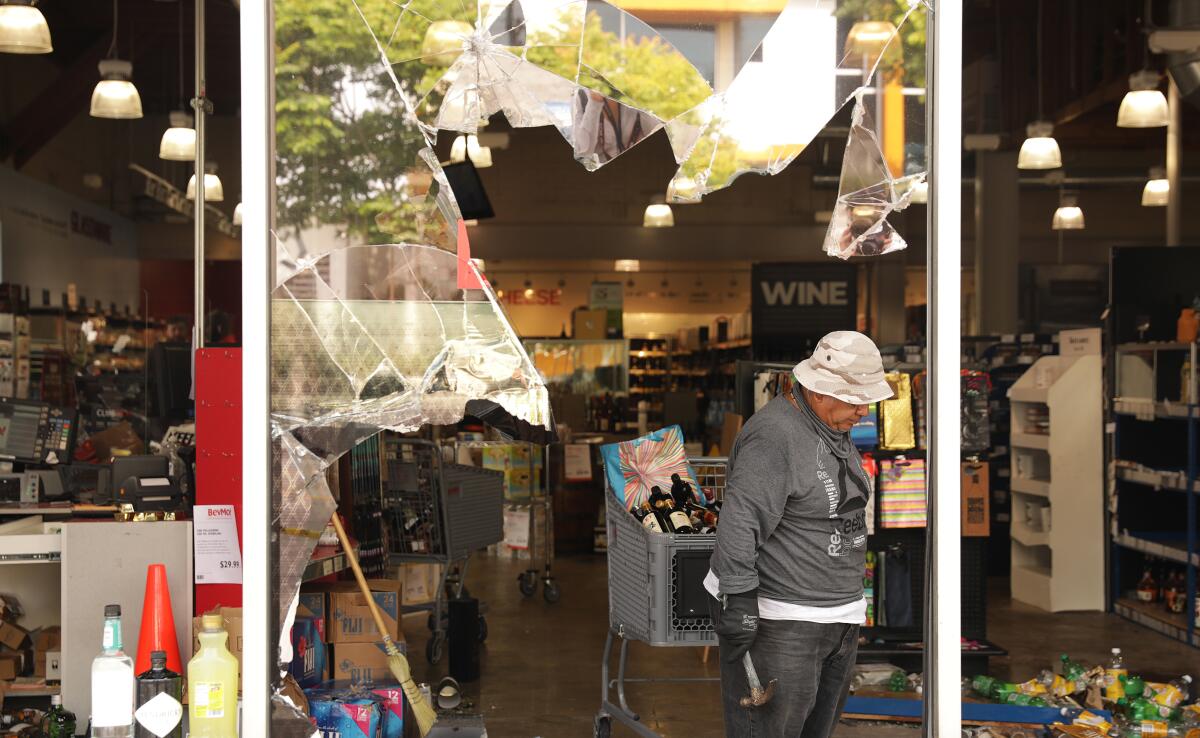
Charles “Sid” Heal, a retired Los Angeles County sheriff’s commander, said the LAPD decision to allow protesters access to an area like the Grove and Farmers Market was a miscalculation. Keeping crowds away from vulnerable areas is a key part of crowd control, he said.
“That means place sentries where you don’t want them to go in advance,” Heal said.
He also questioned Moore’s decision to be on the ground in one specific neighborhood, interacting with individual arrestees himself, instead of being in a command center where he could assess the entire picture of protest and unrest across the city.
Being on the front lines can endear a police leader to his officers, but doesn’t make much tactical sense, he said.
“As a commander, you need situational awareness. You need to be able to see the entire events to best manage and decide how to respond,” Heal said. “As a leader, you don’t want to get down in the weeds.”
Councilman Paul Koretz said he spoke to Rick Caruso, the developer of the Grove and a former police commissioner, “before it got as bad as it was,” and Caruso was not happy.
Many downtown L.A. merchants spent Sunday assessing damage from weekend looting.
“I would just say that he did not think well of the City Council and the mayor [and] our ability to protect the city and the businesses,” Koretz said. “It is devastating.”
Caruso declined to comment.
Lally, of the Los Angeles Police Protective League, said commanders often can get a better sense of a situation by being on the ground, as Moore was, and that officers have been doing an exemplary job given what they are facing.
“These officers are taking rocks and bottles, they’re being punched, and yet I think they’re very restrained and professional. They’re also getting tired. They’ve been out there for days now,” he said.
He also said that people judging the LAPD’s tactics from the outside looking in should be careful with their words given they don’t have all the facts.
“Unless you are there and seeing what’s on the ground, I don’t know how anybody can second-guess anyone,” he said.
Others say they spent hours observing the response directly, and found it lacking.
Landy, a 59-year-old filmmaker who had been taking video of the mayhem, ended his Saturday night in the emergency room getting a head scan after being attacked by four men who believed he had recorded them looting stores, he said.
Throughout the night, he said he observed a city that had been left to be destroyed, in ways that were, in his judgment, entirely preventable. A single store would be looted two, three or four times in a row, before finally being set ablaze, he said.
Landy and other locals personally prevented multiple fires that otherwise would have taken off, he said, including by pulling a burning mannequin out of Urban Outfitters. Neither police nor fire officials responded.
“It was just madness. And you were like, ‘Where is a cop? Where is a single cop?’” Landy said. “It was just an absolutely failed strategy.”
Times staff writer David Zahniser contributed to this report.
More to Read
Sign up for Essential California
The most important California stories and recommendations in your inbox every morning.
You may occasionally receive promotional content from the Los Angeles Times.
